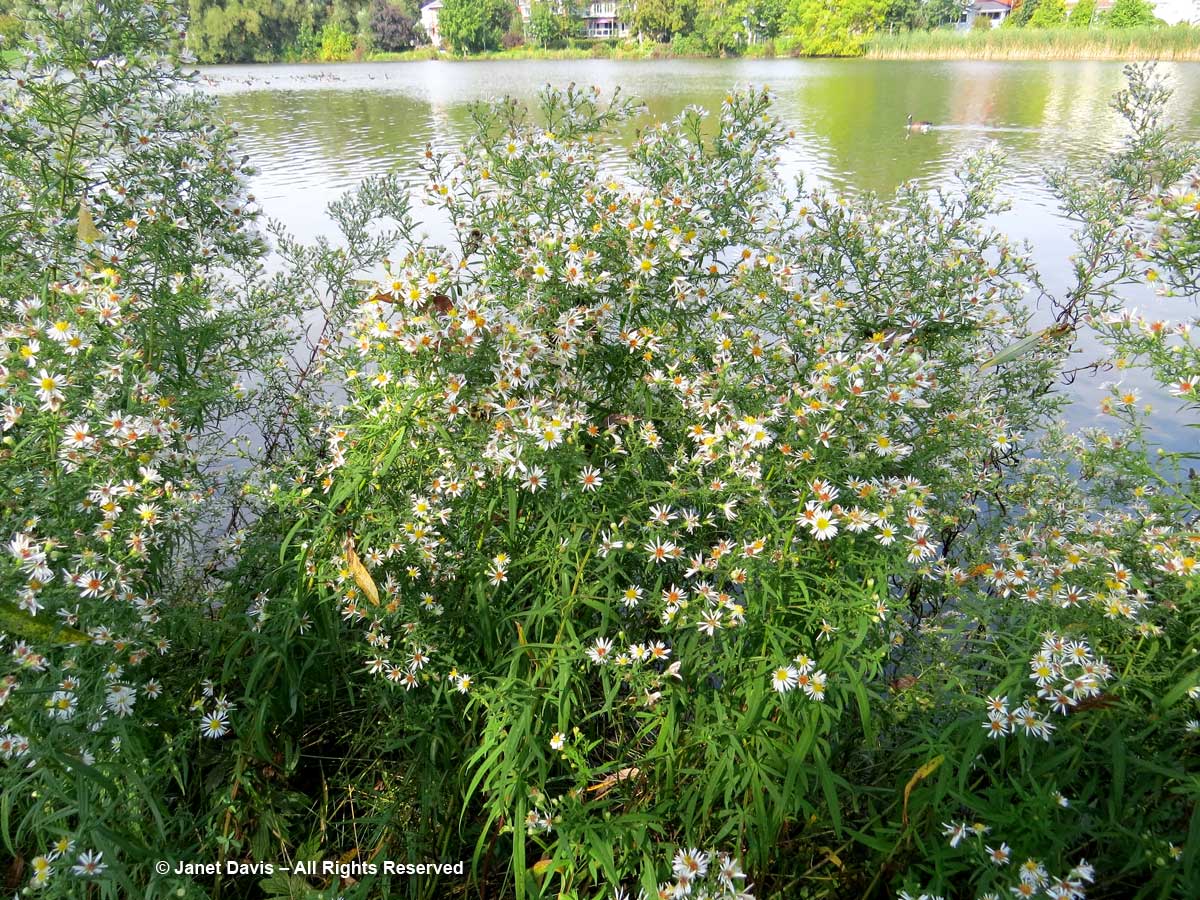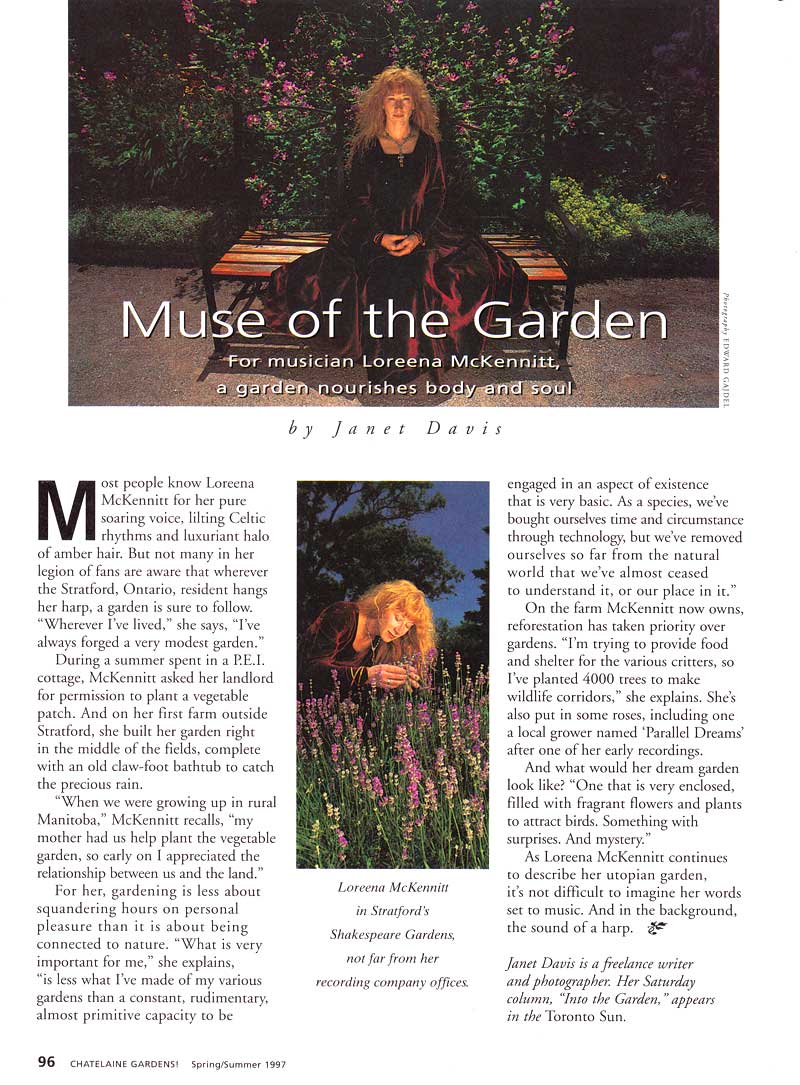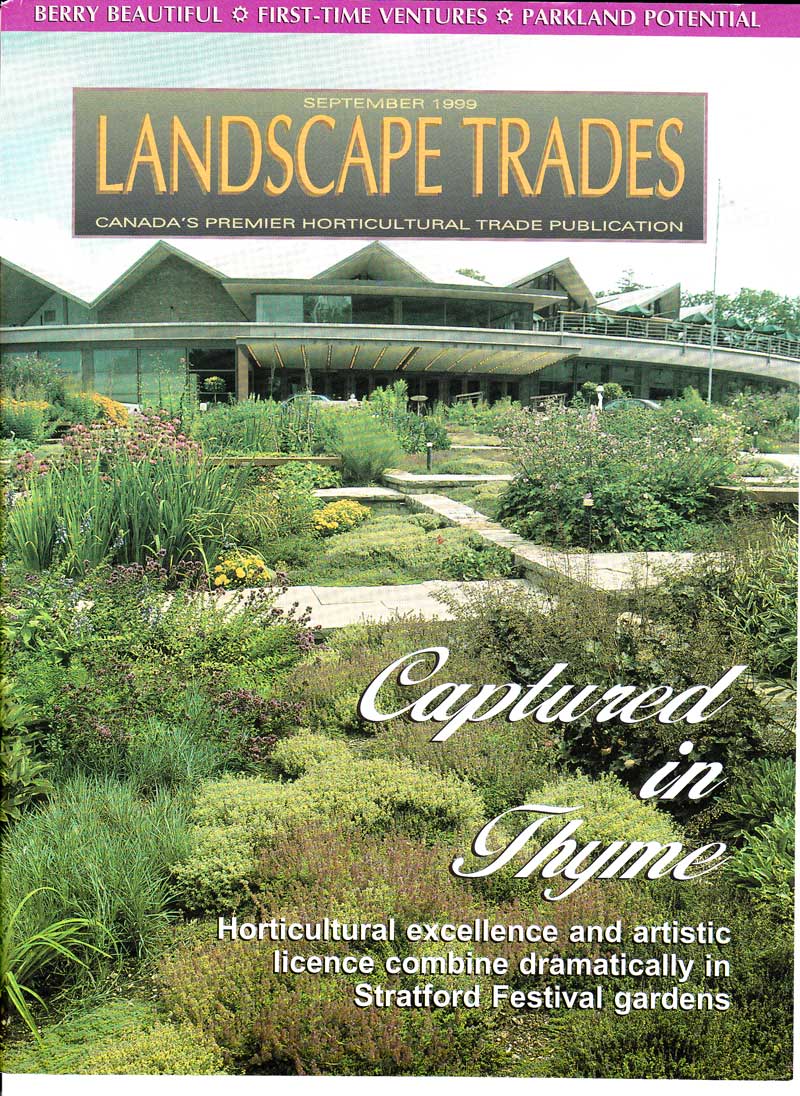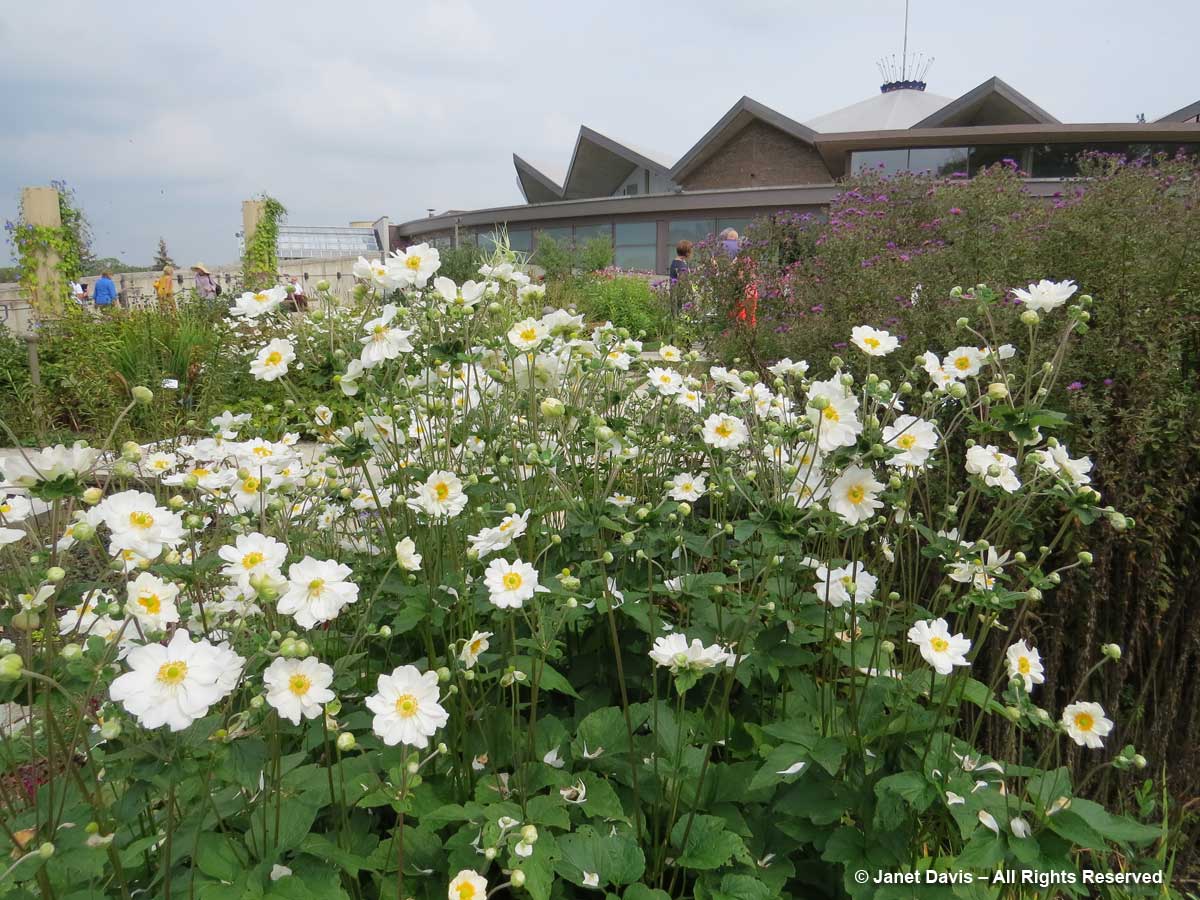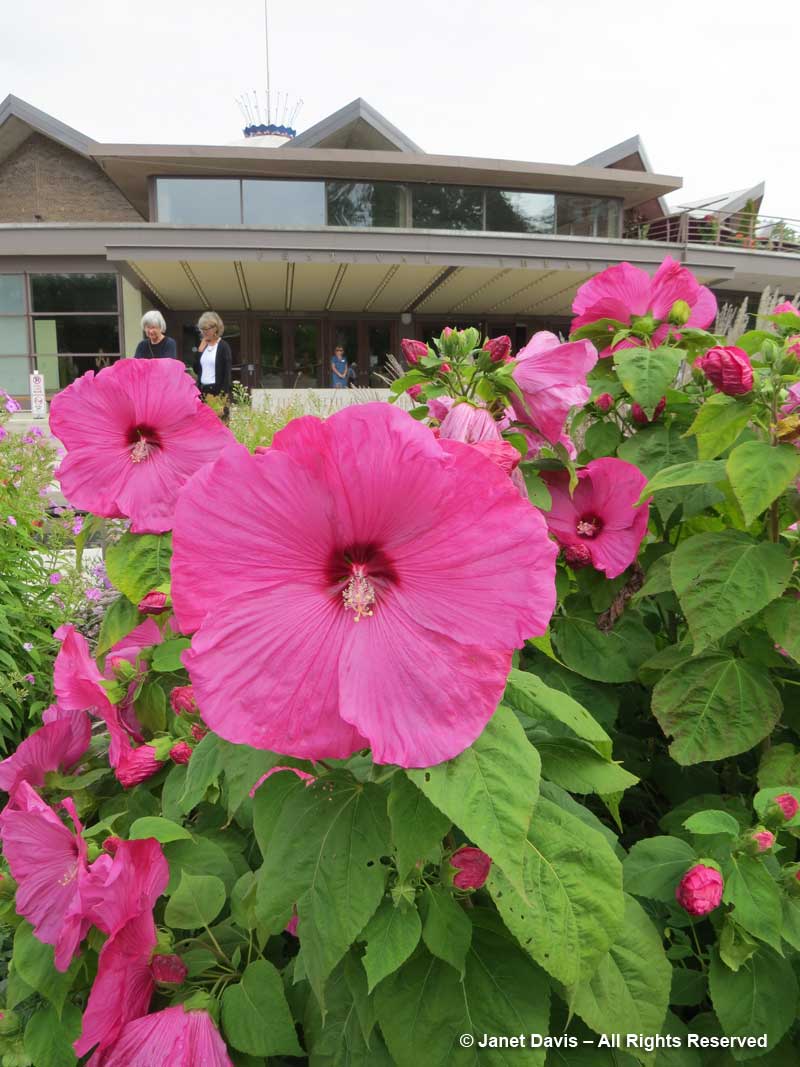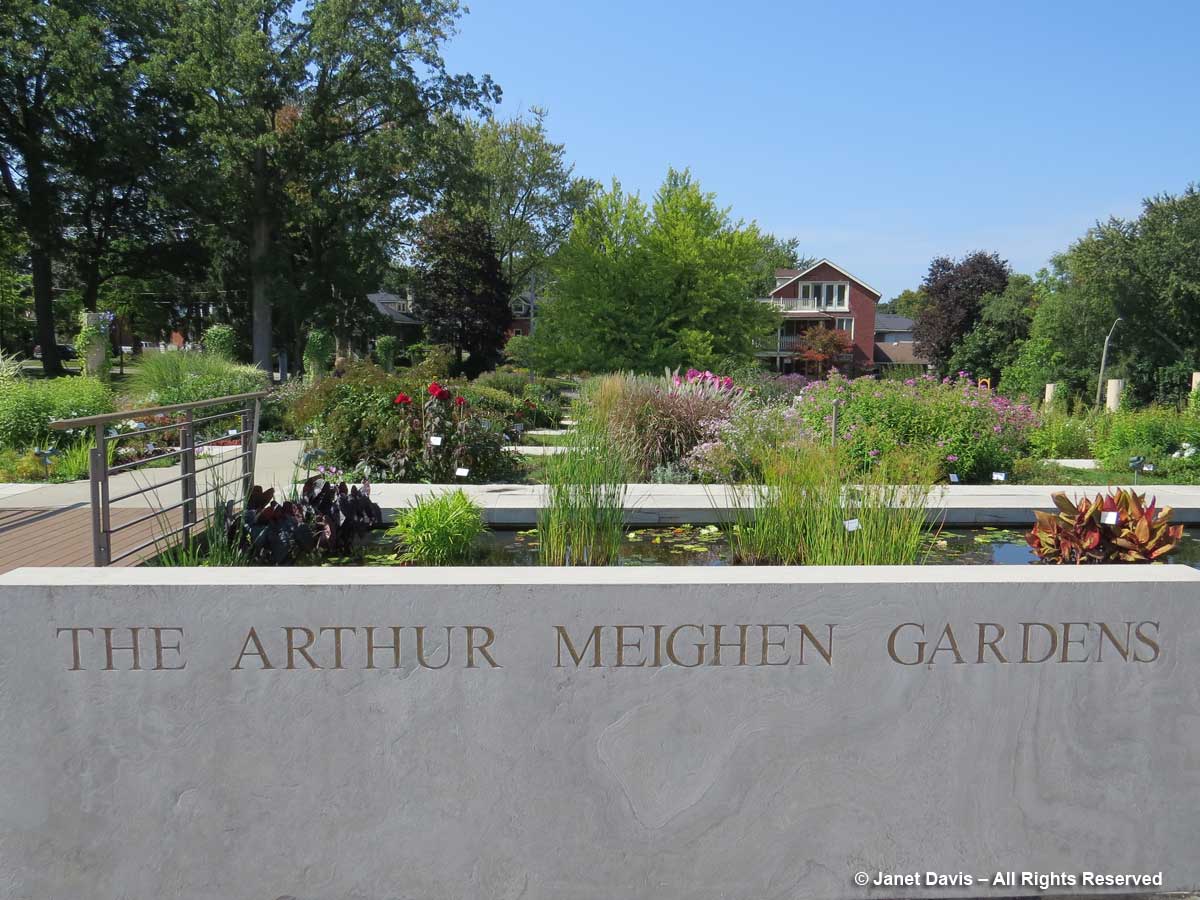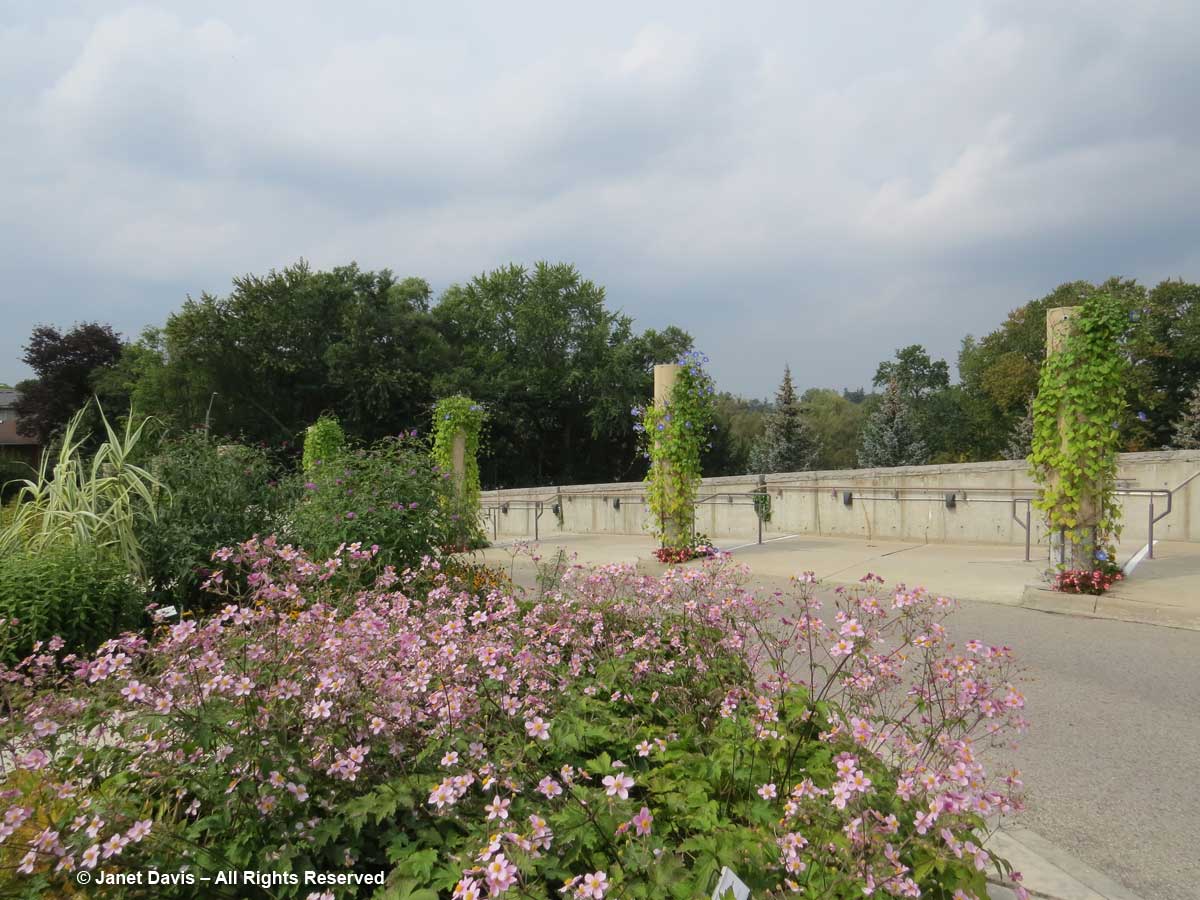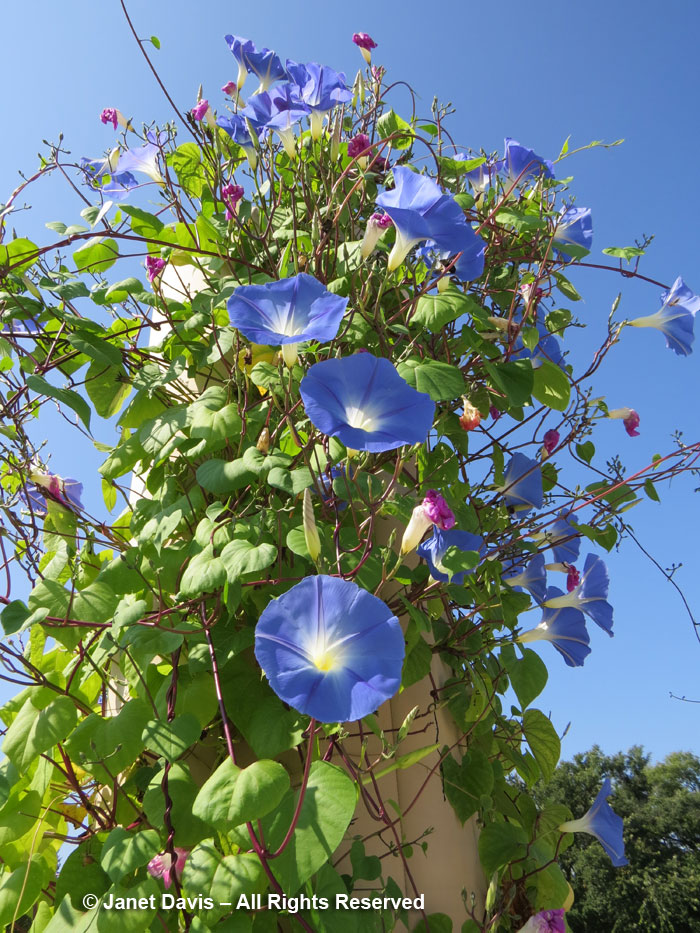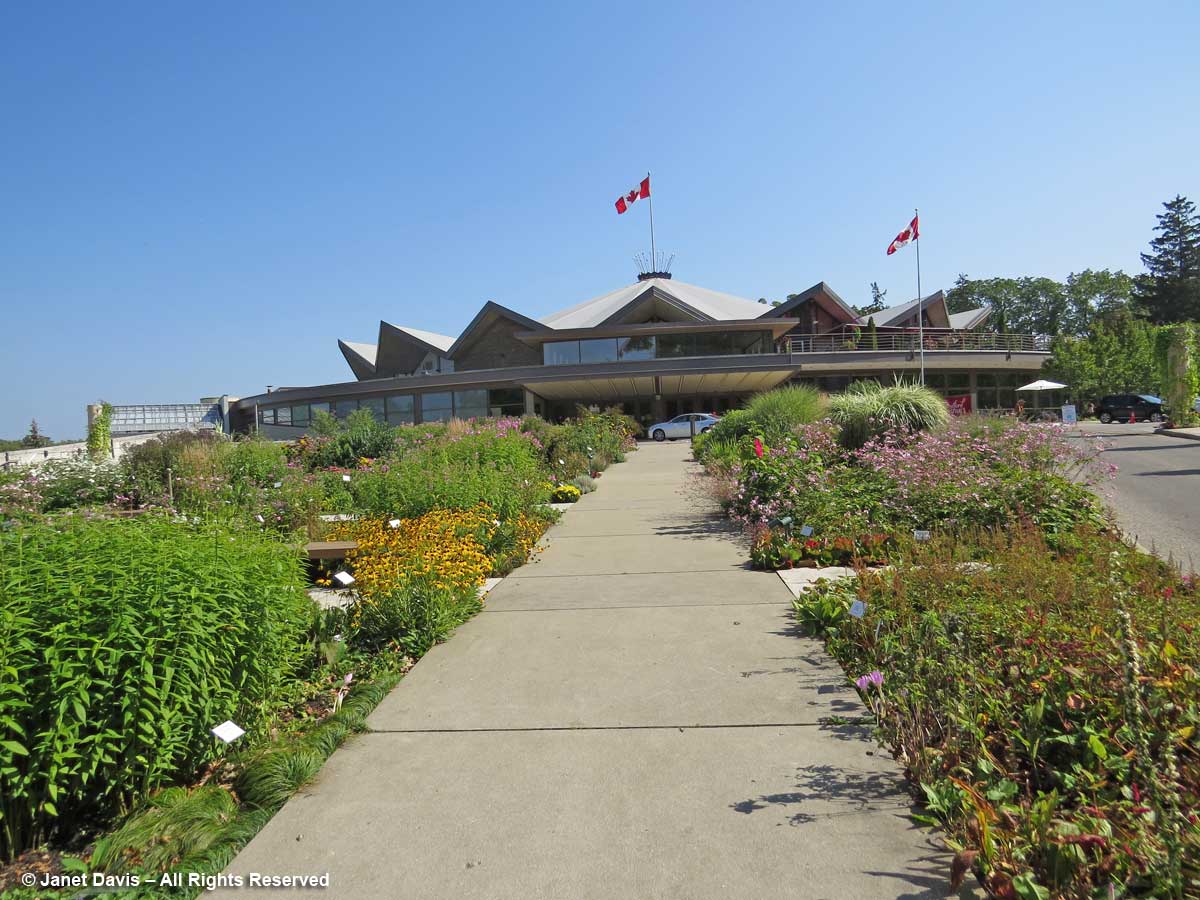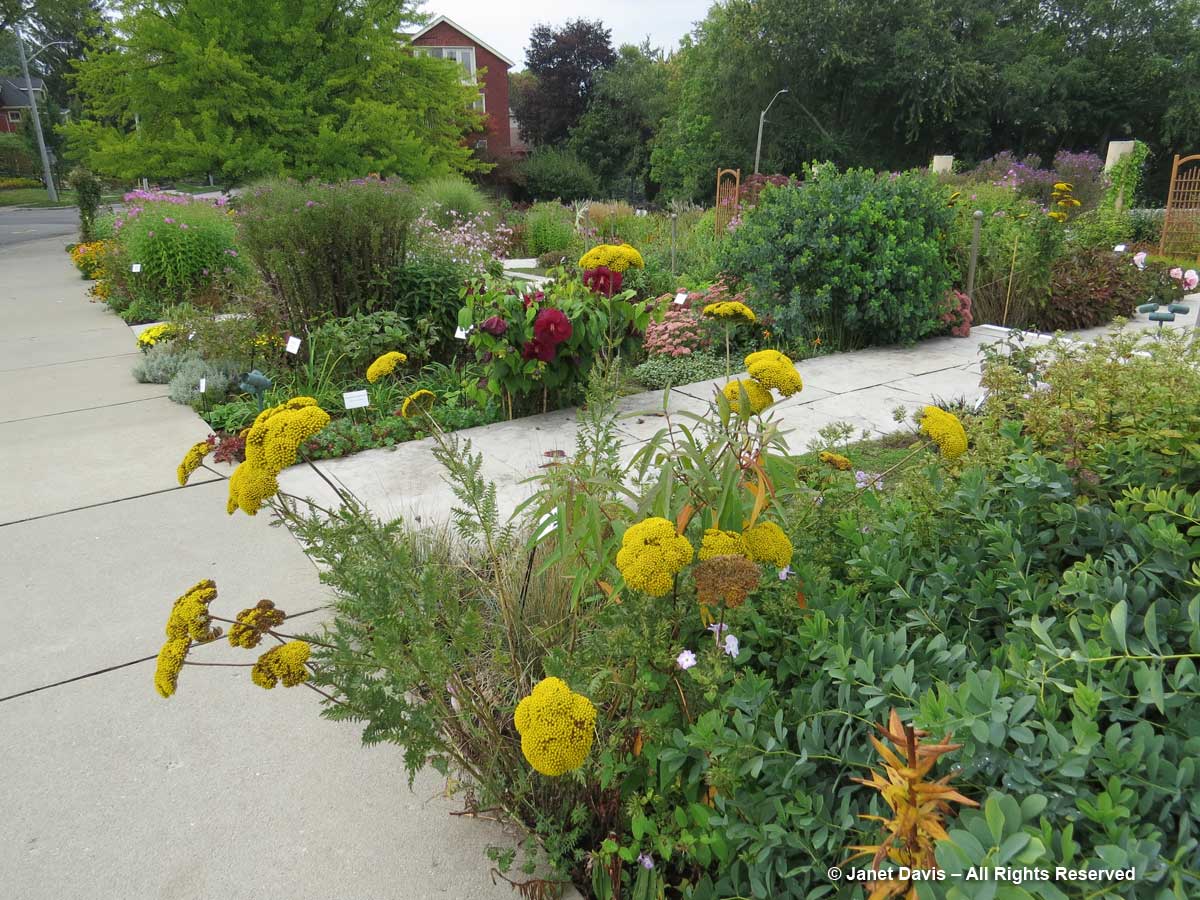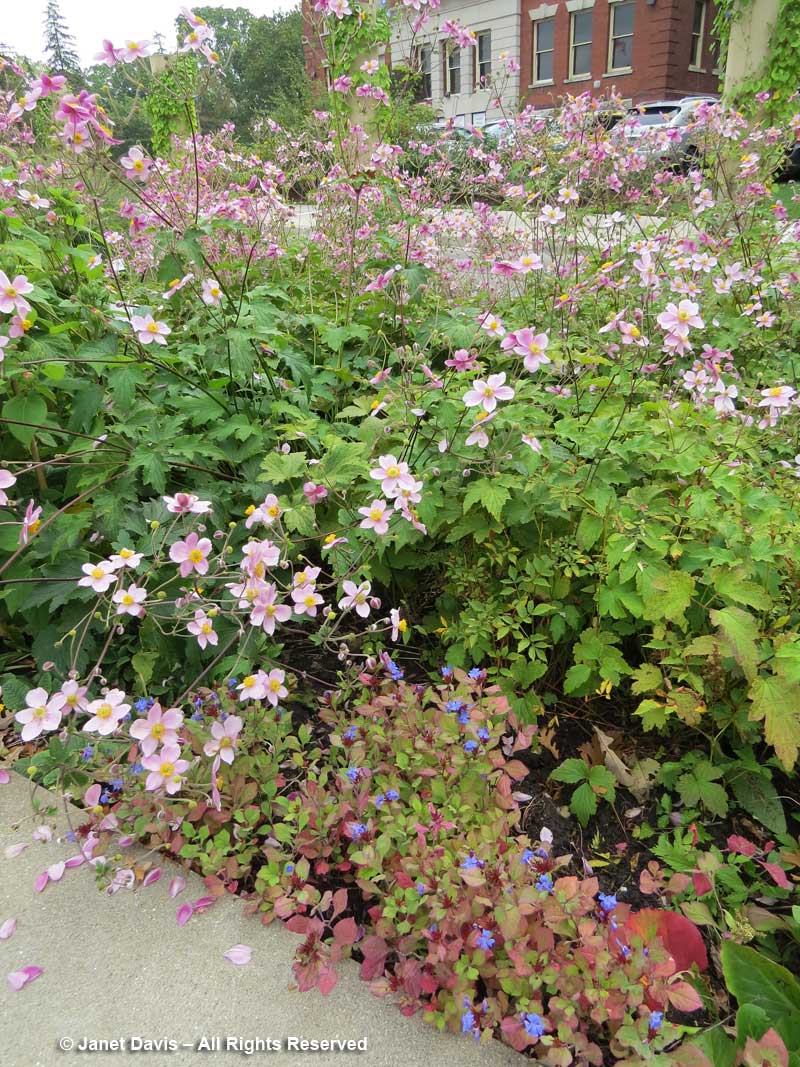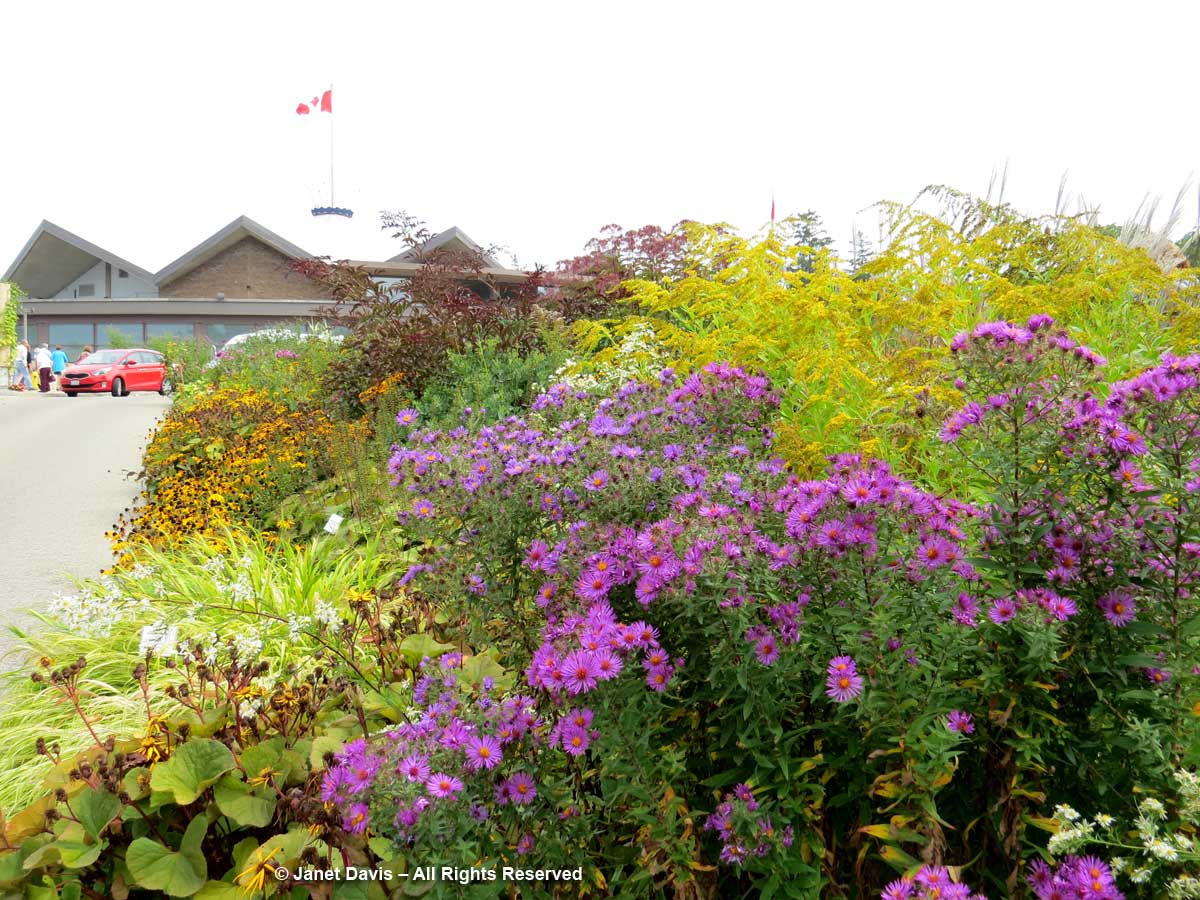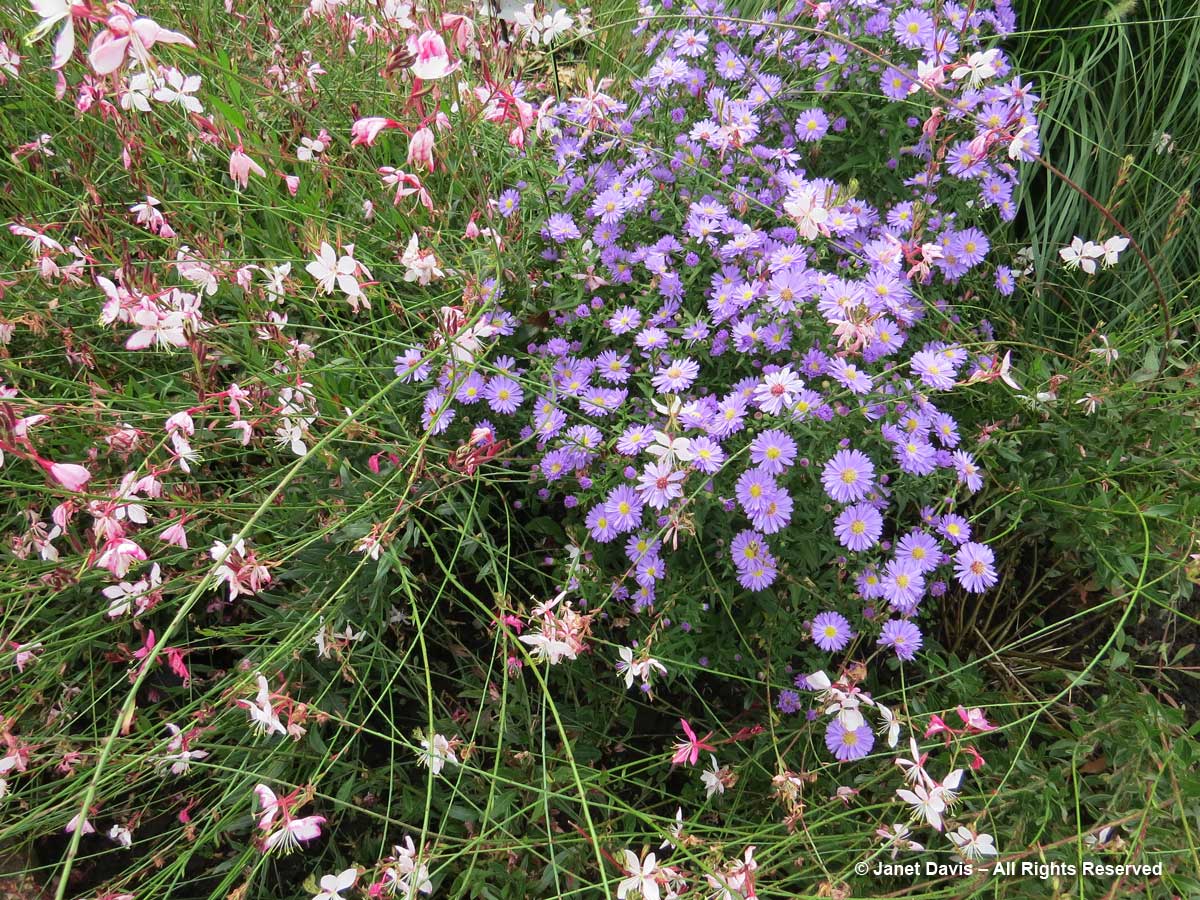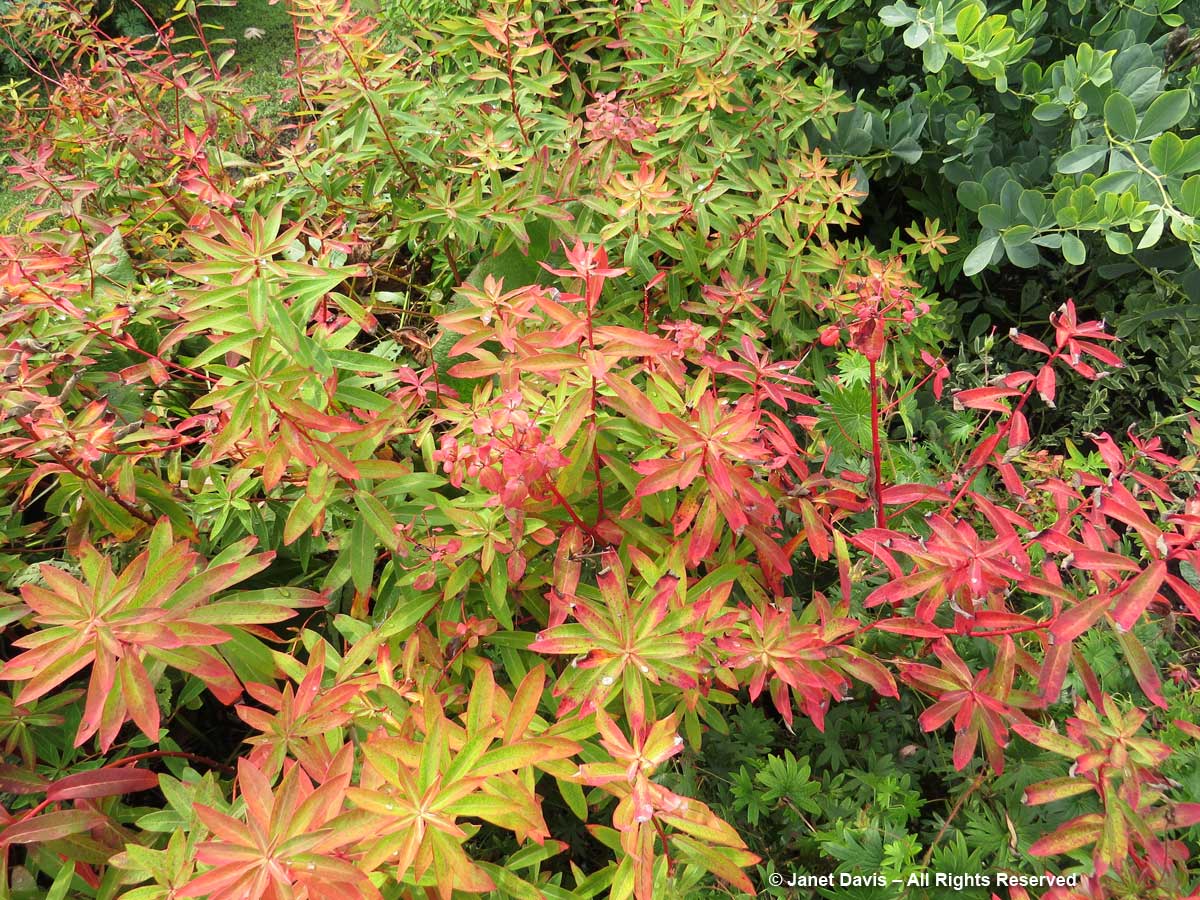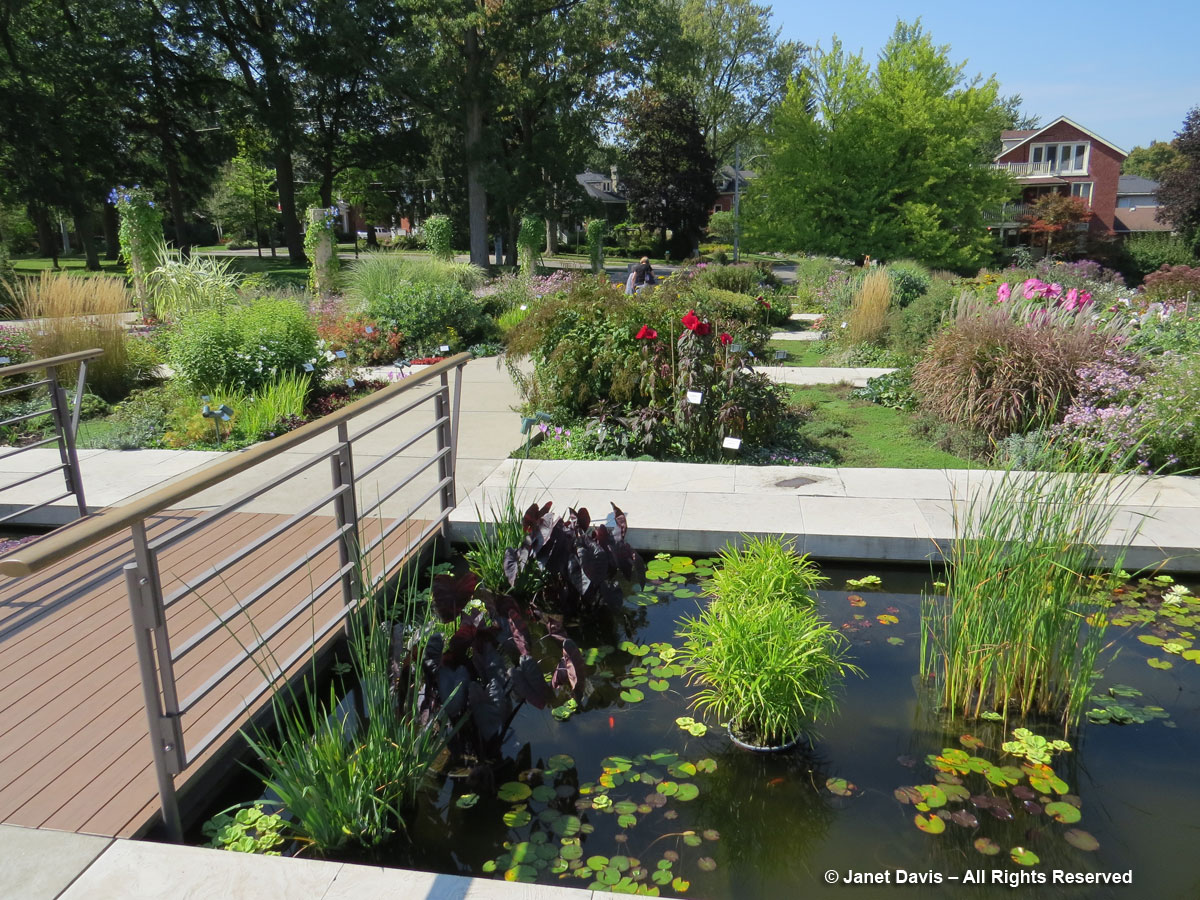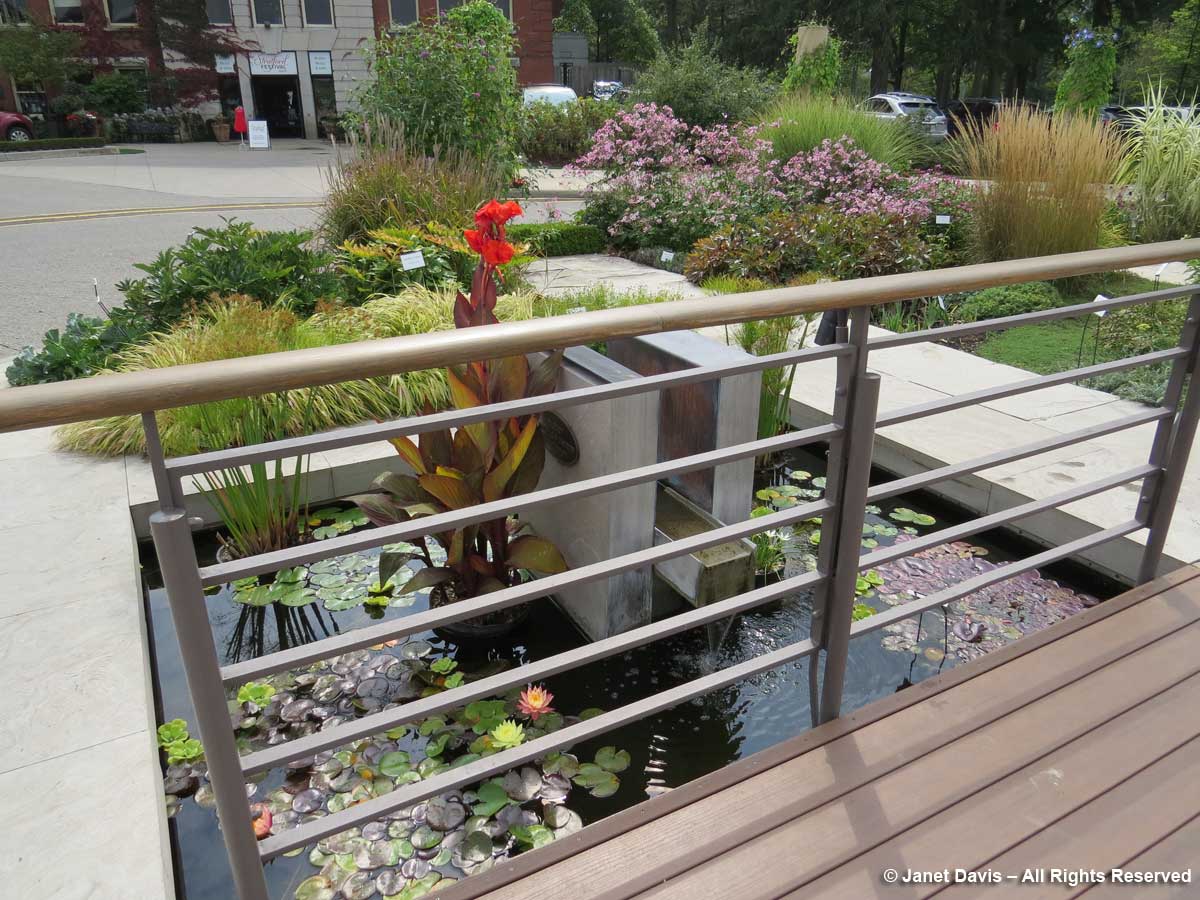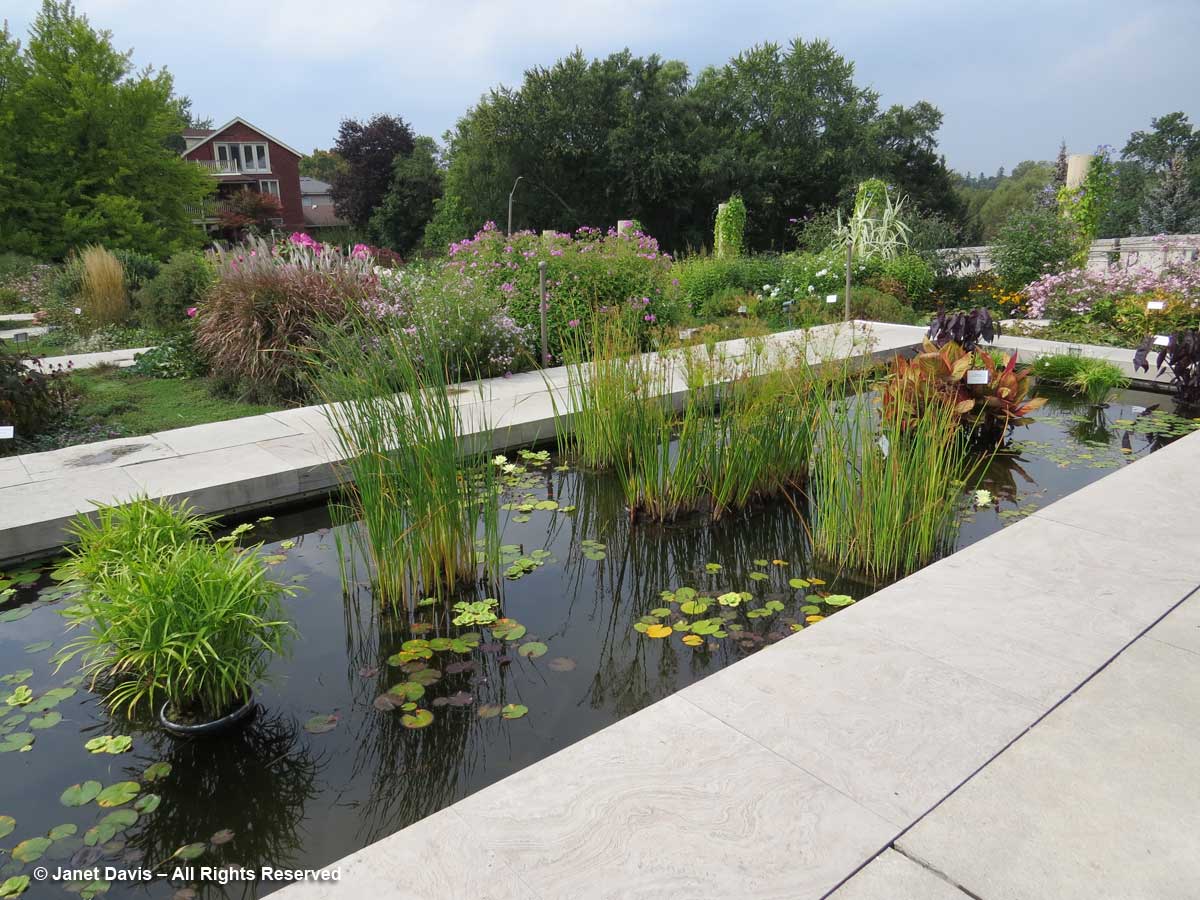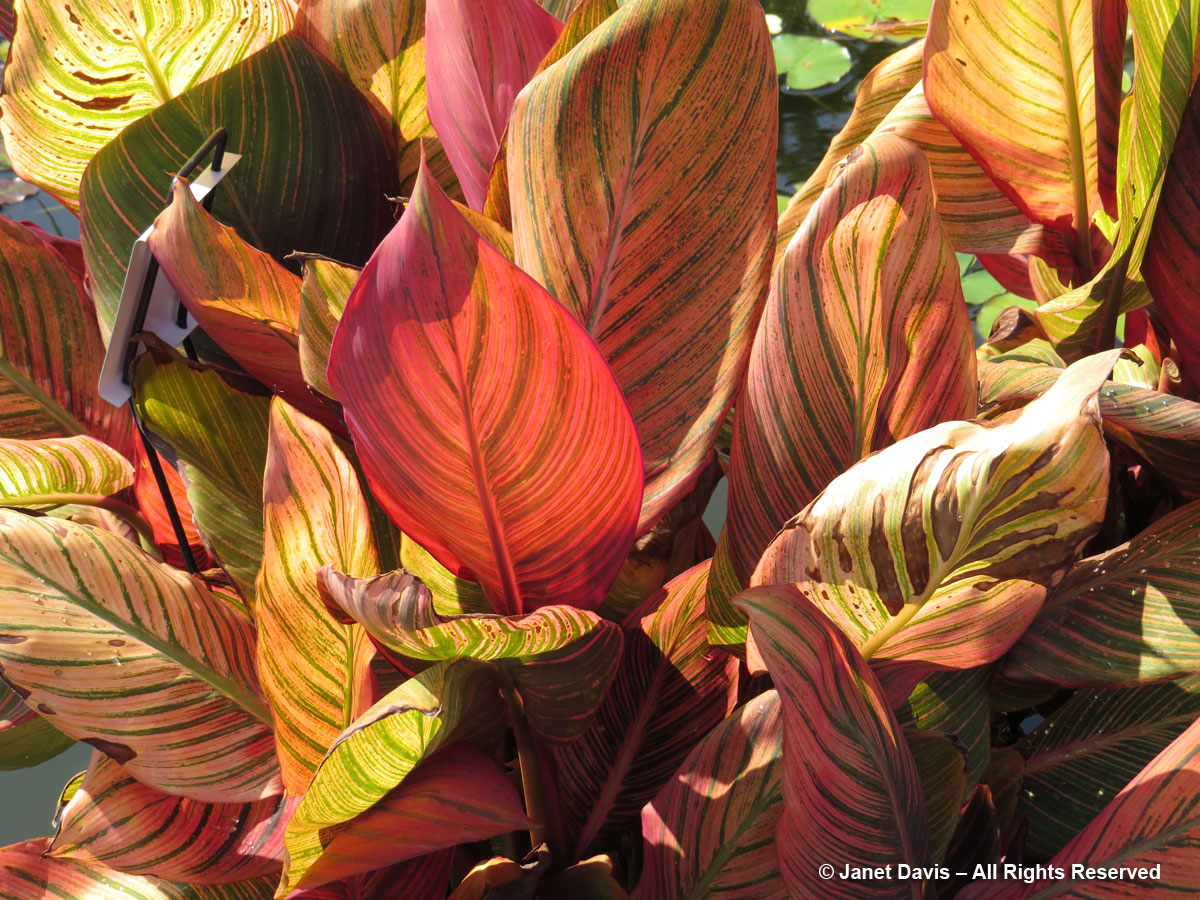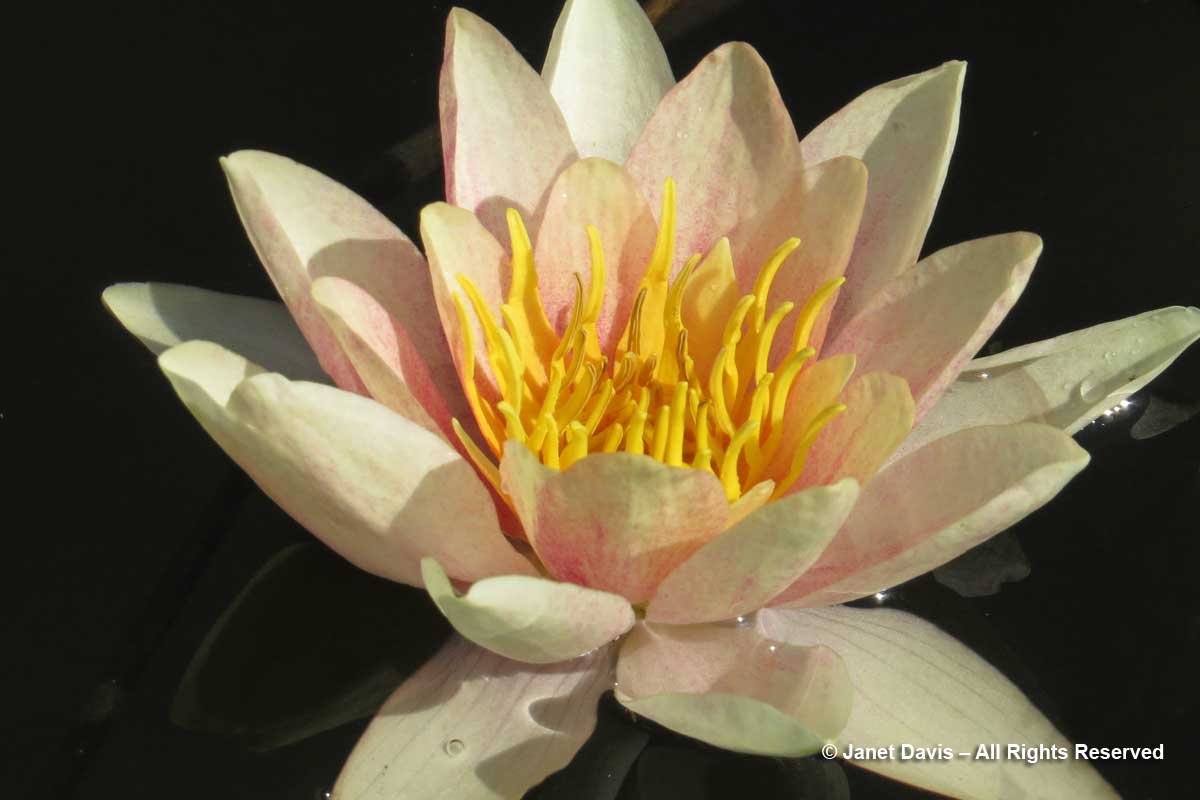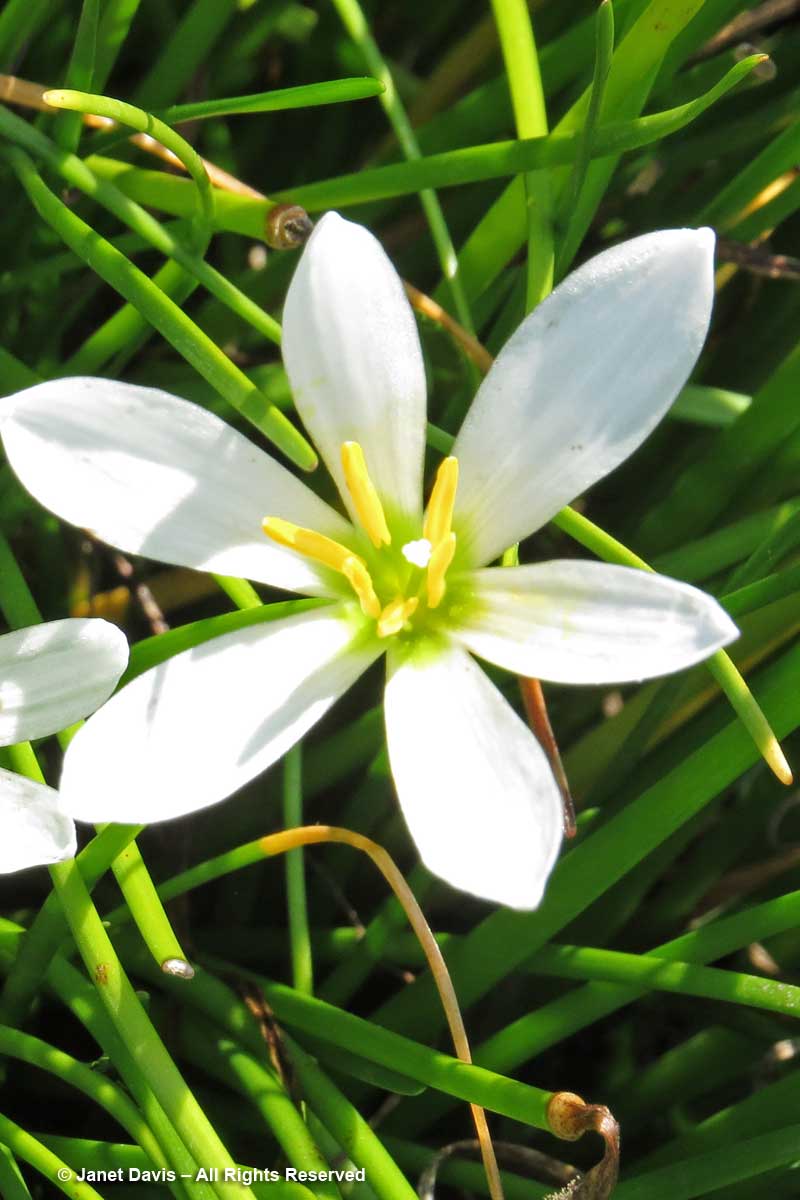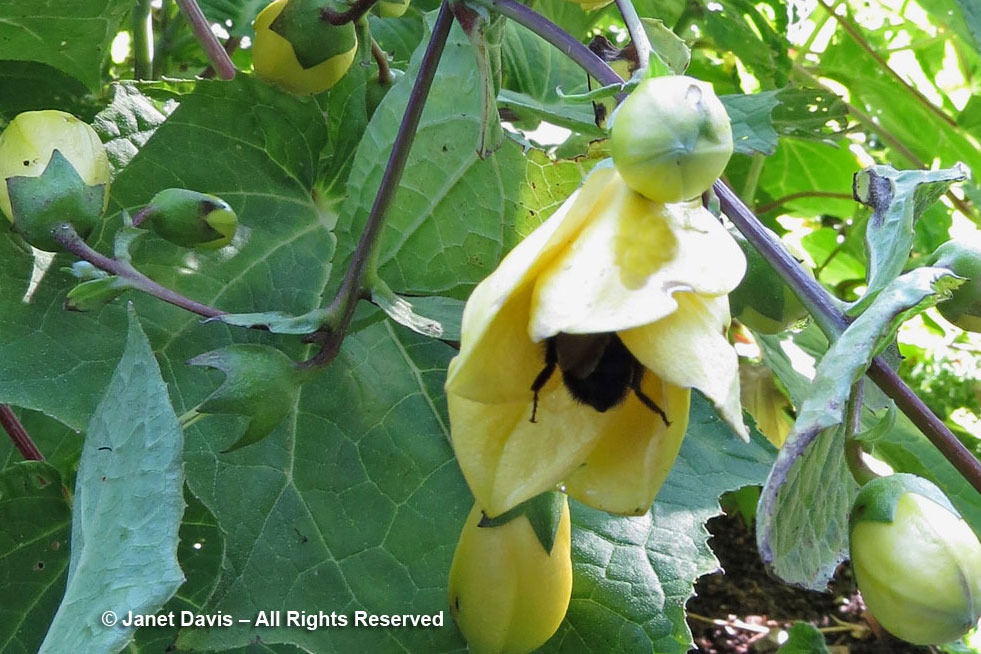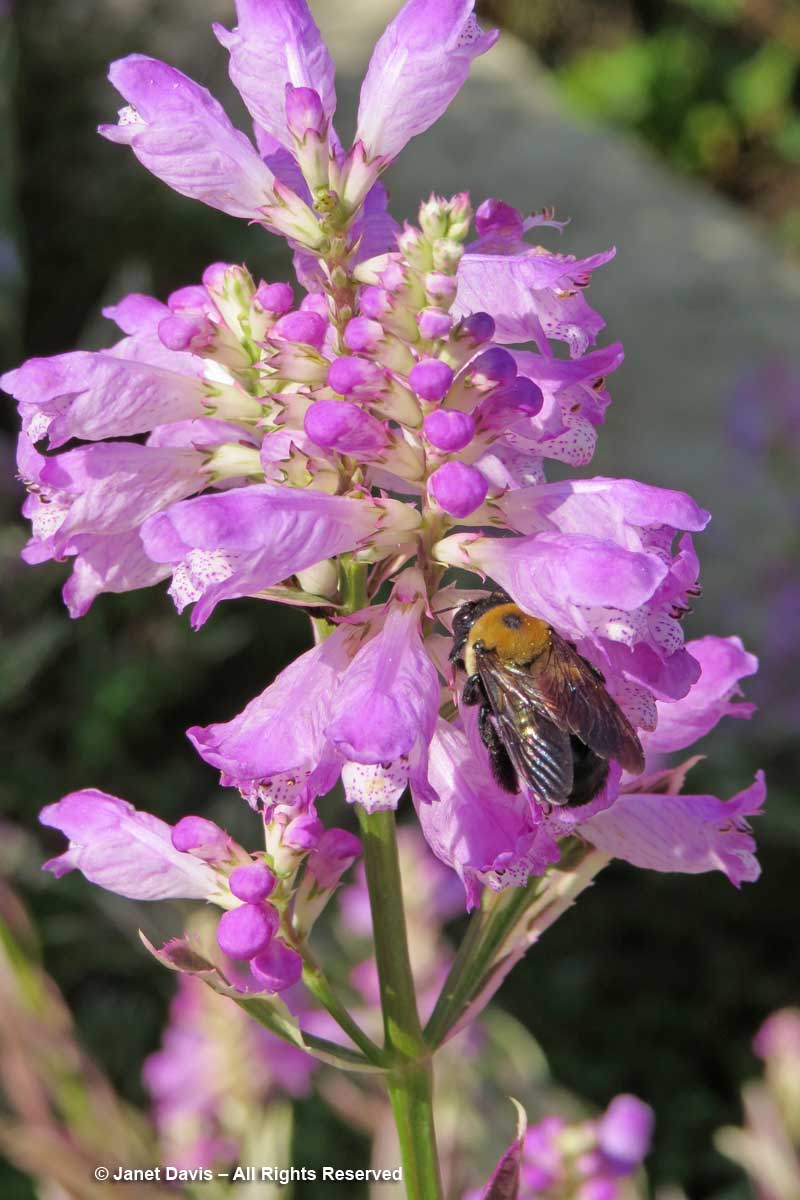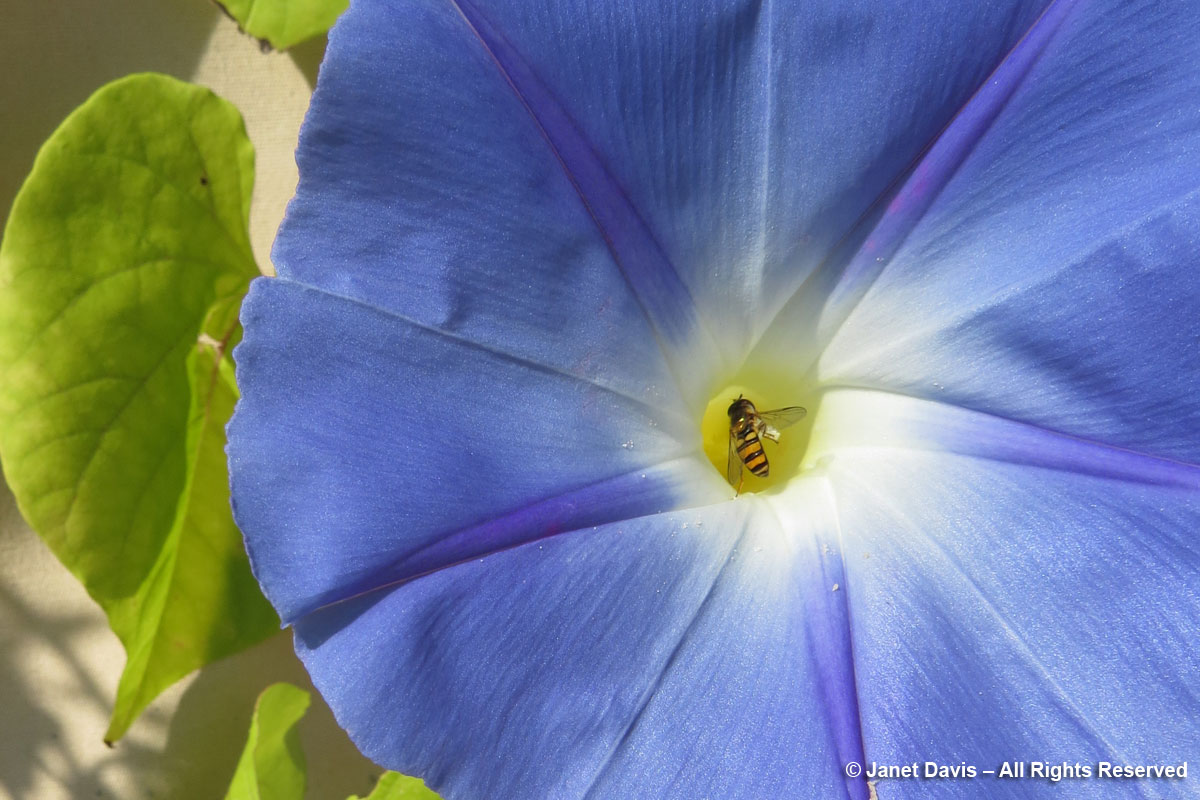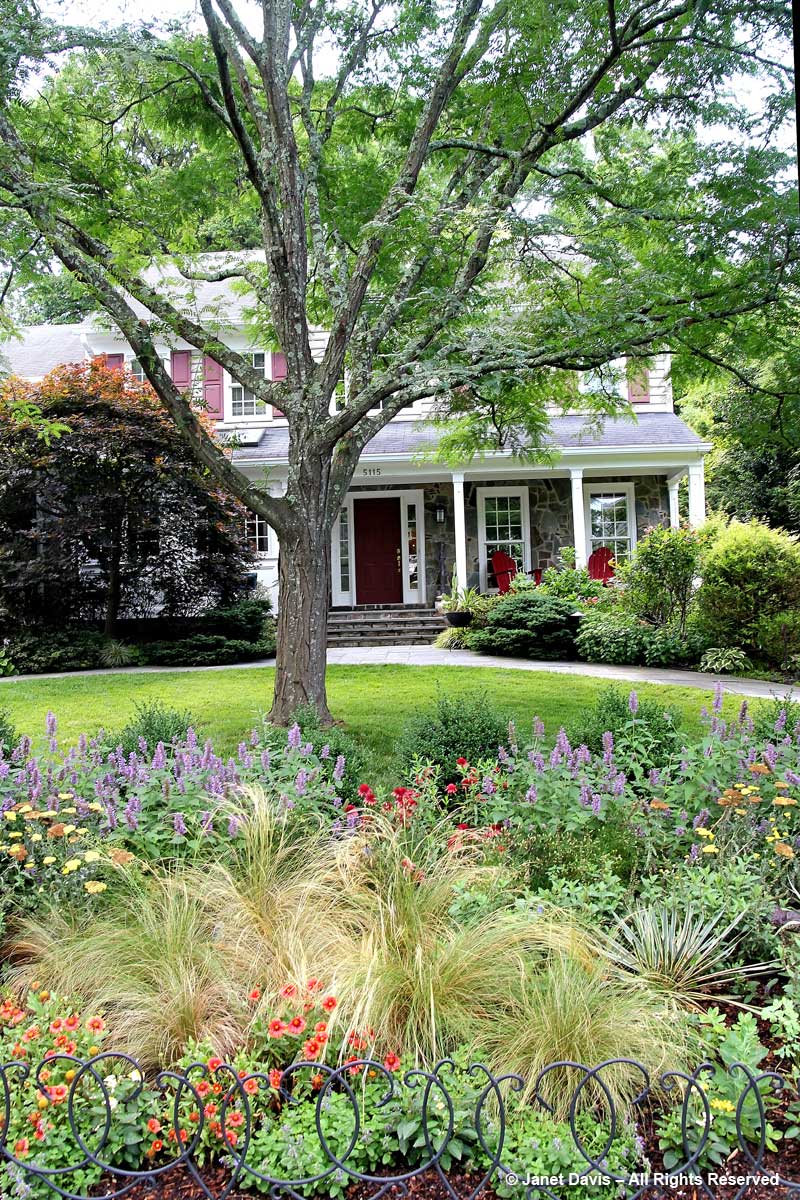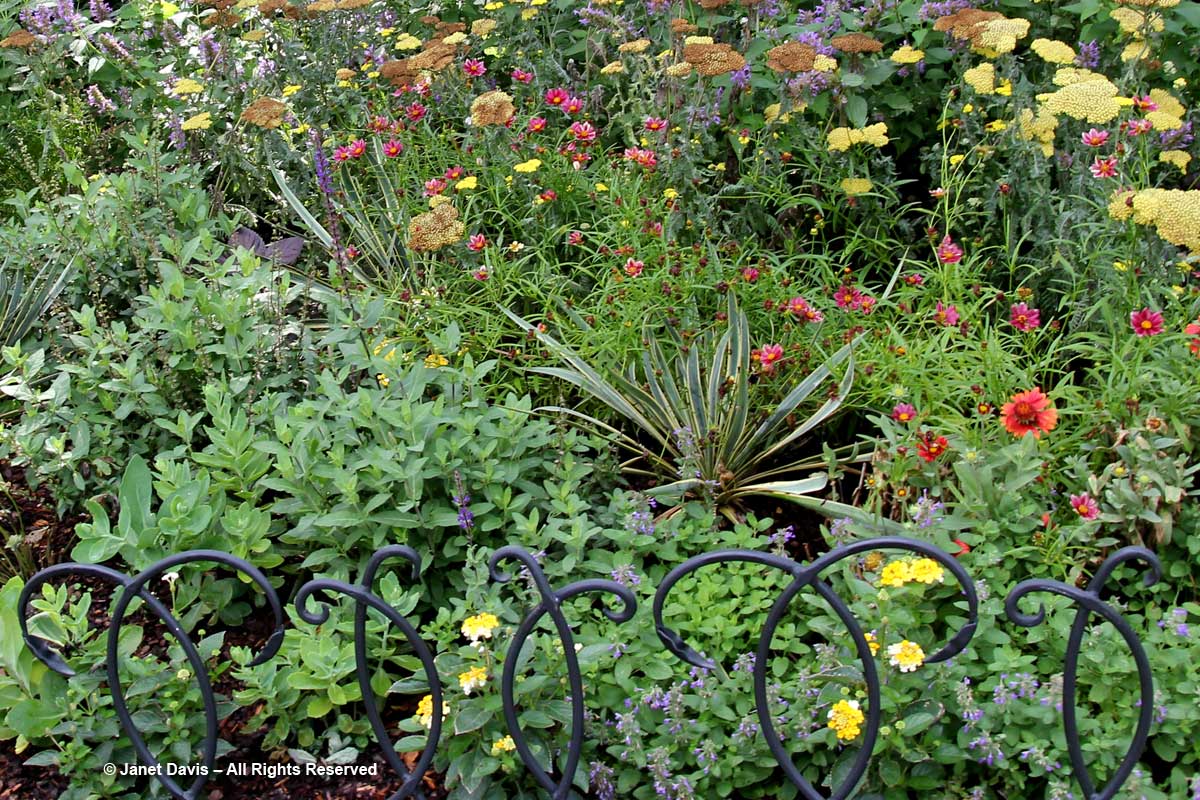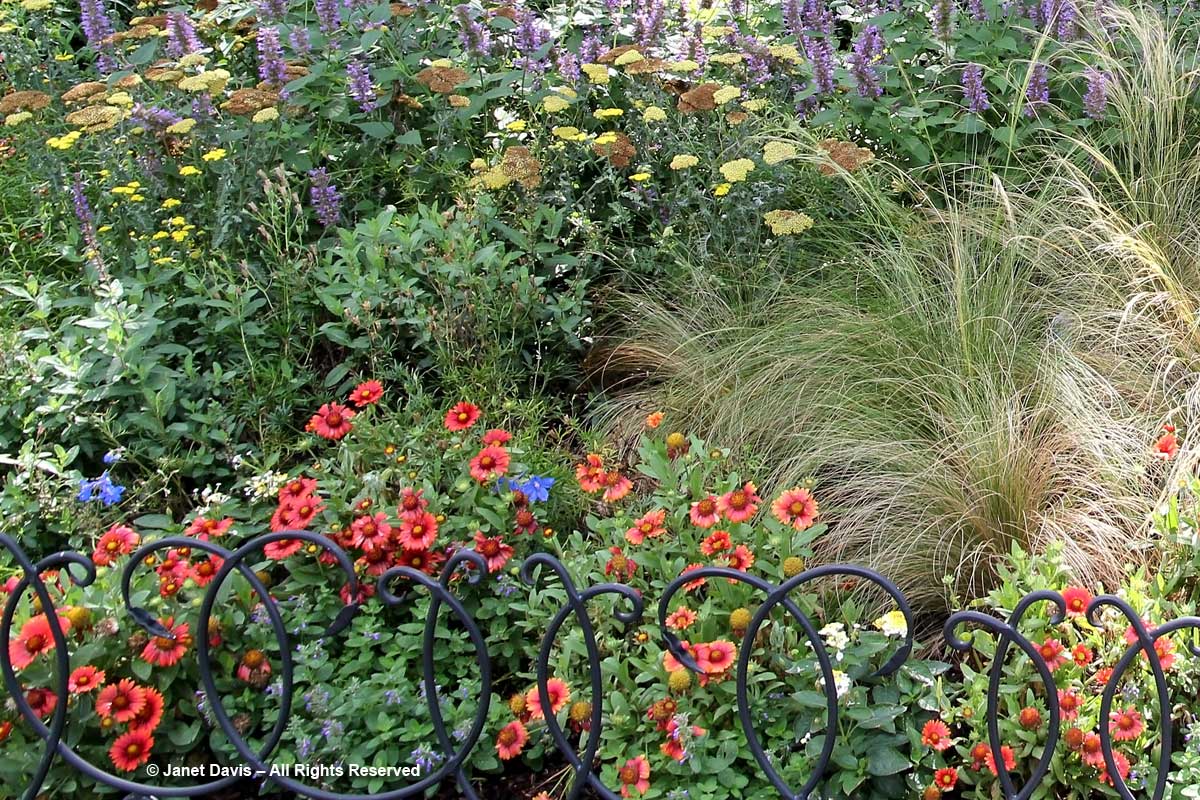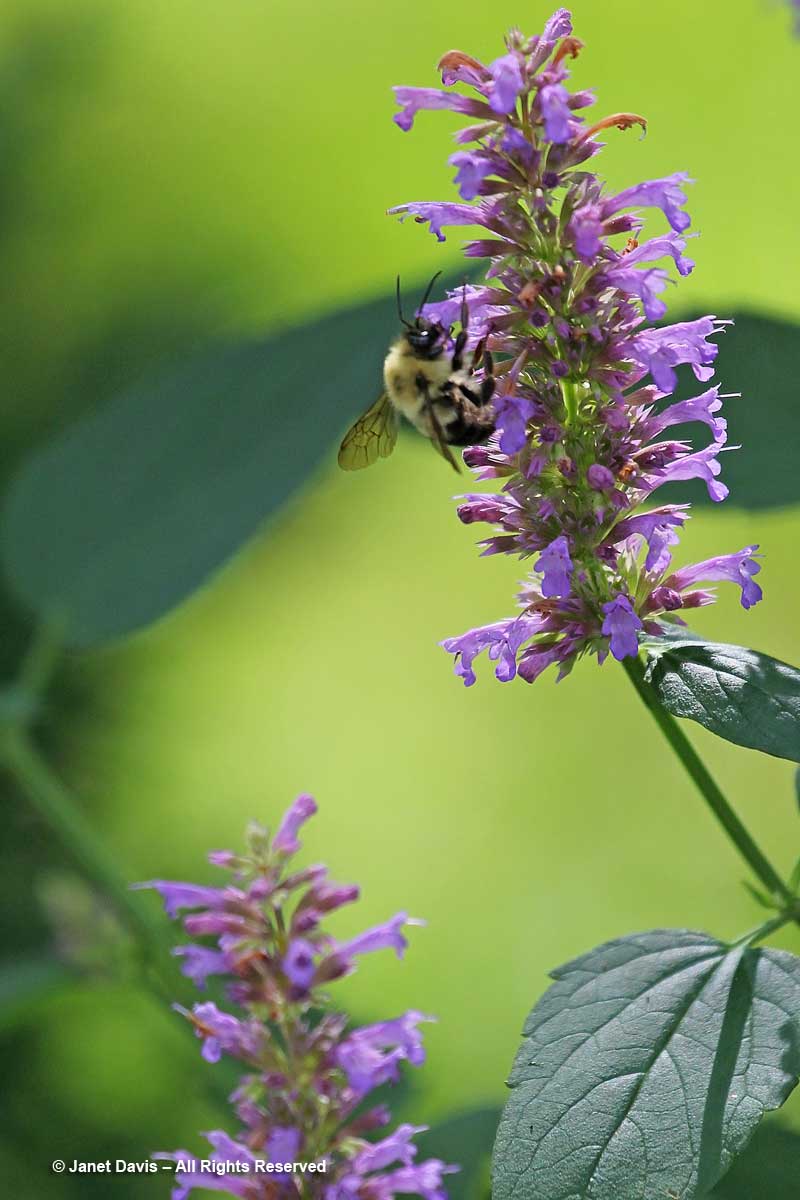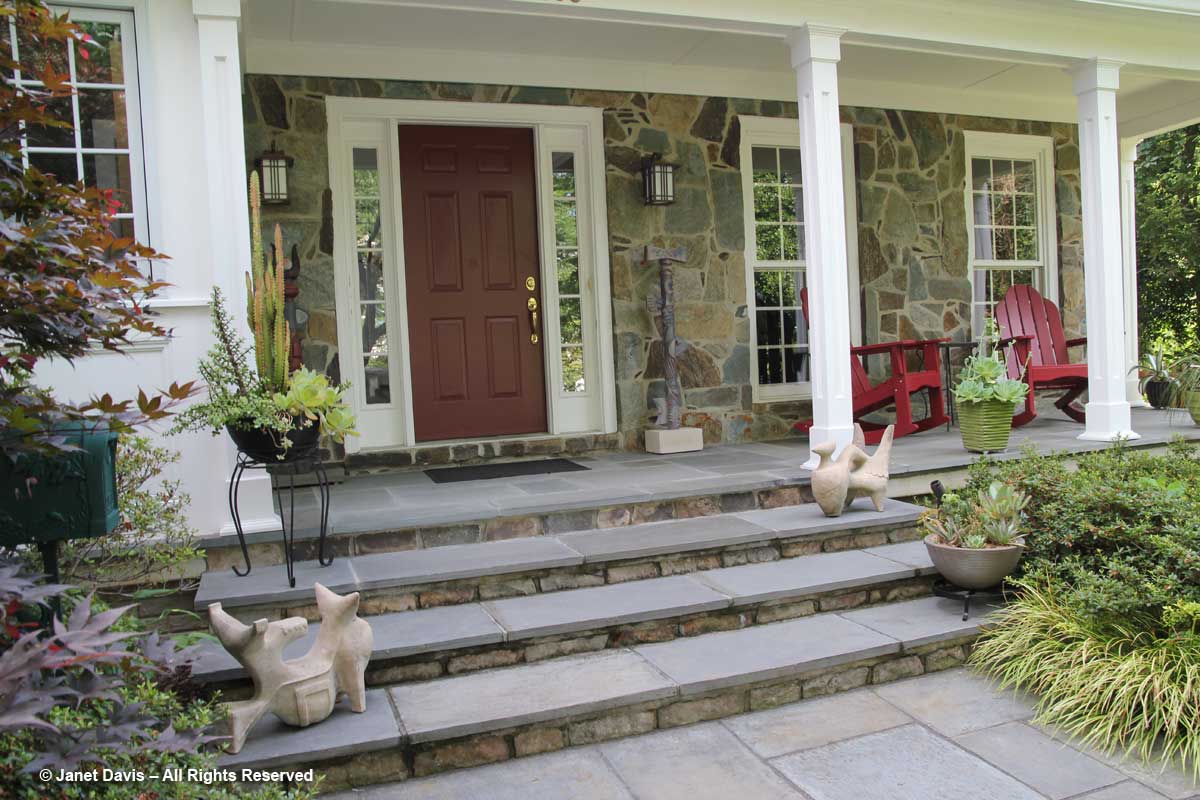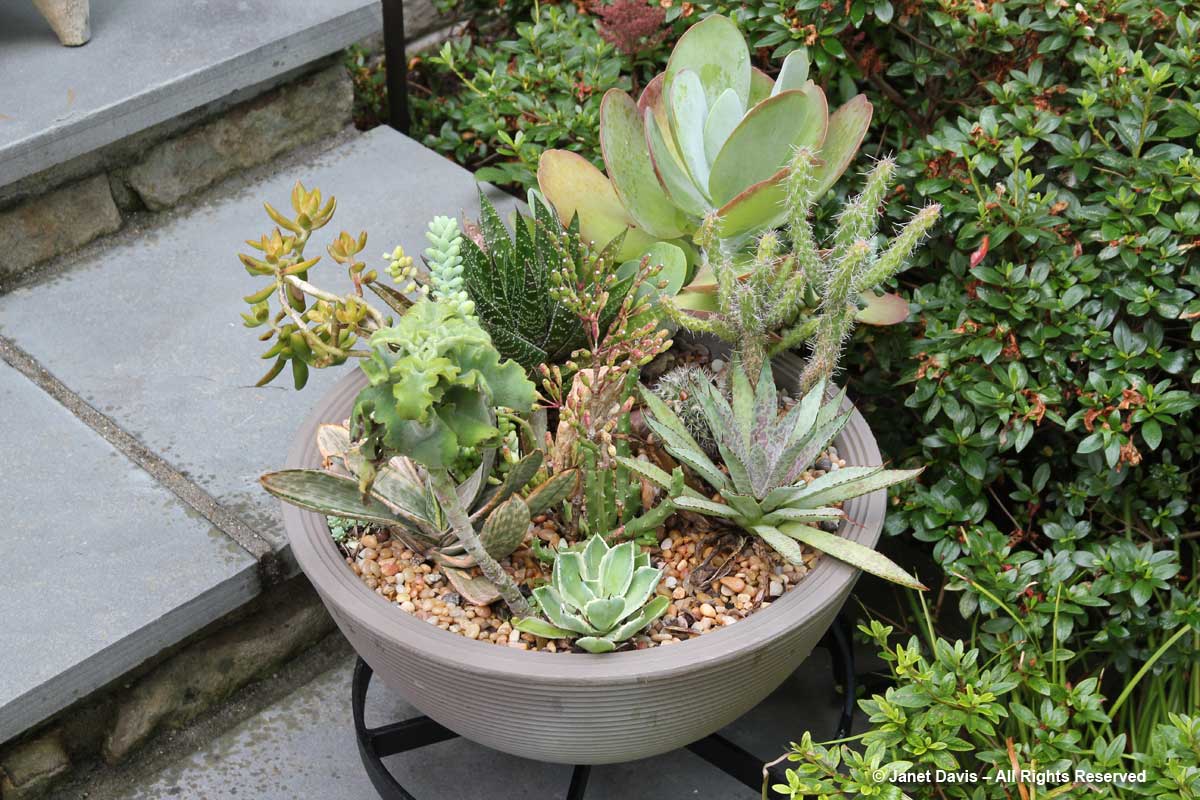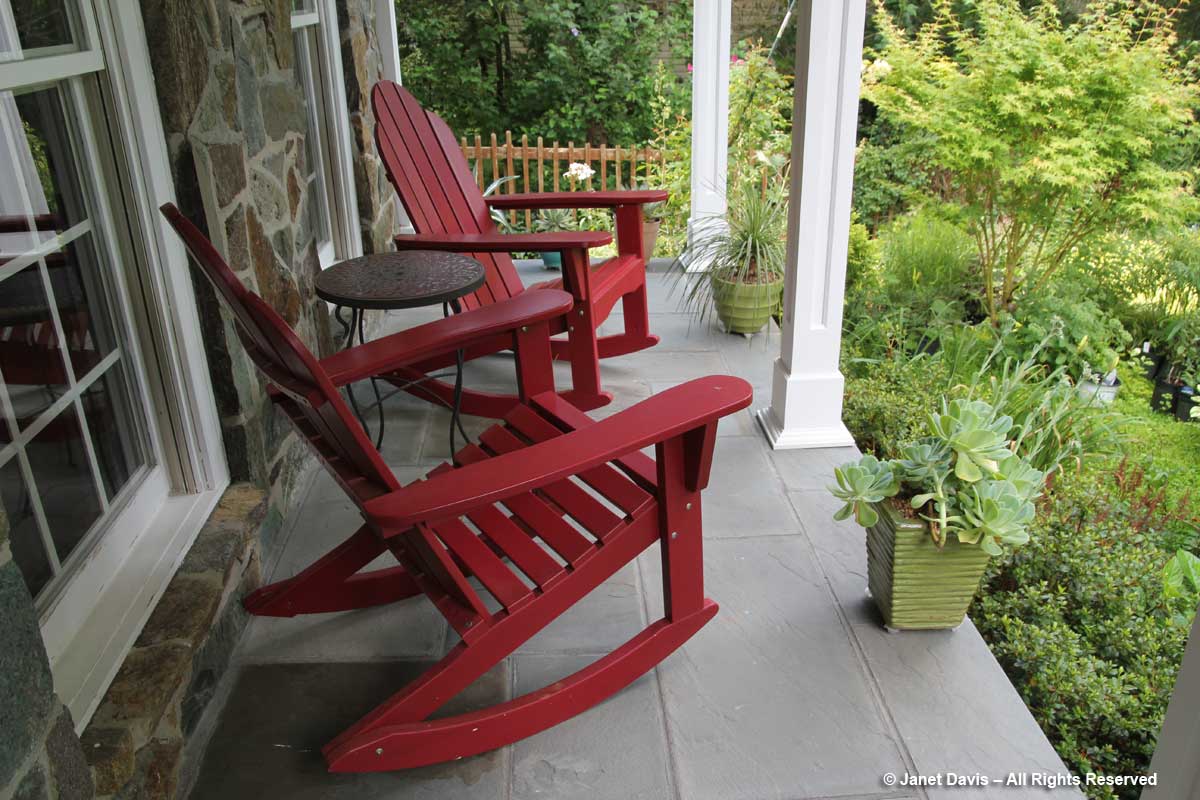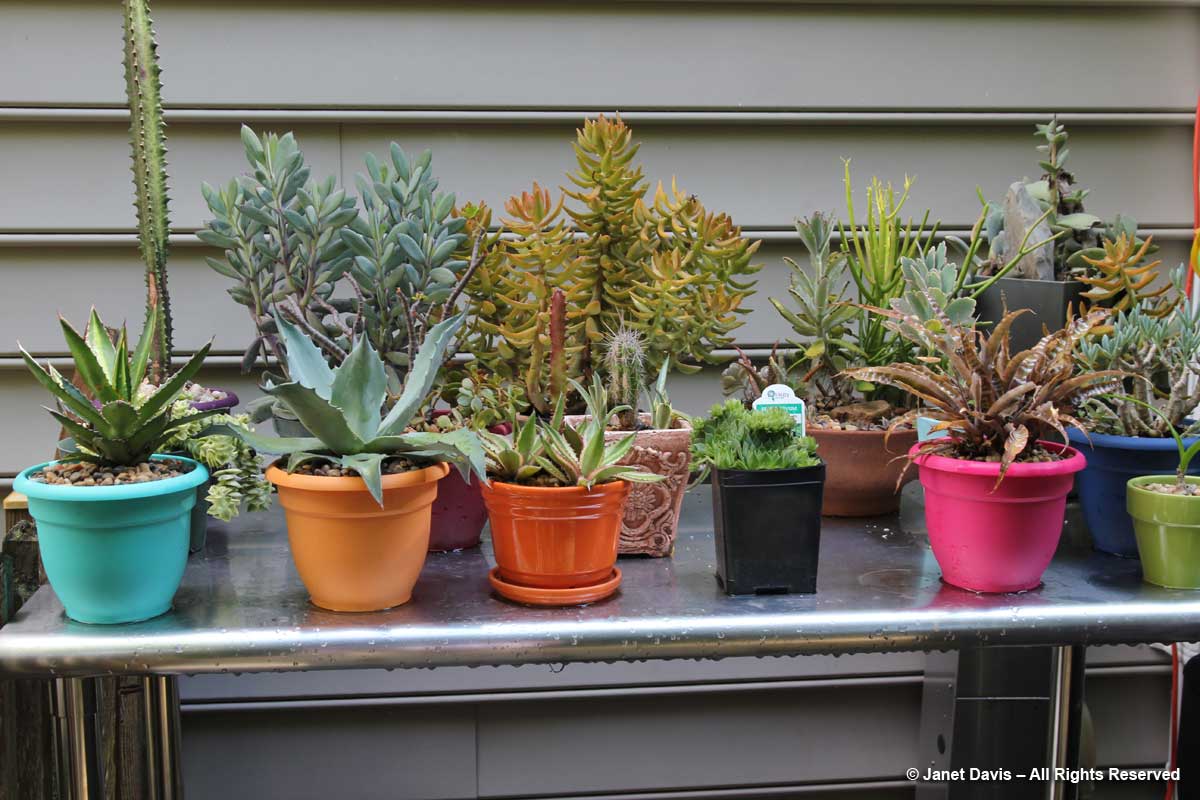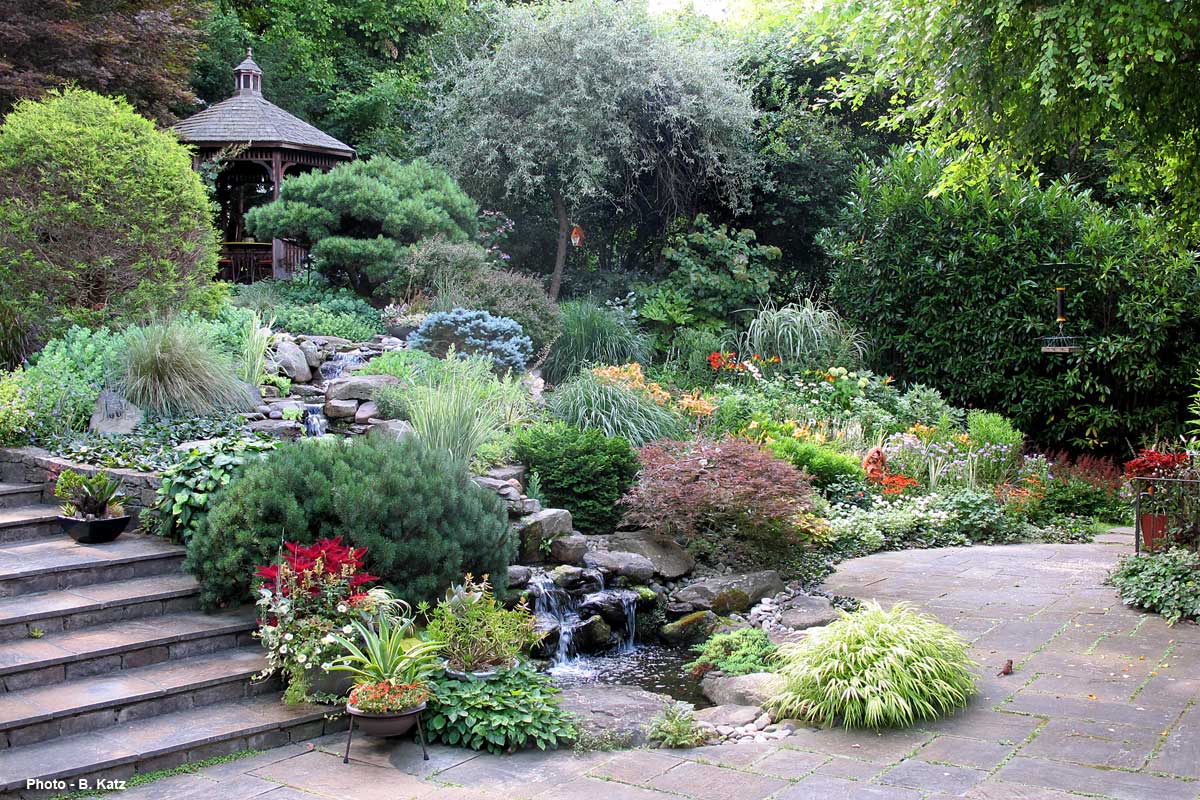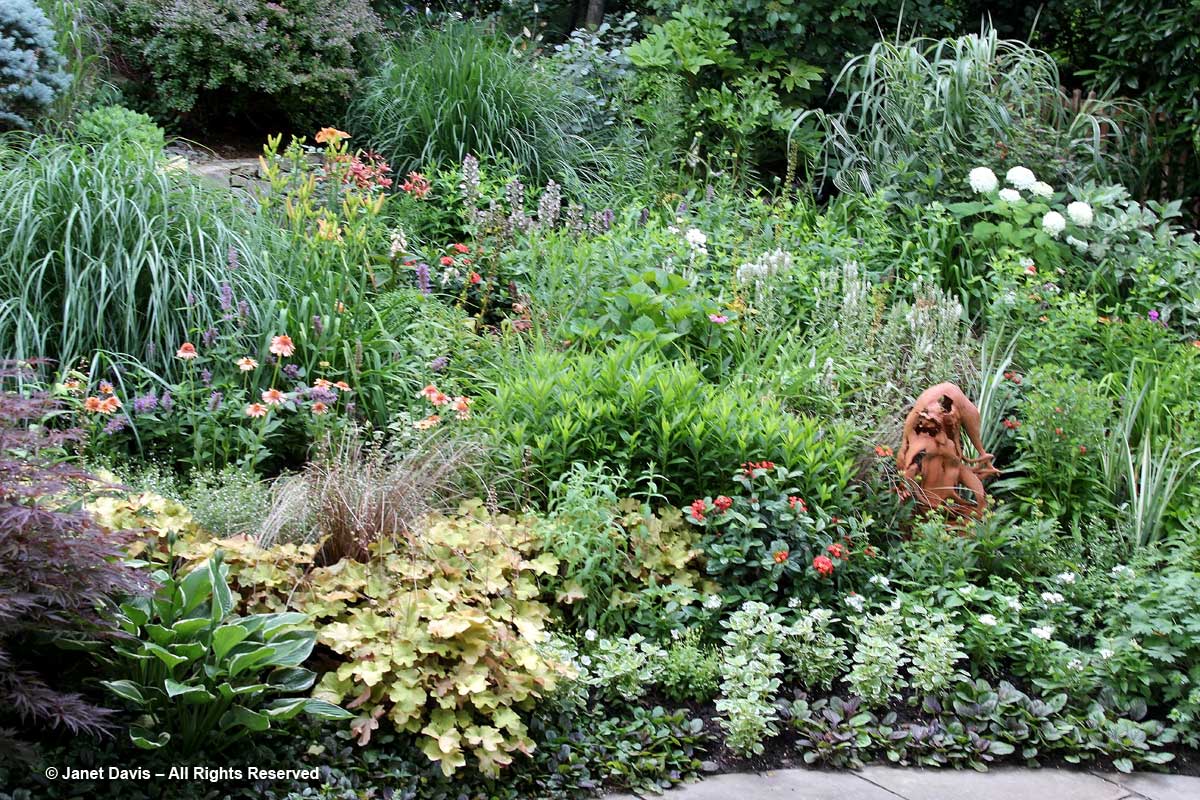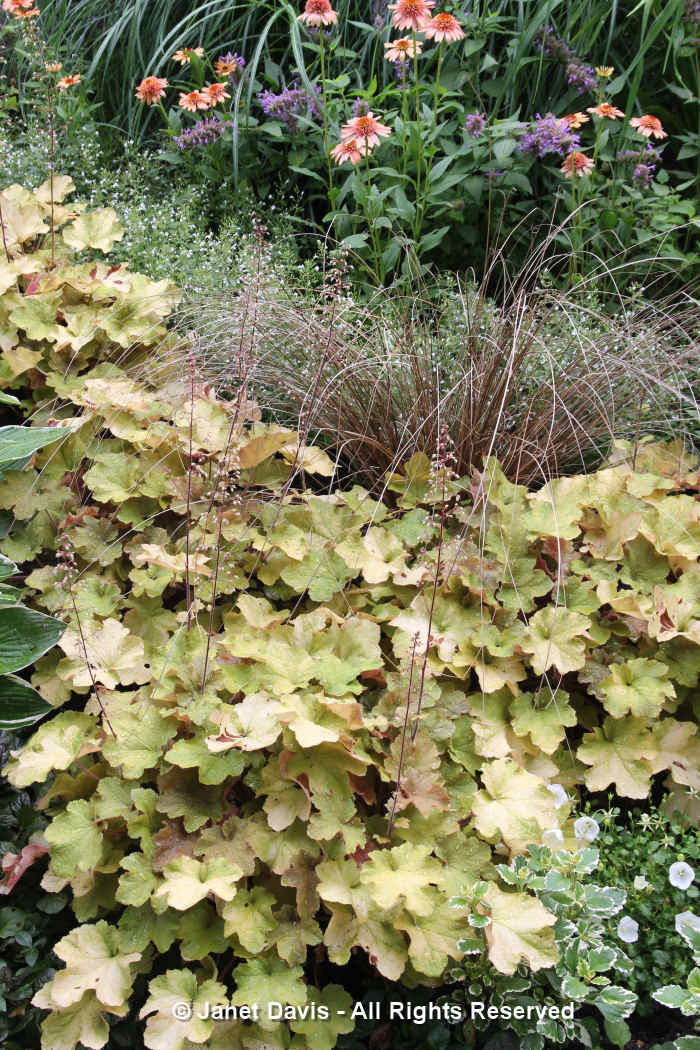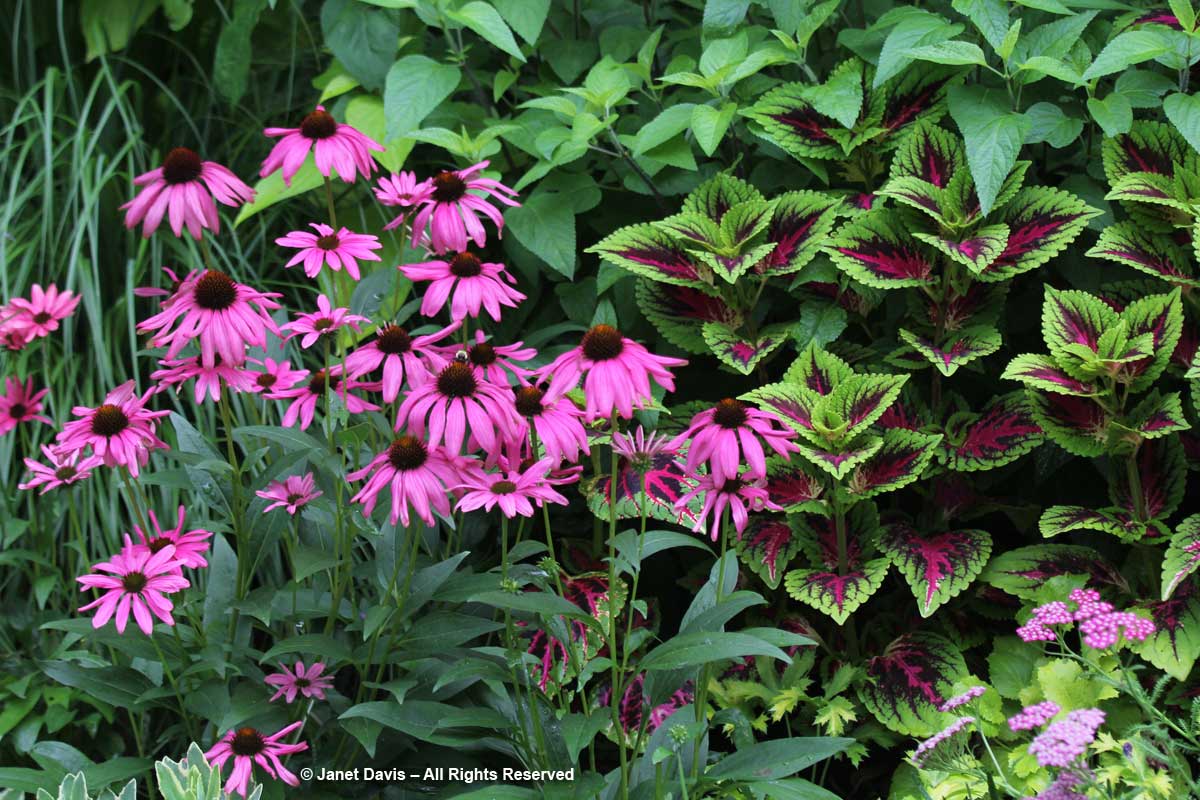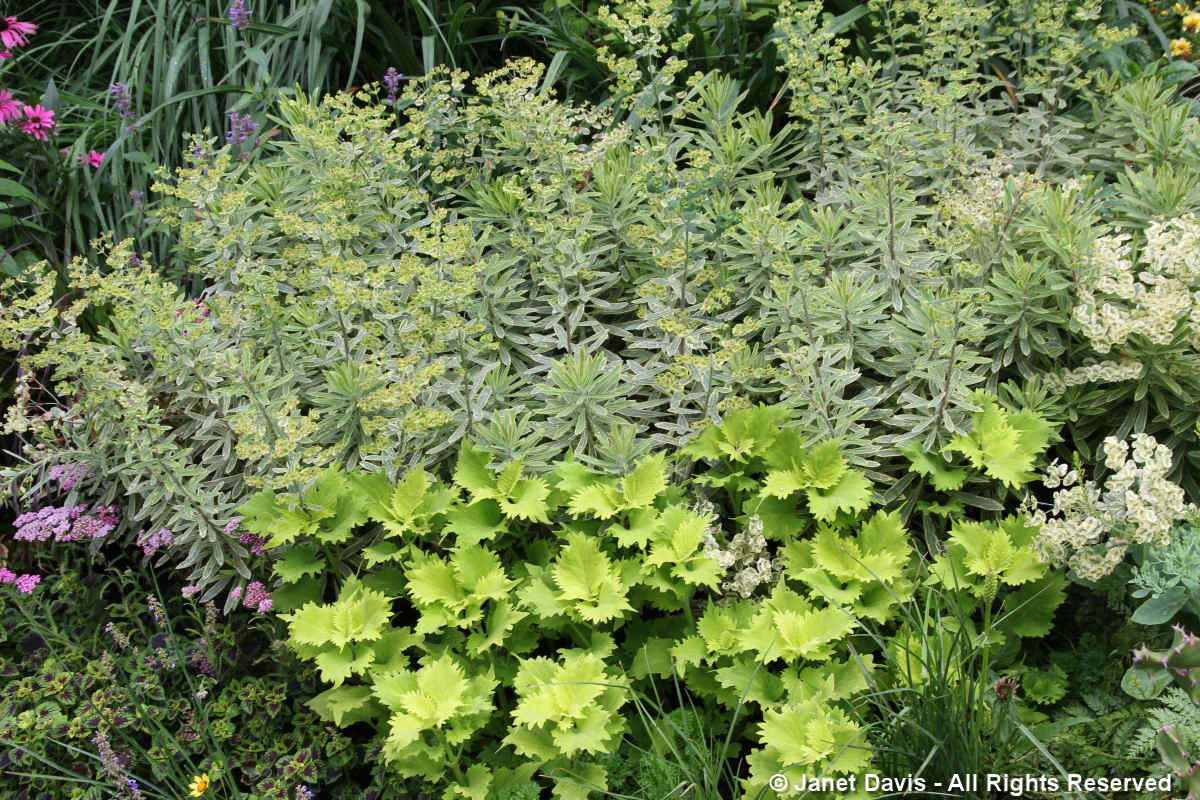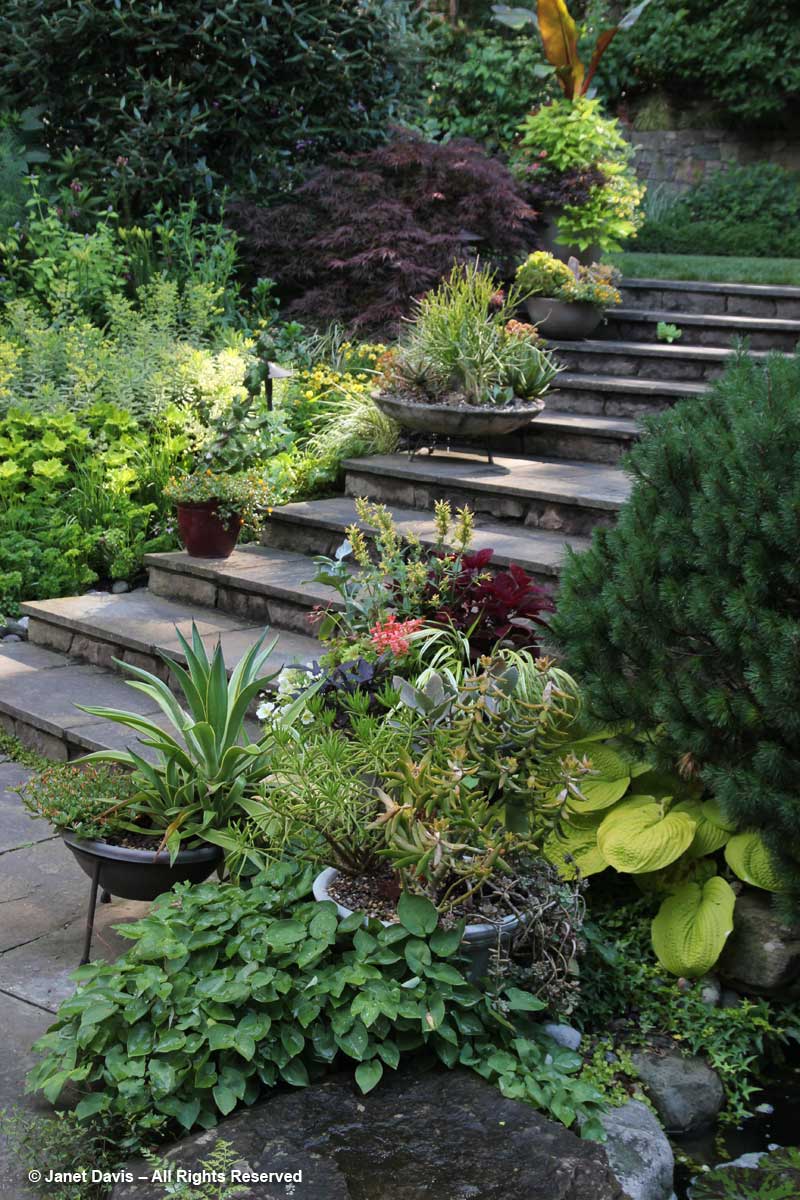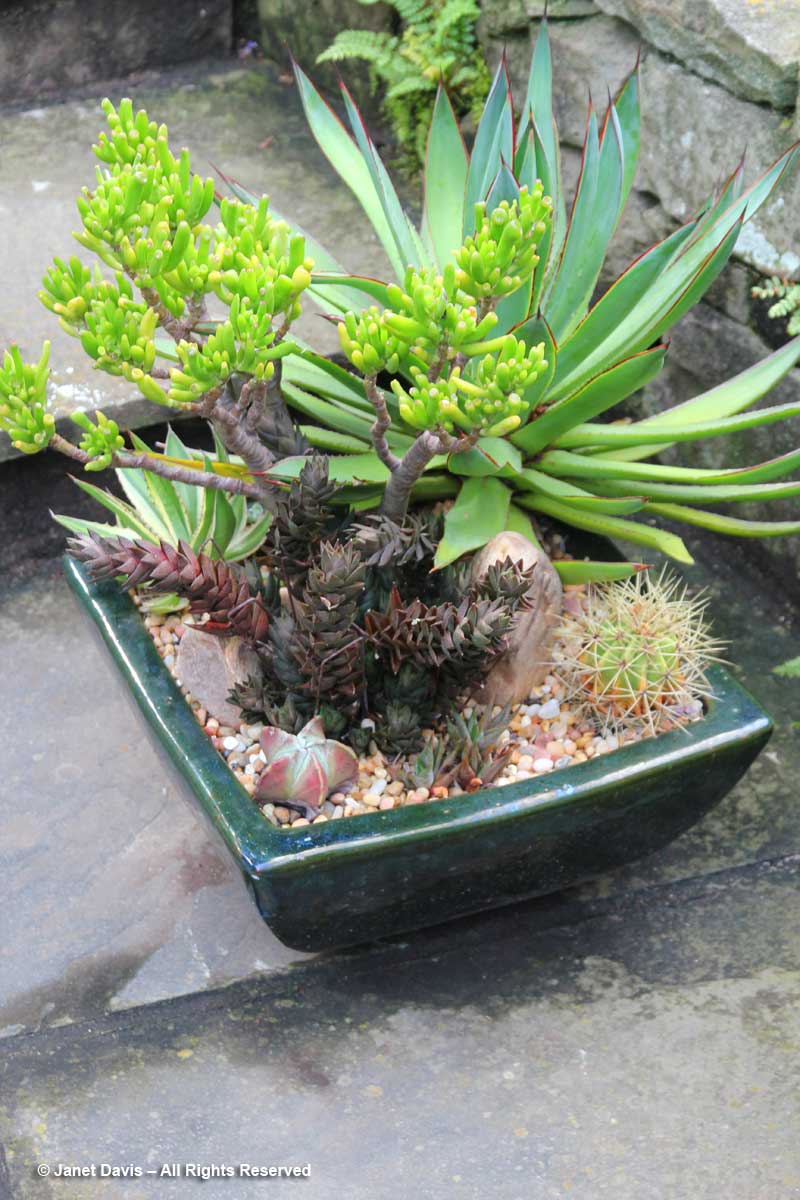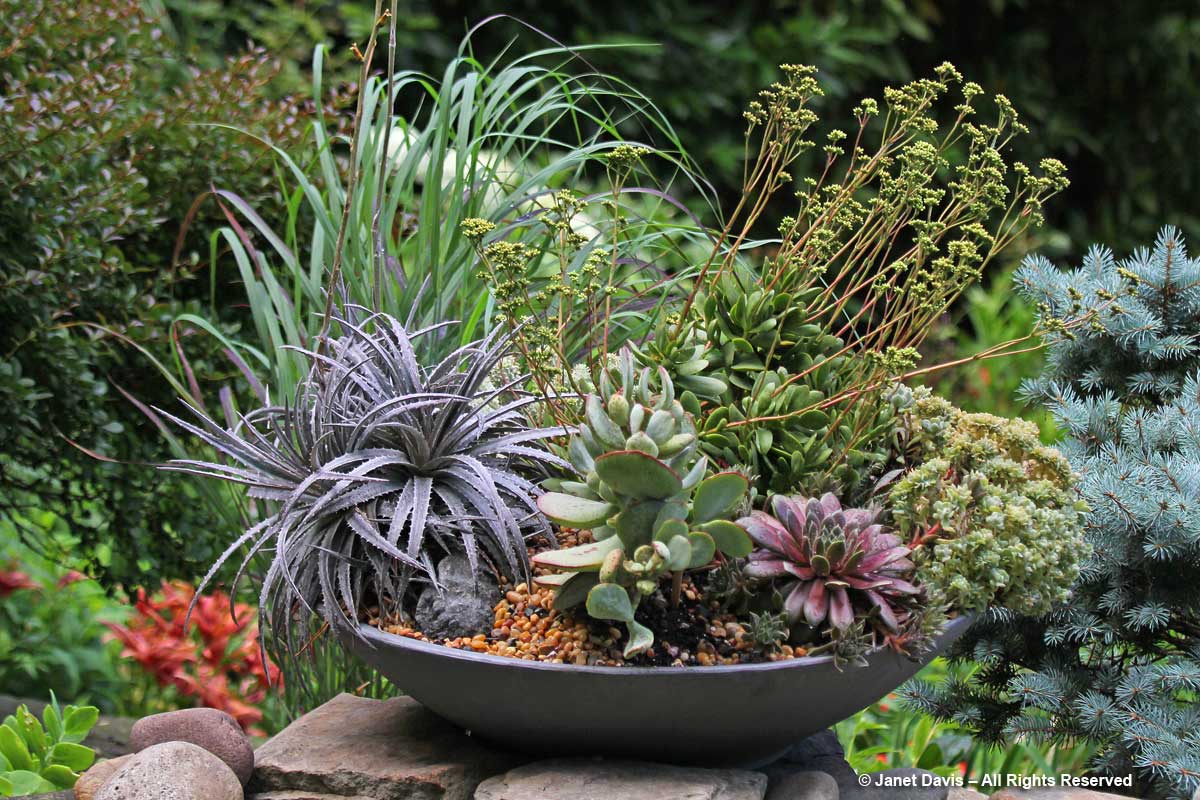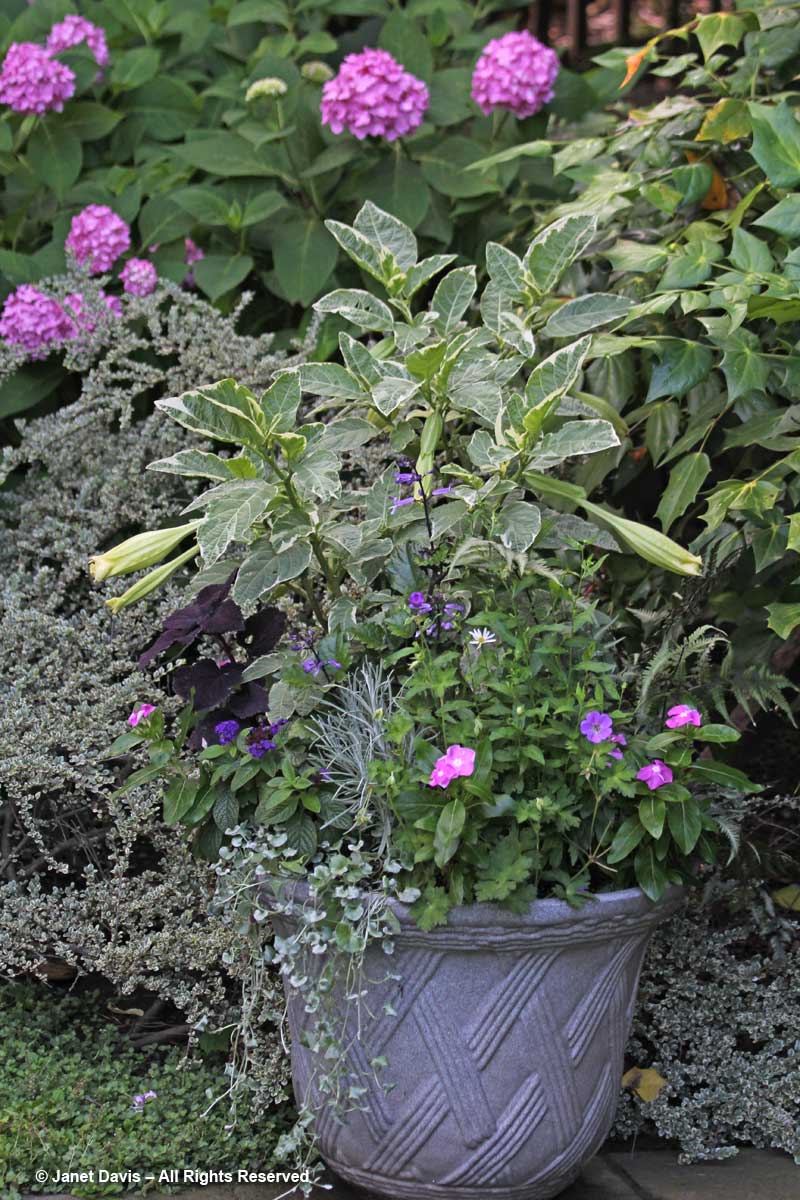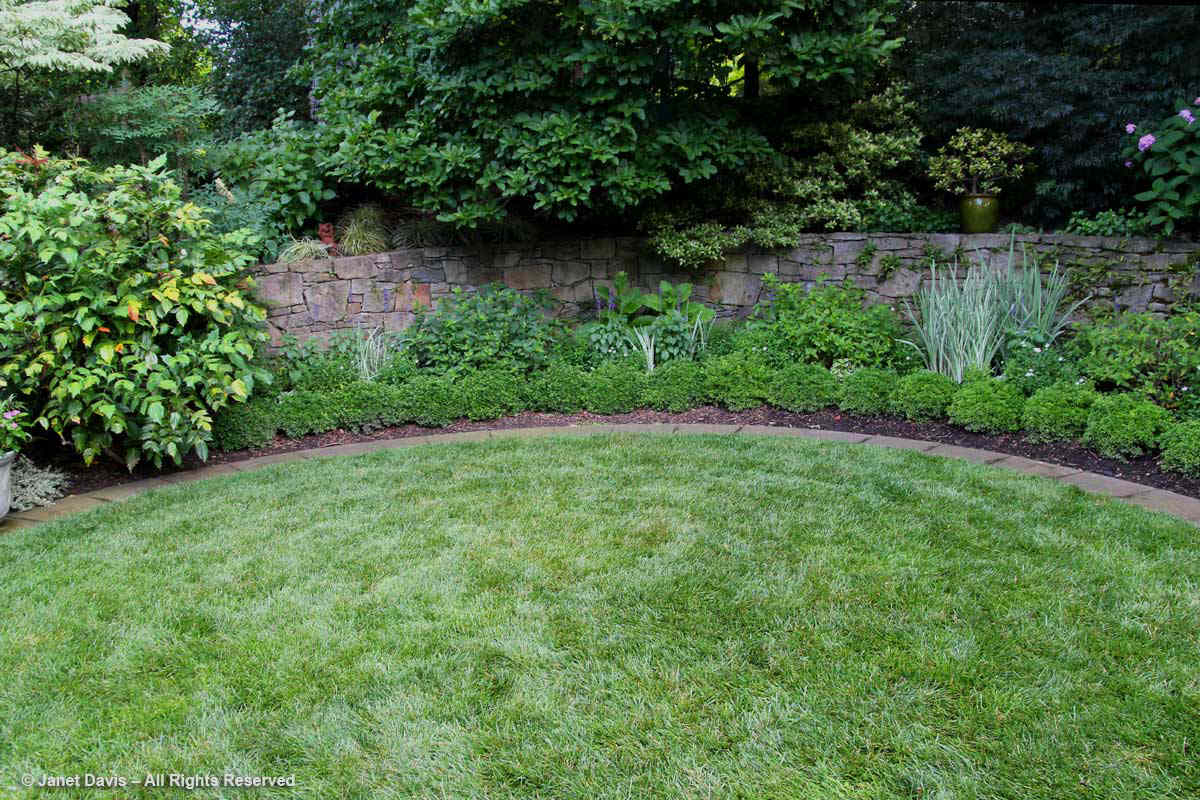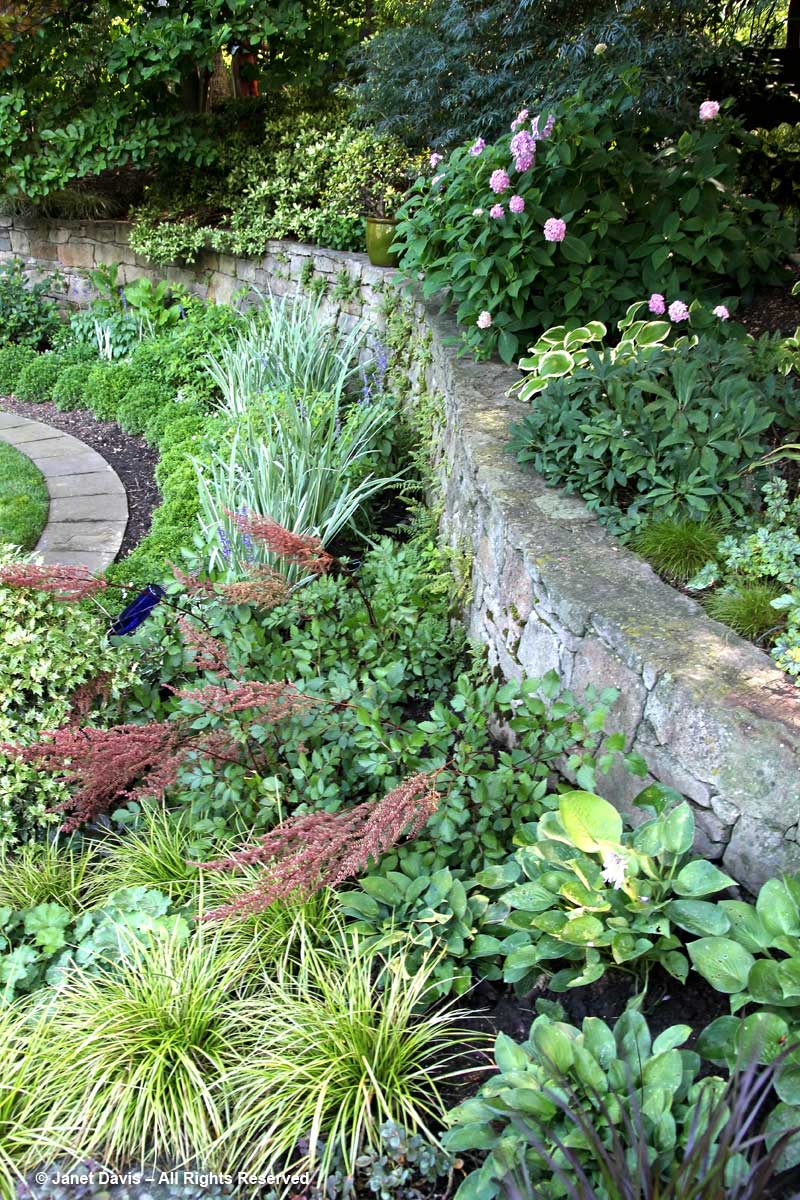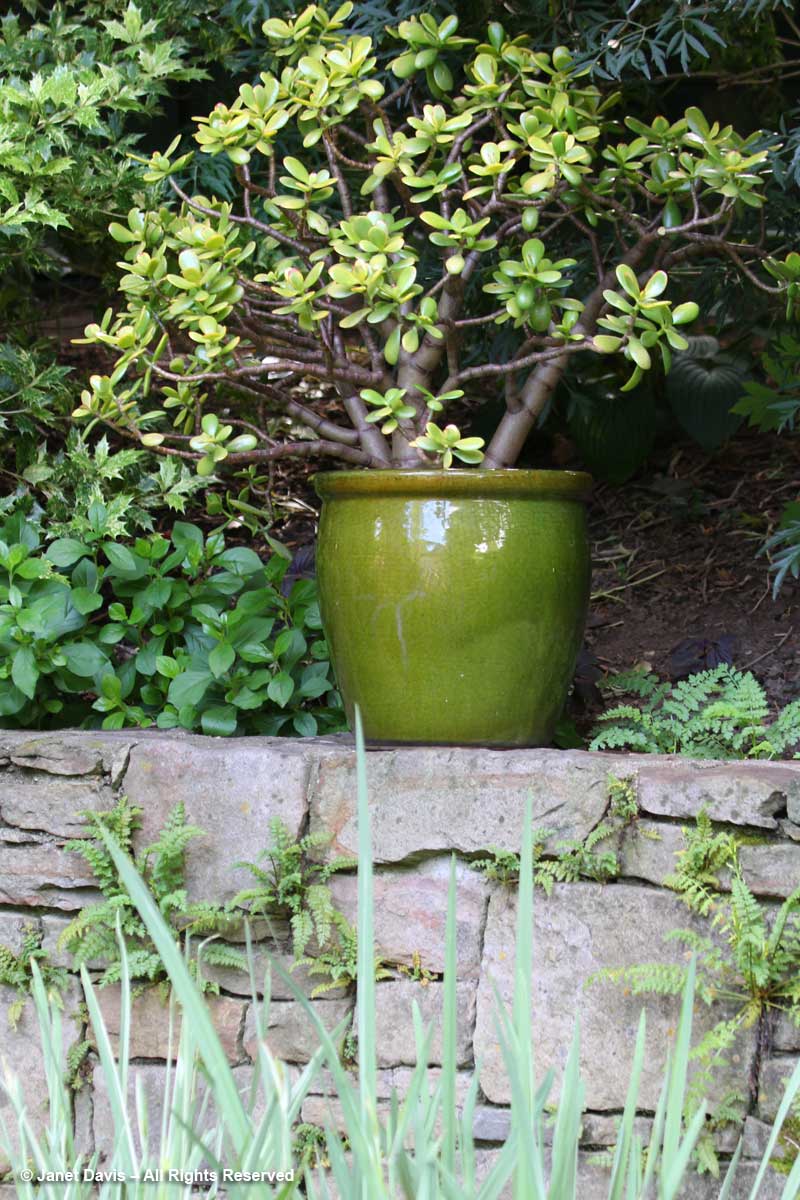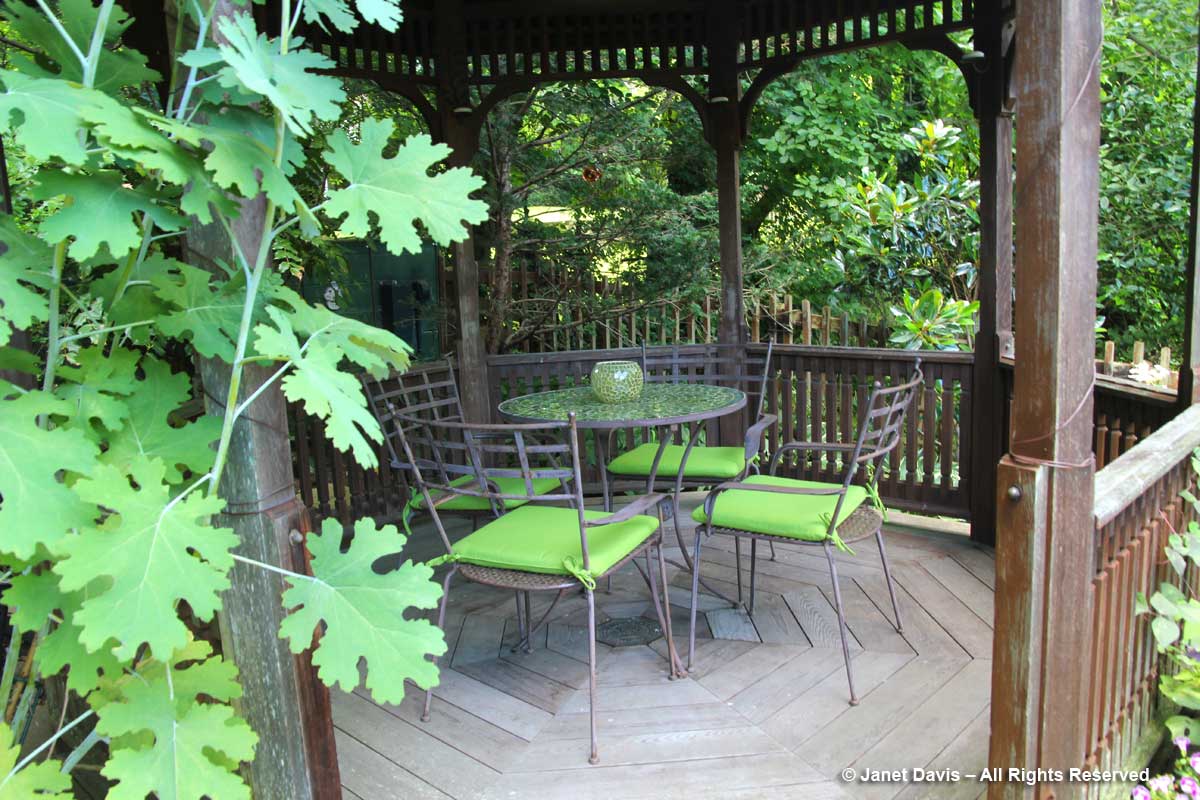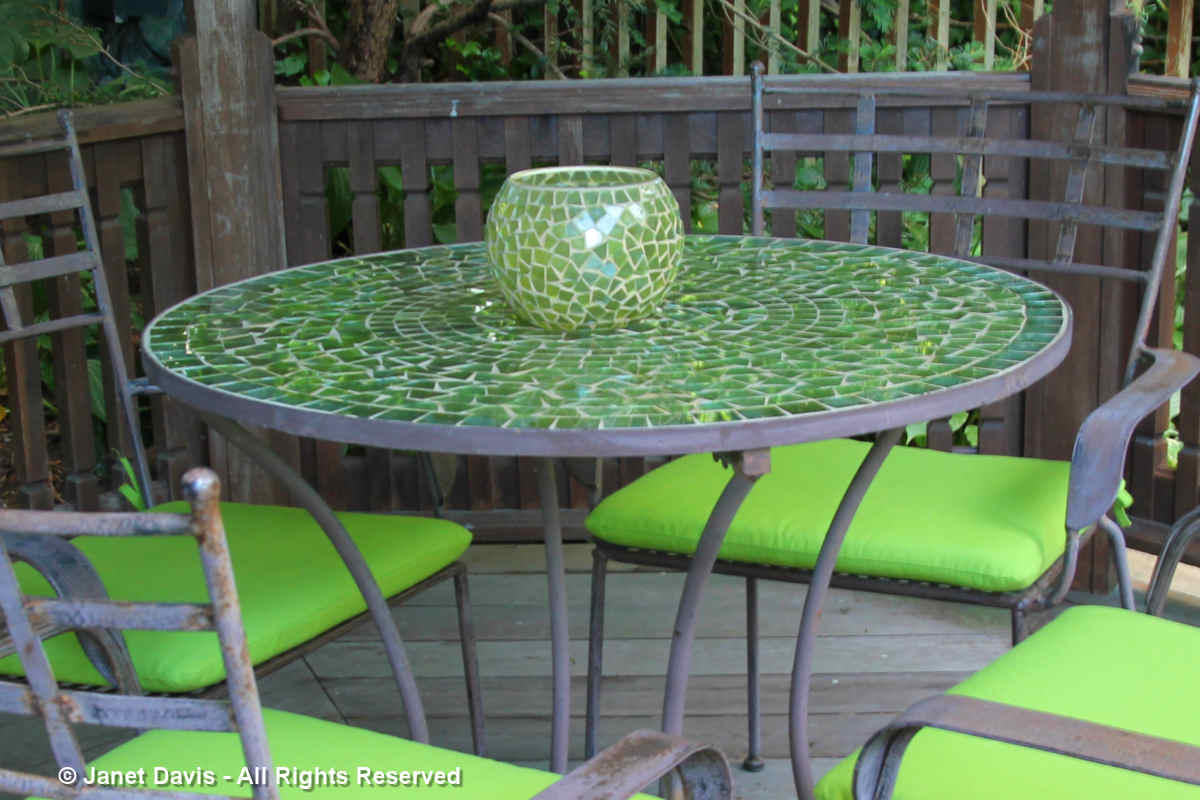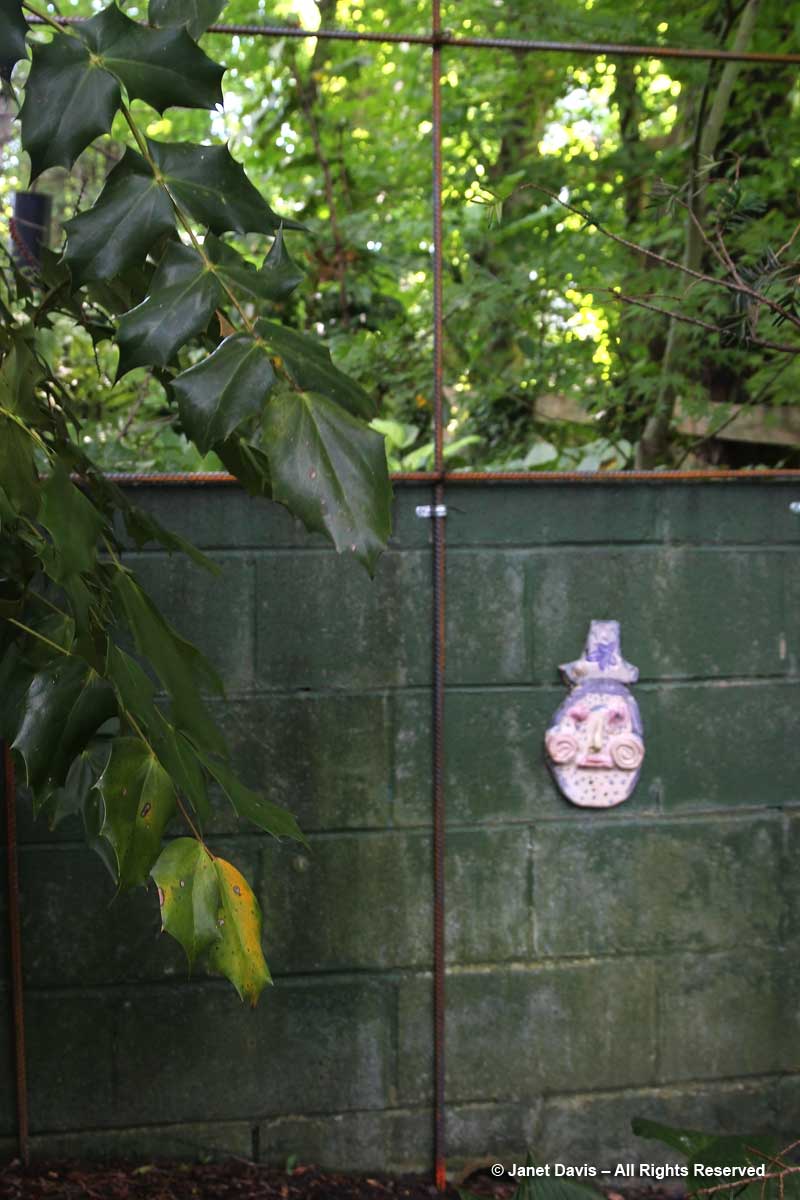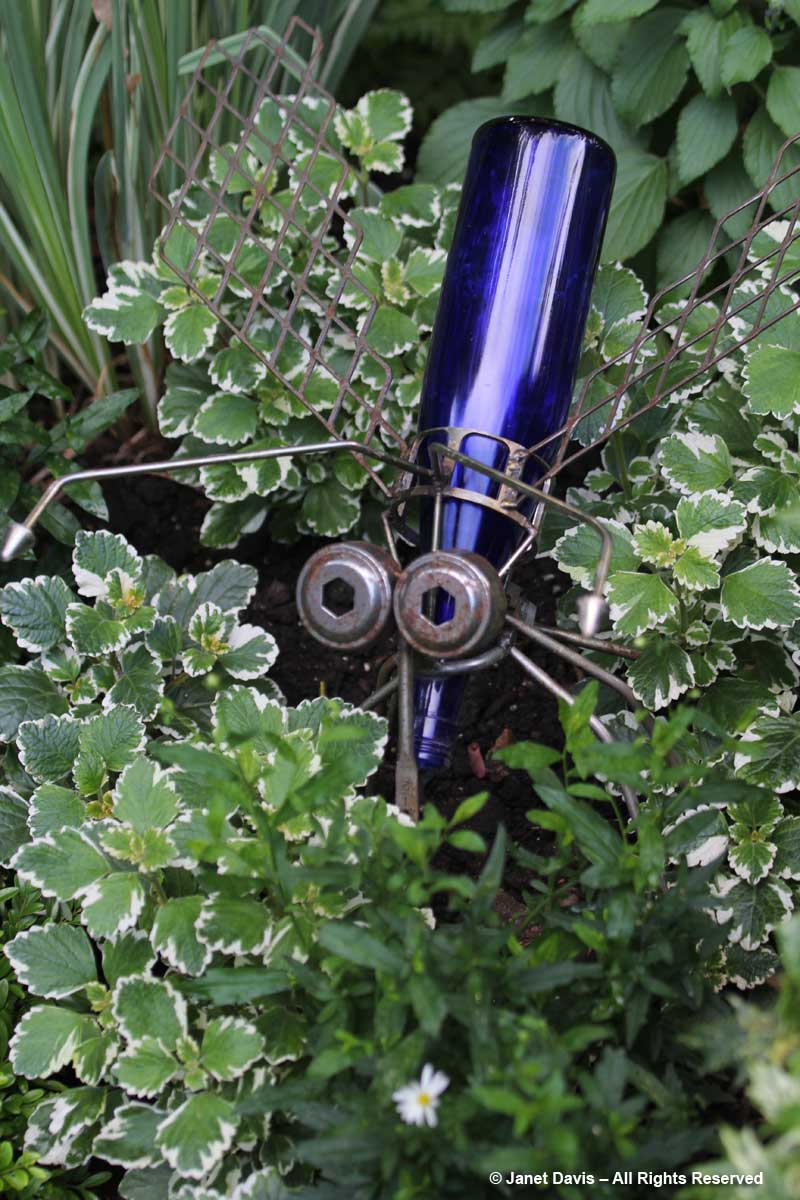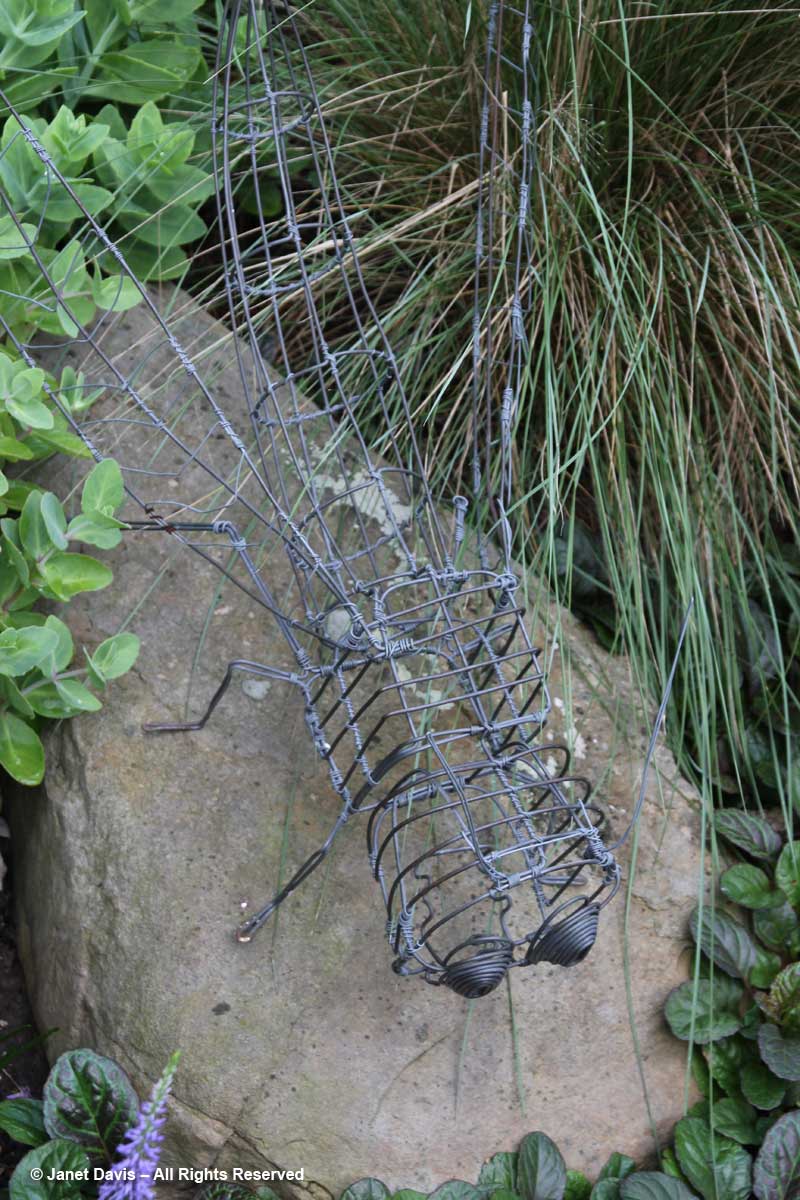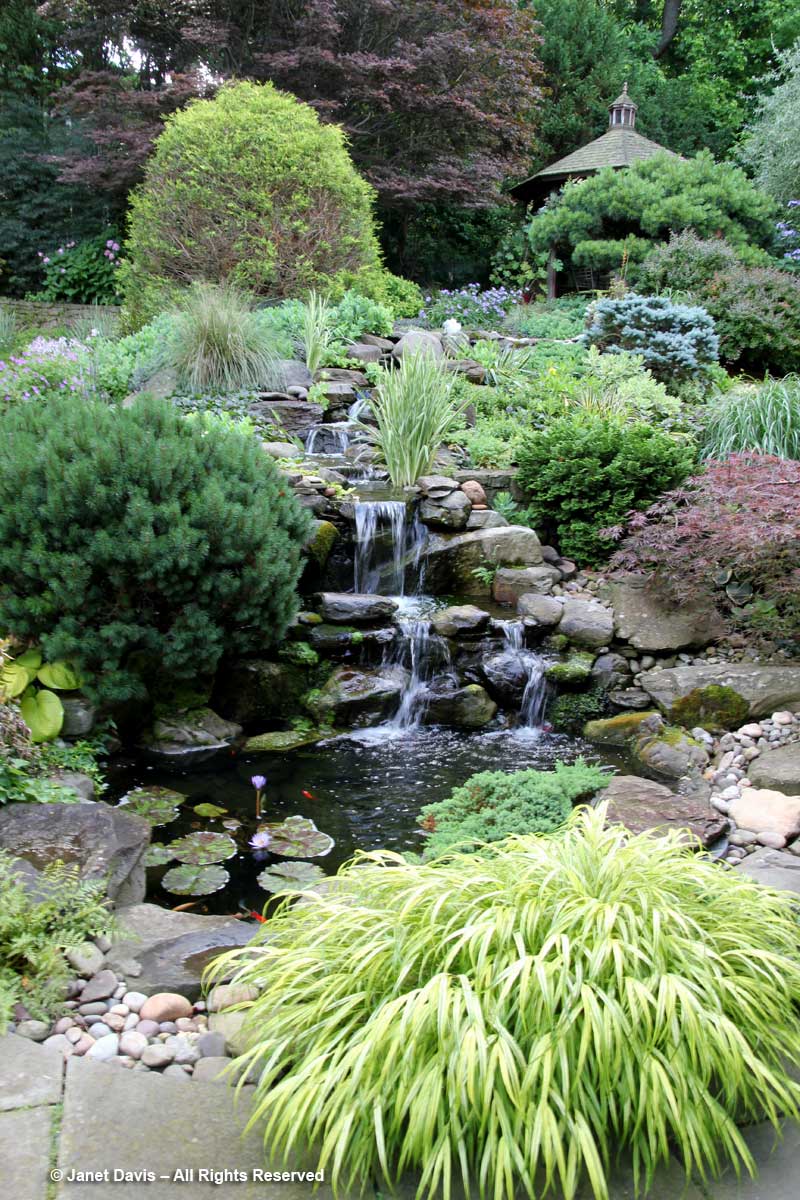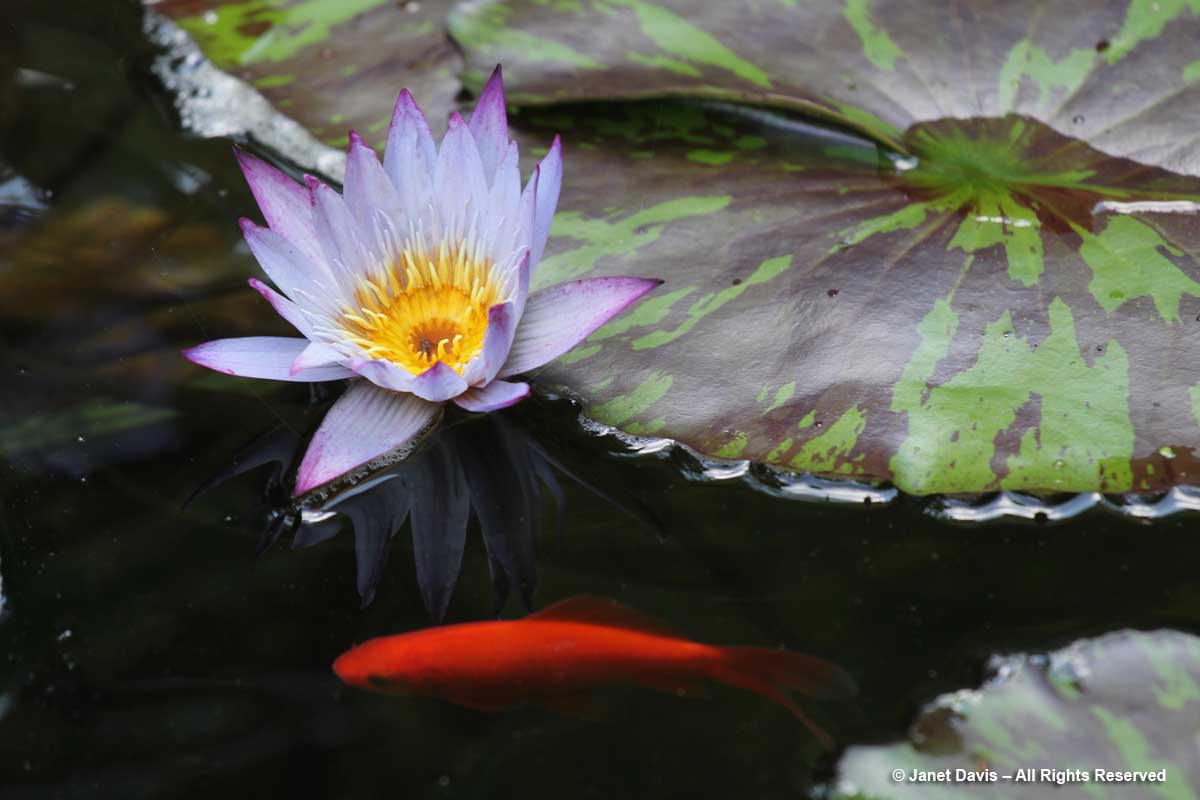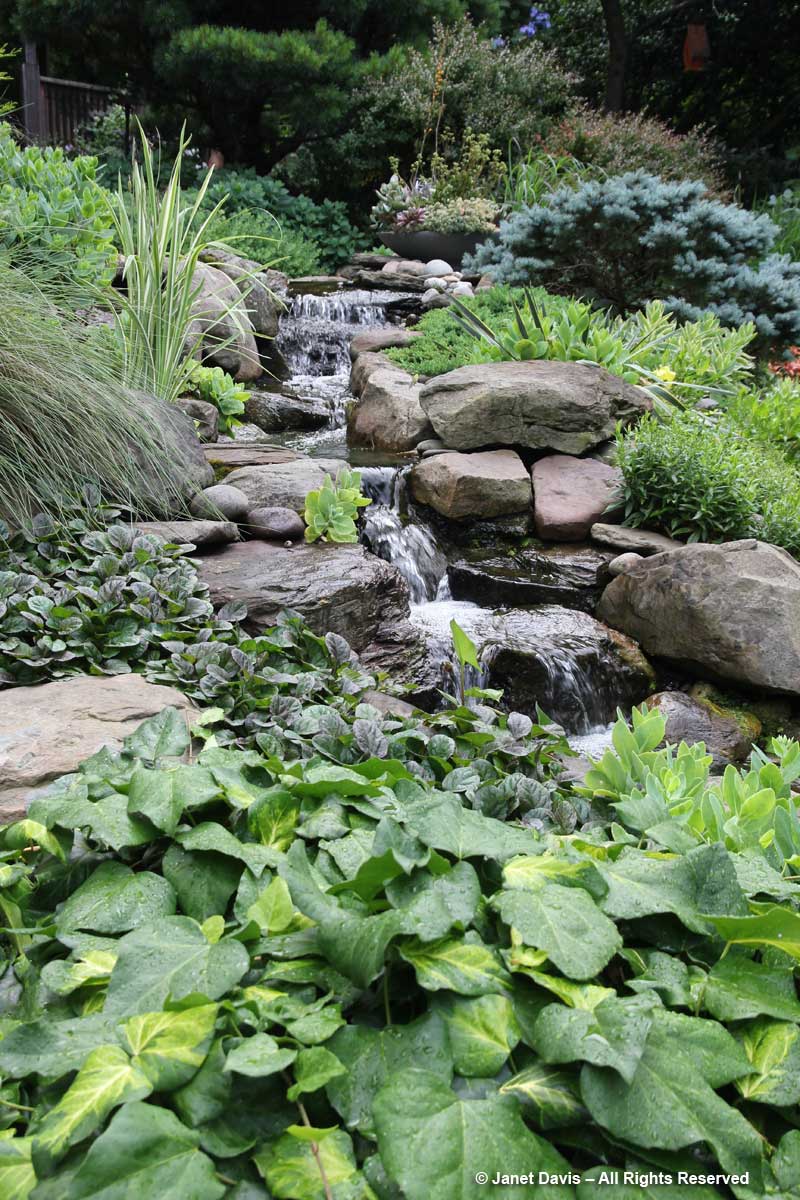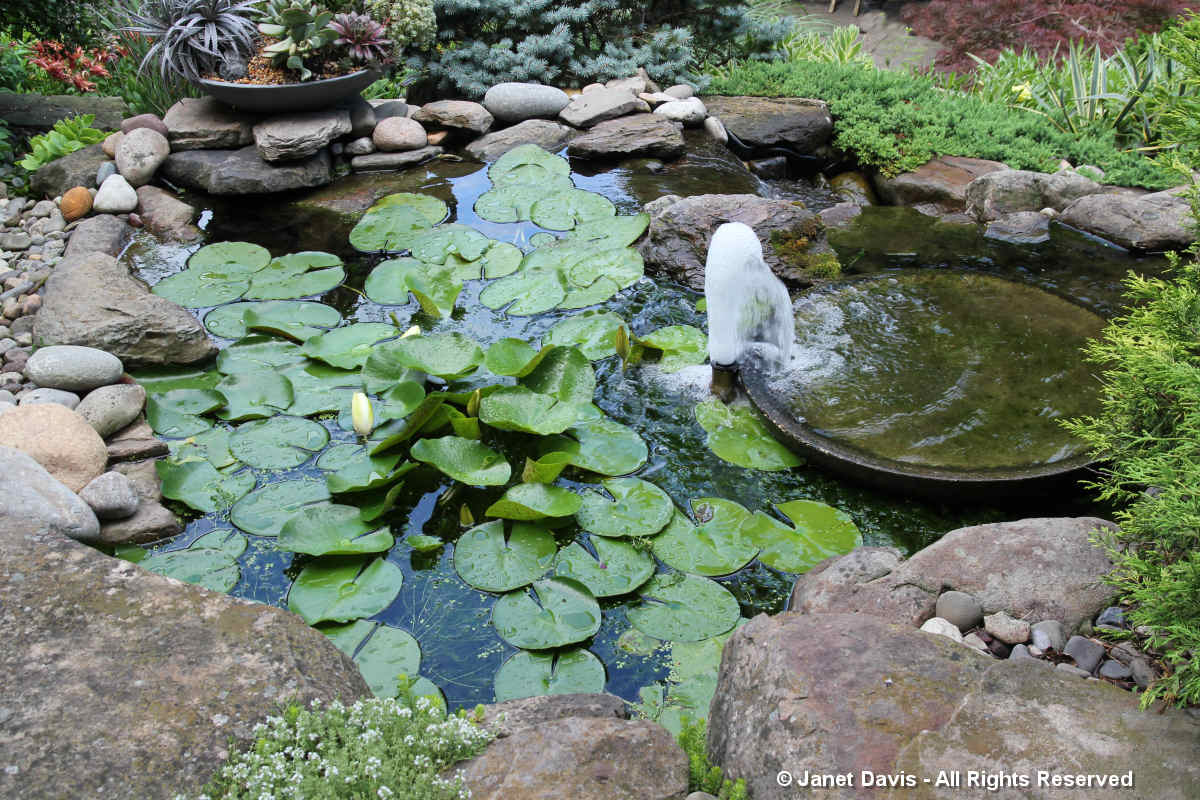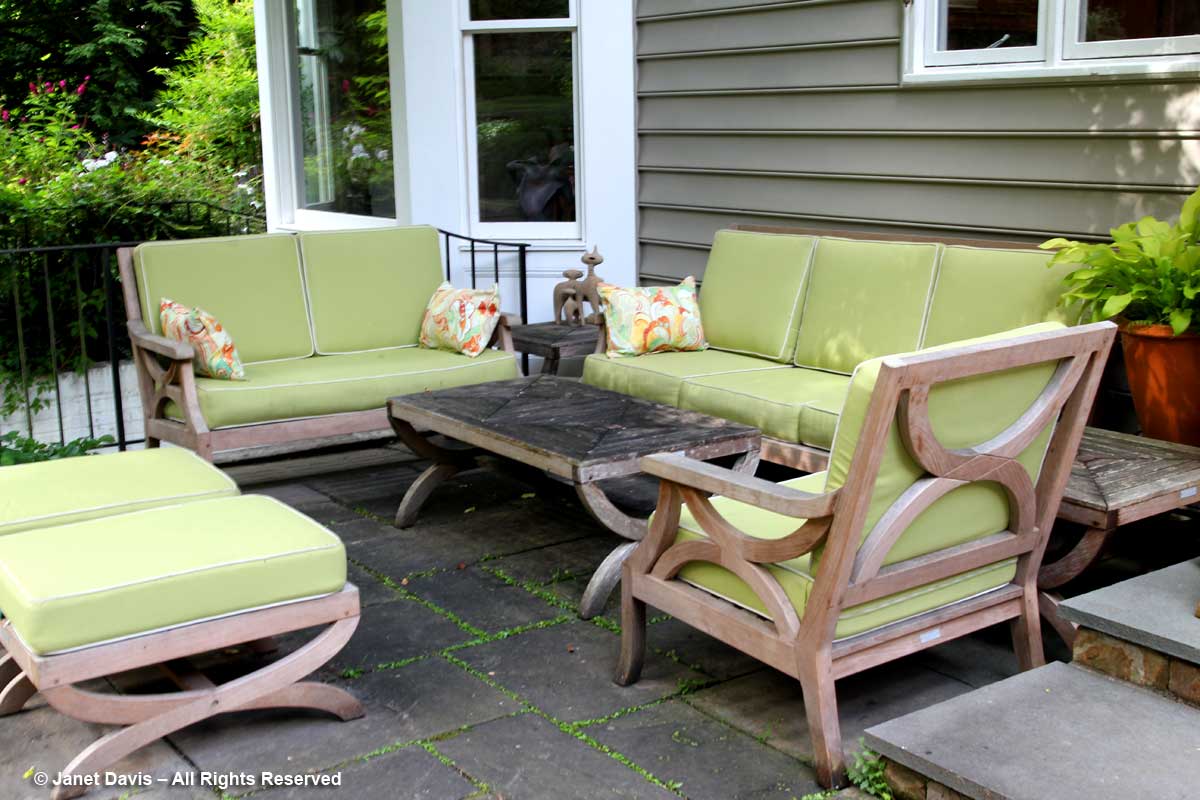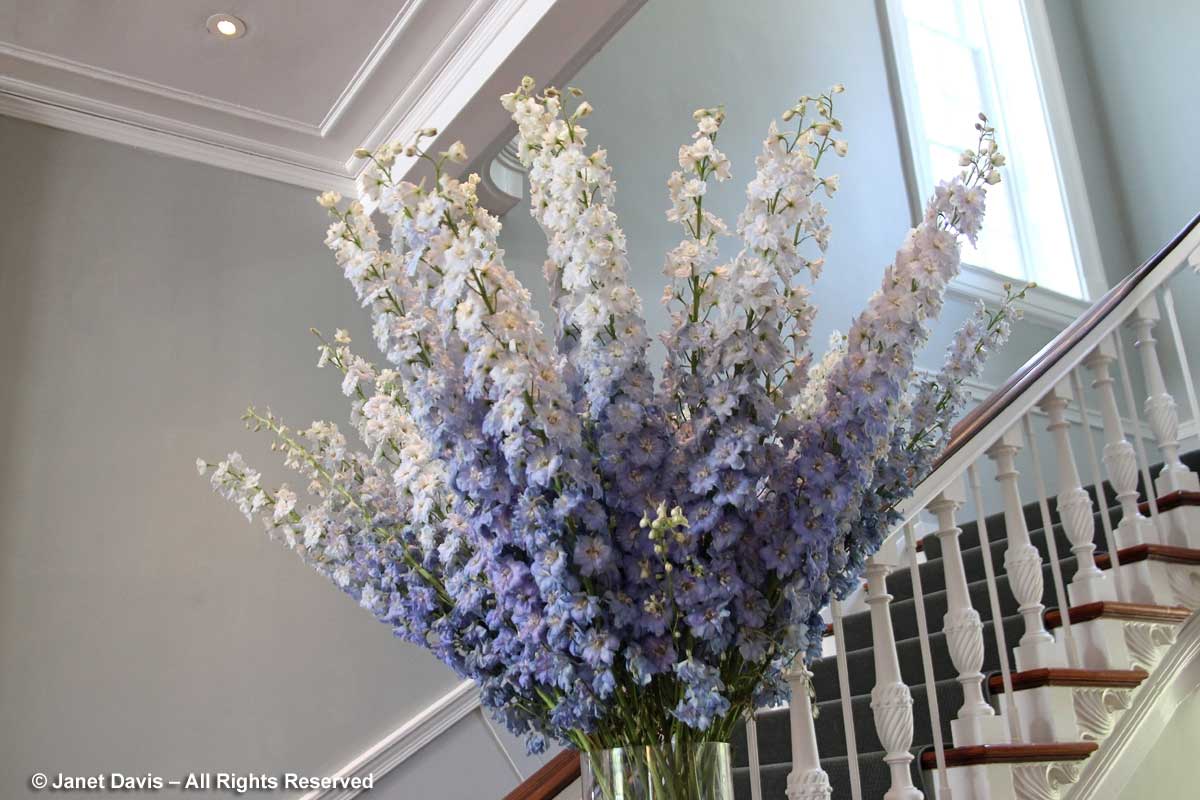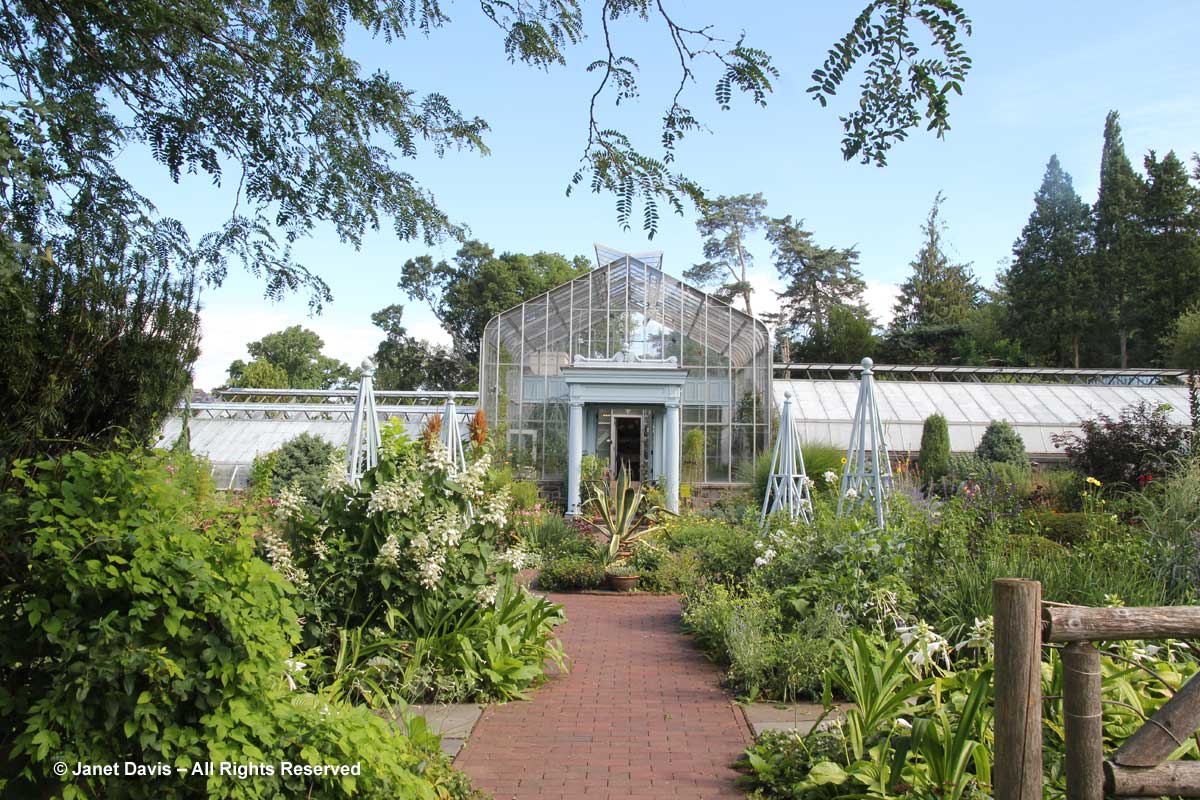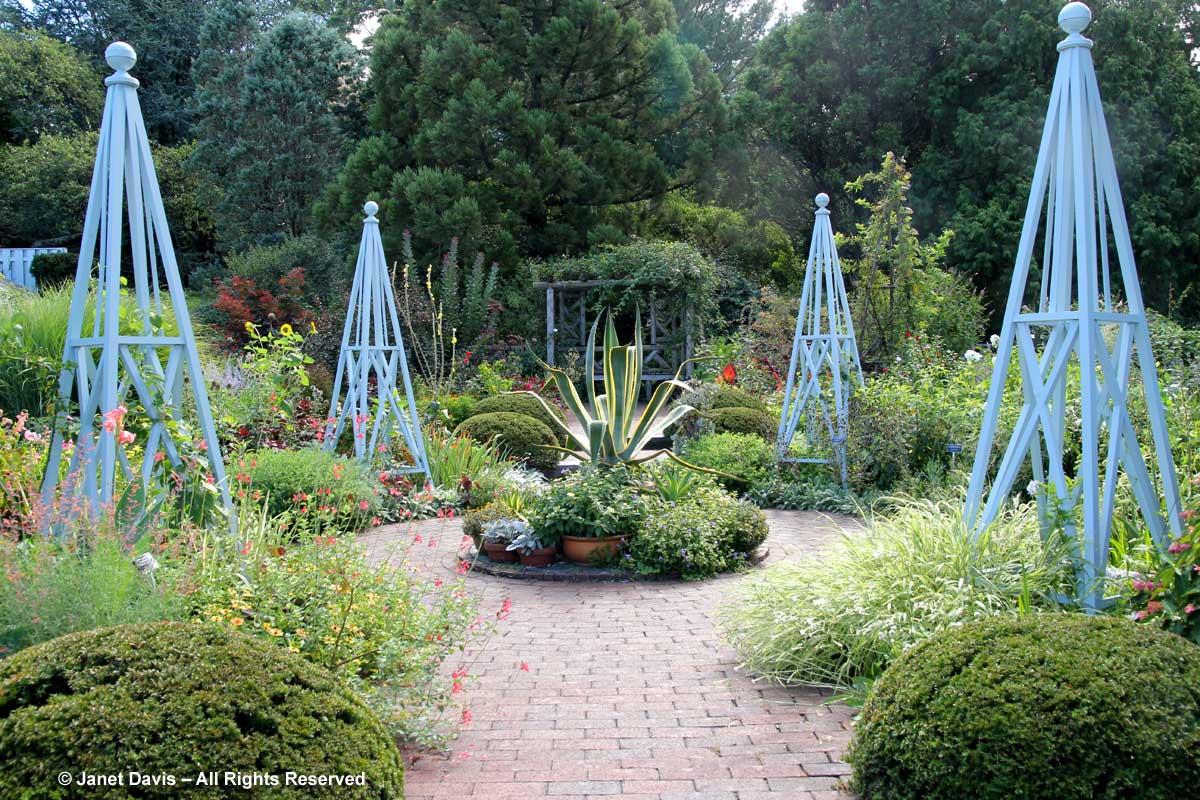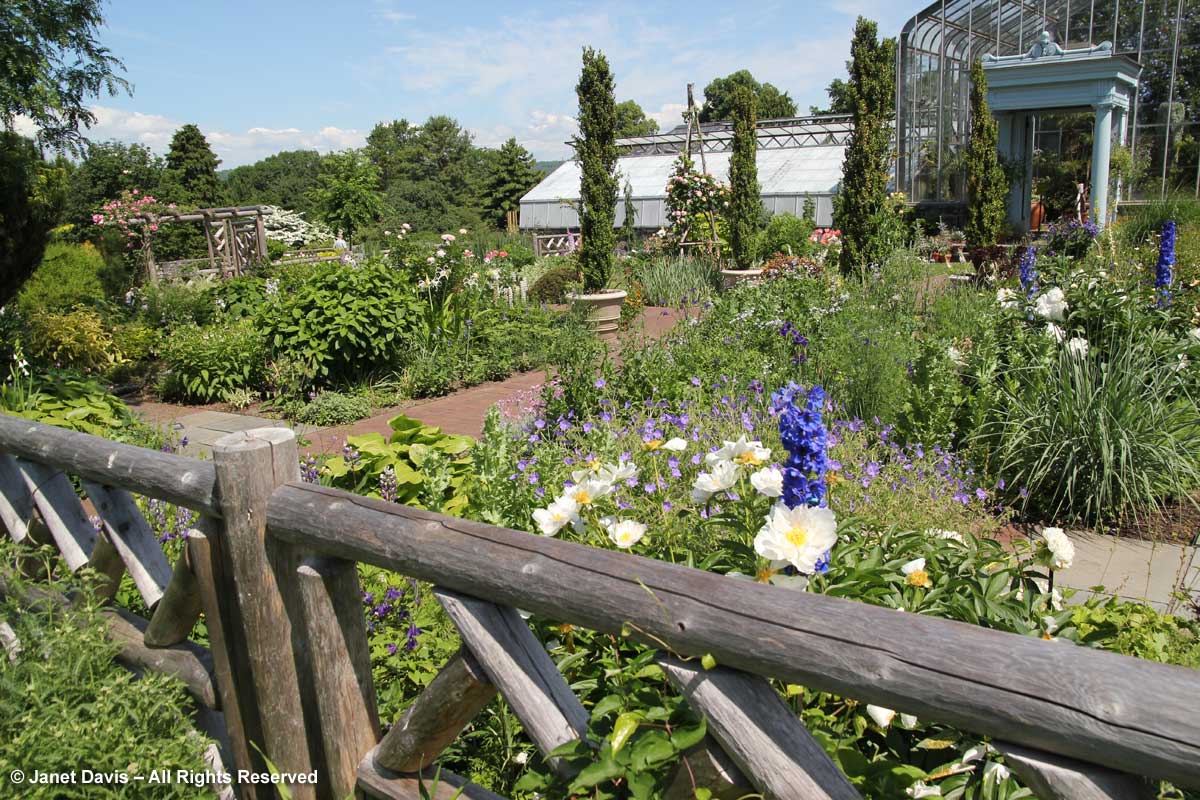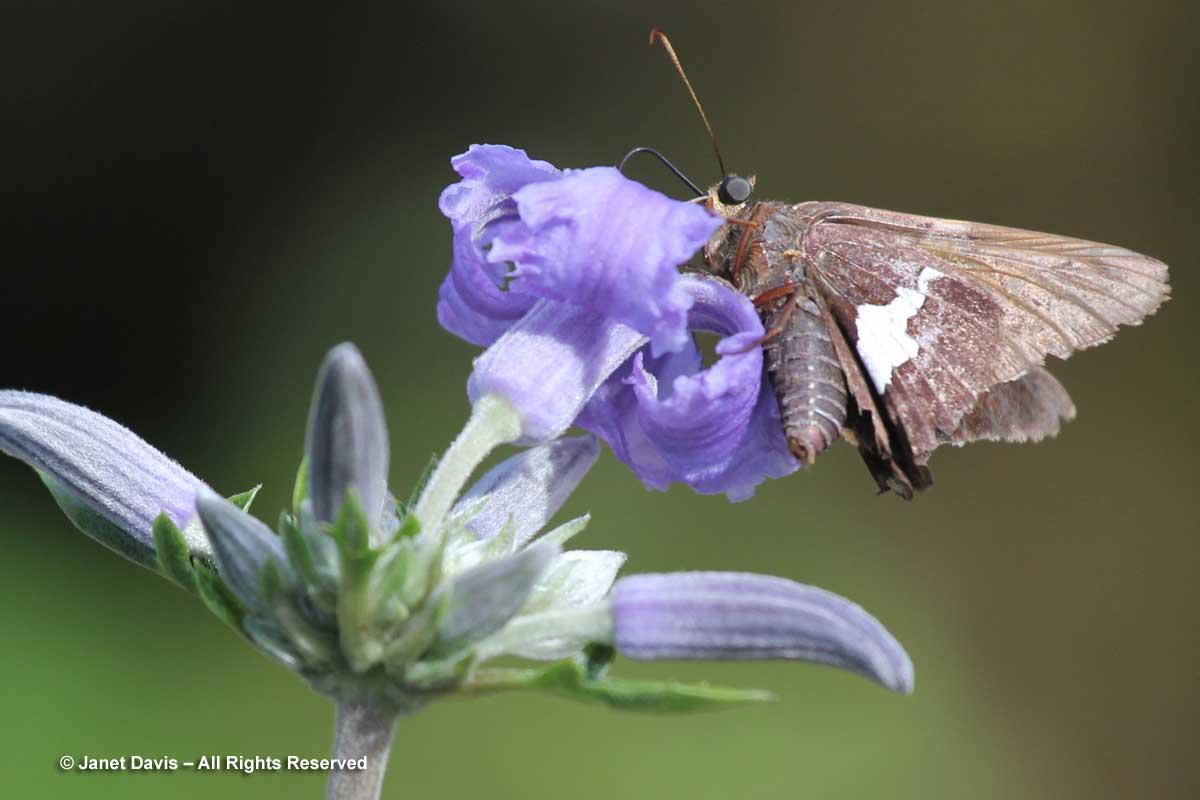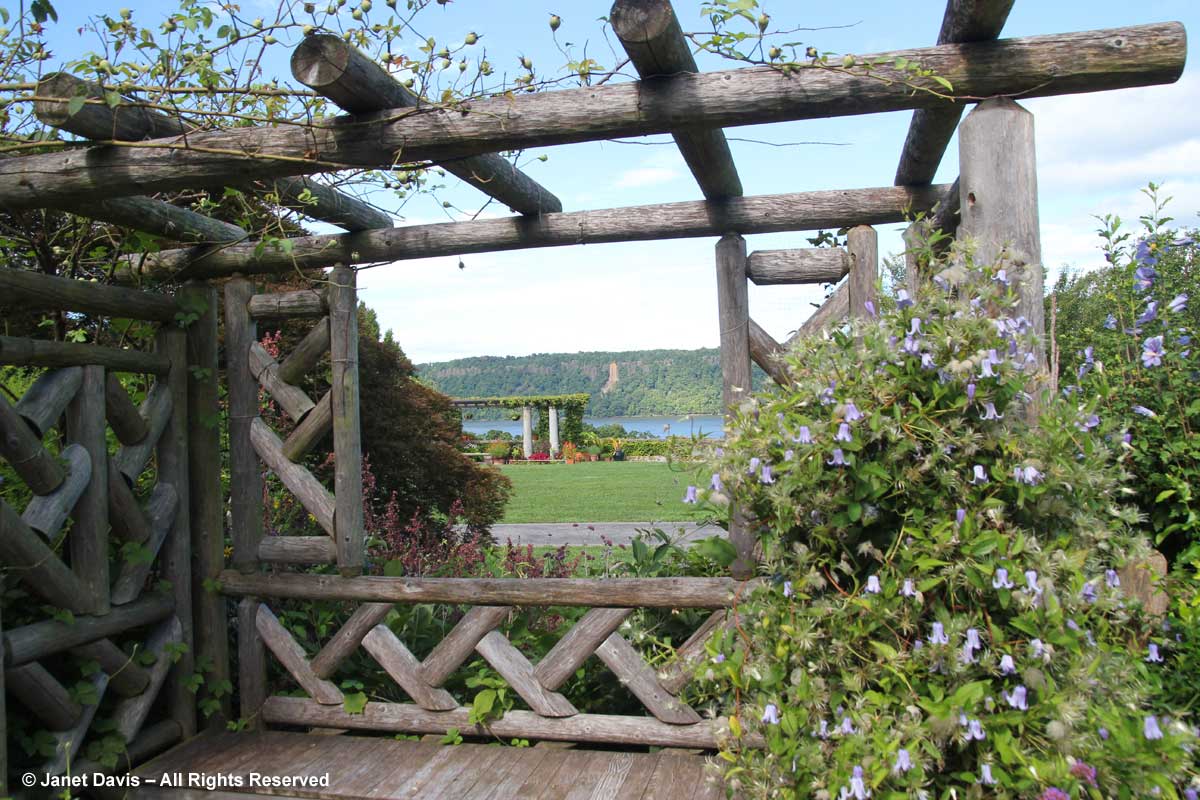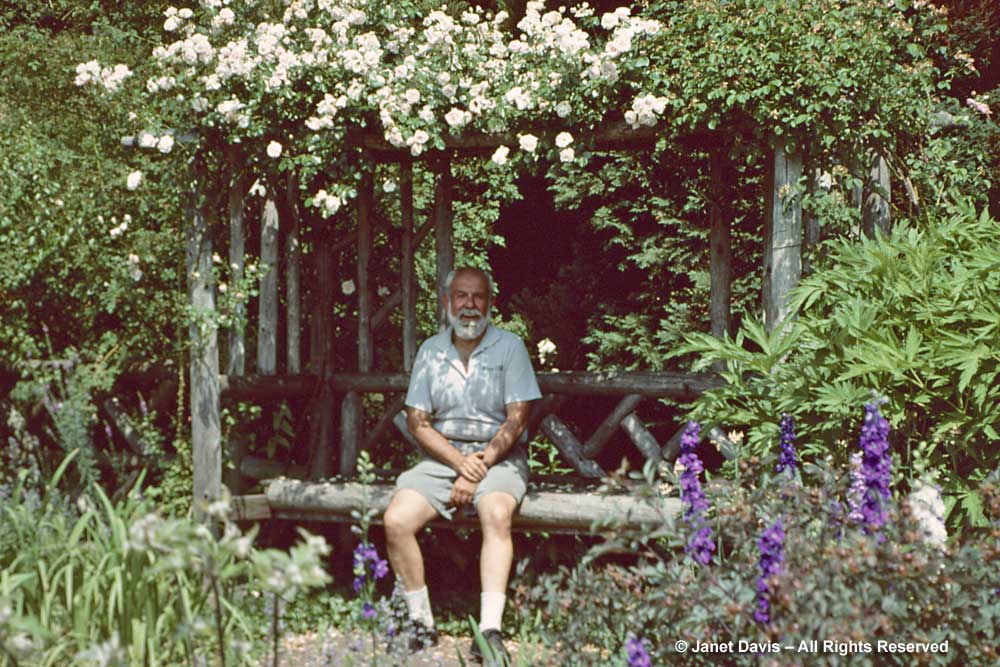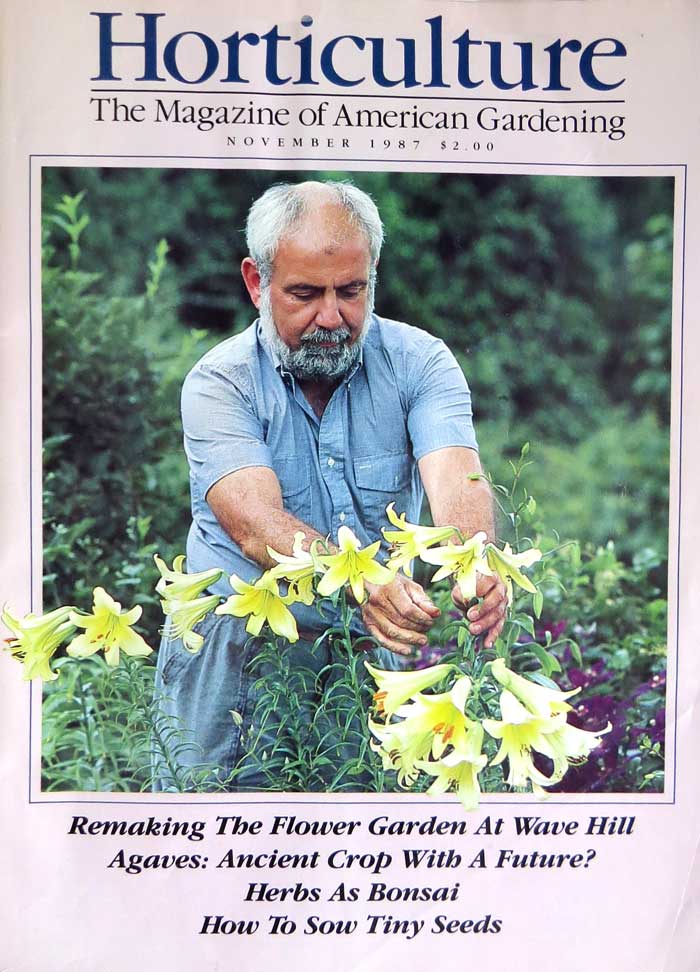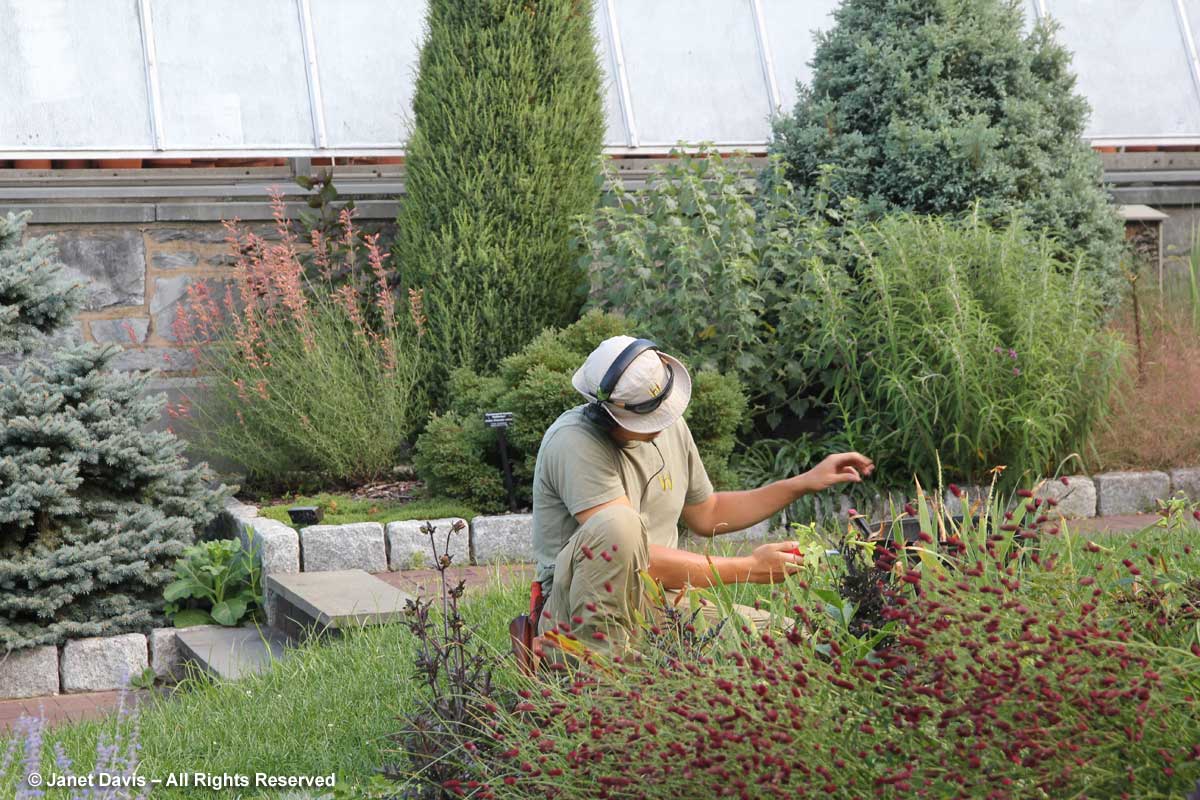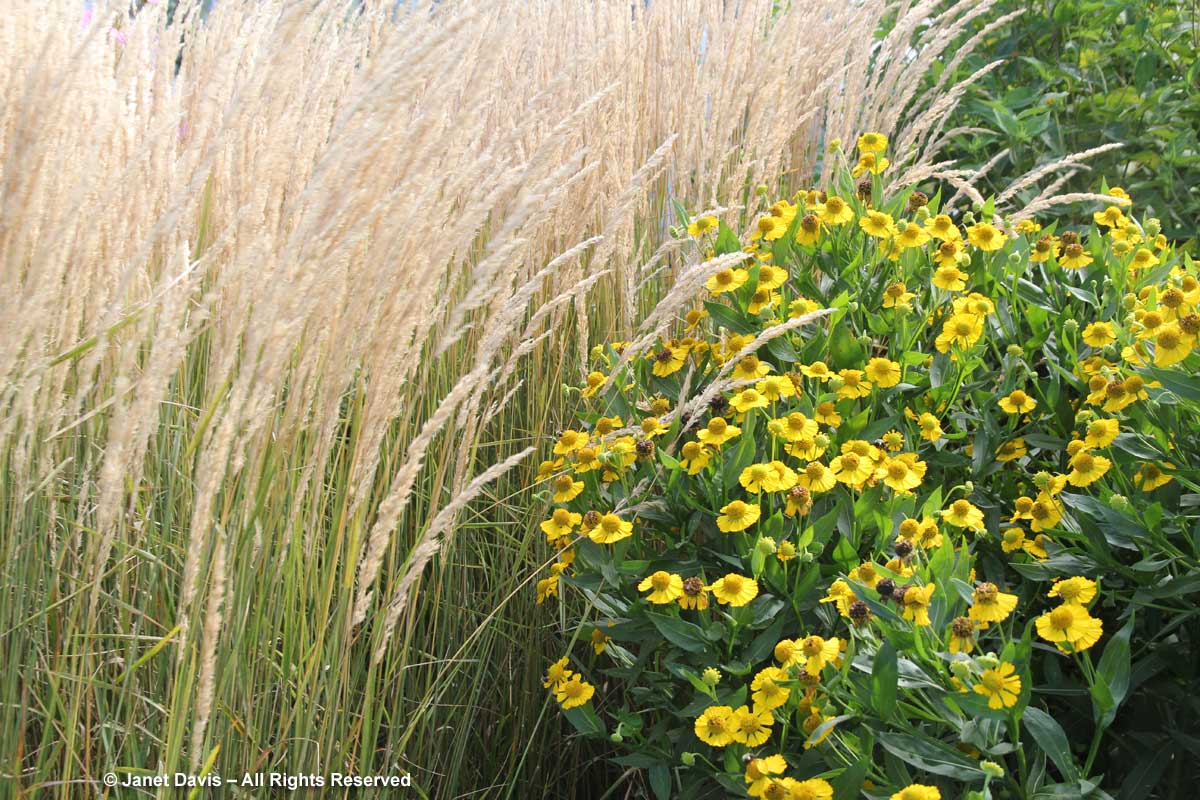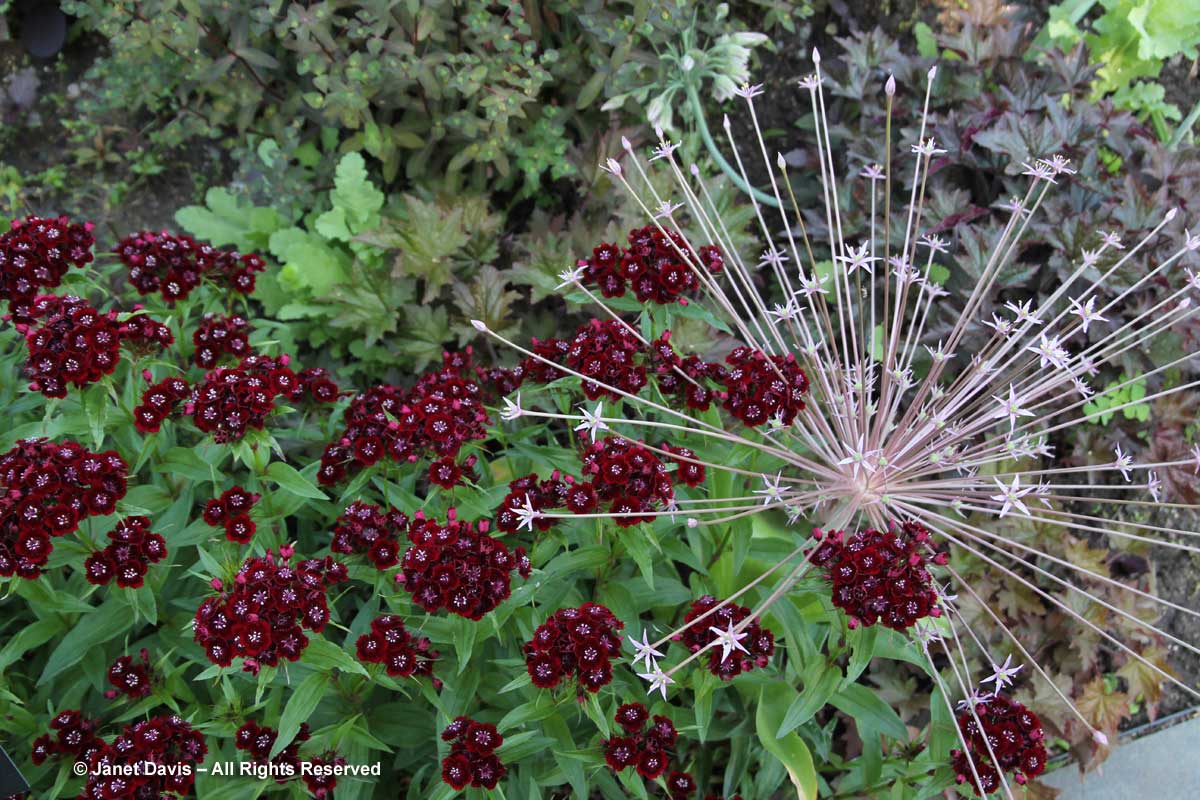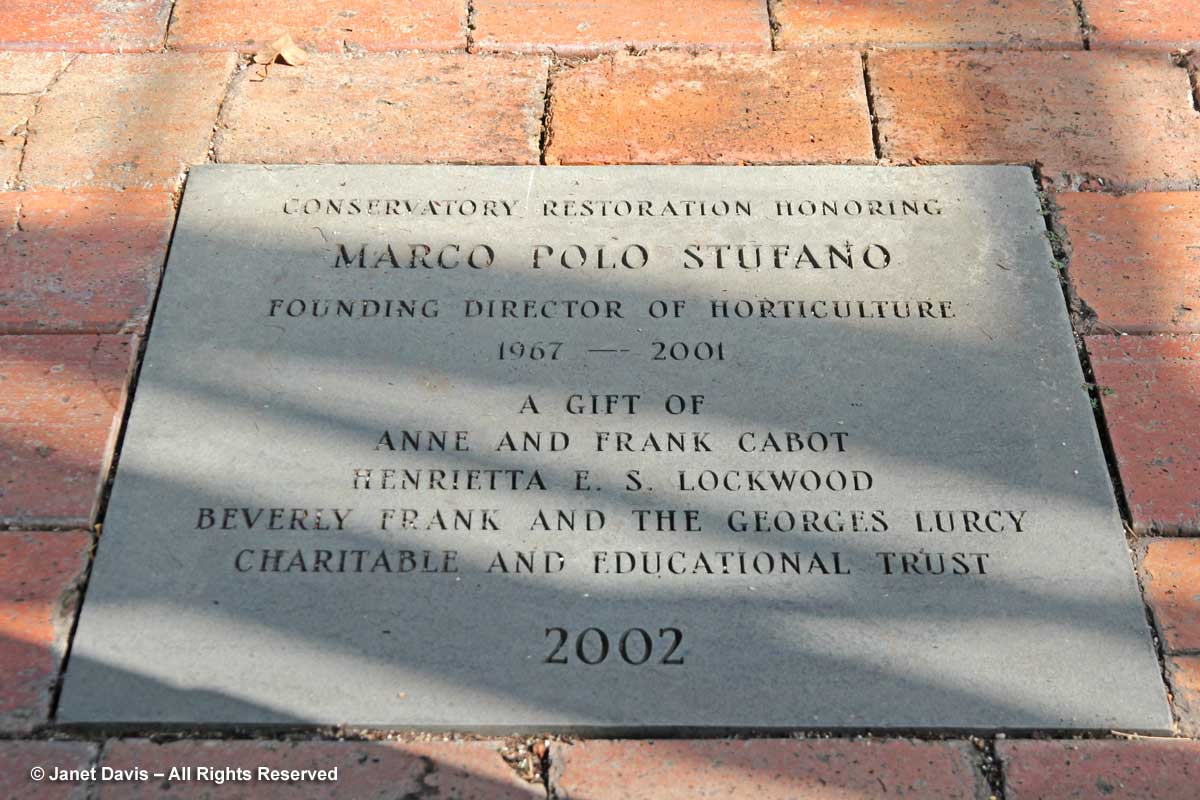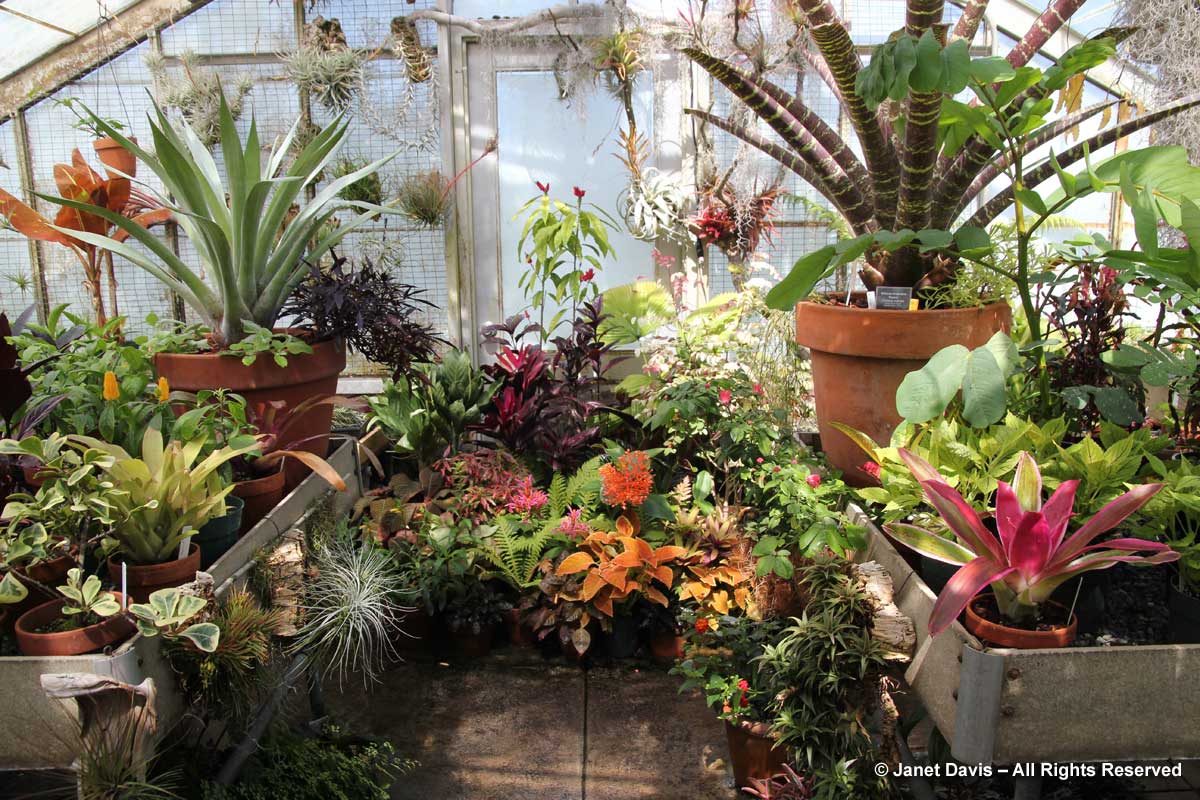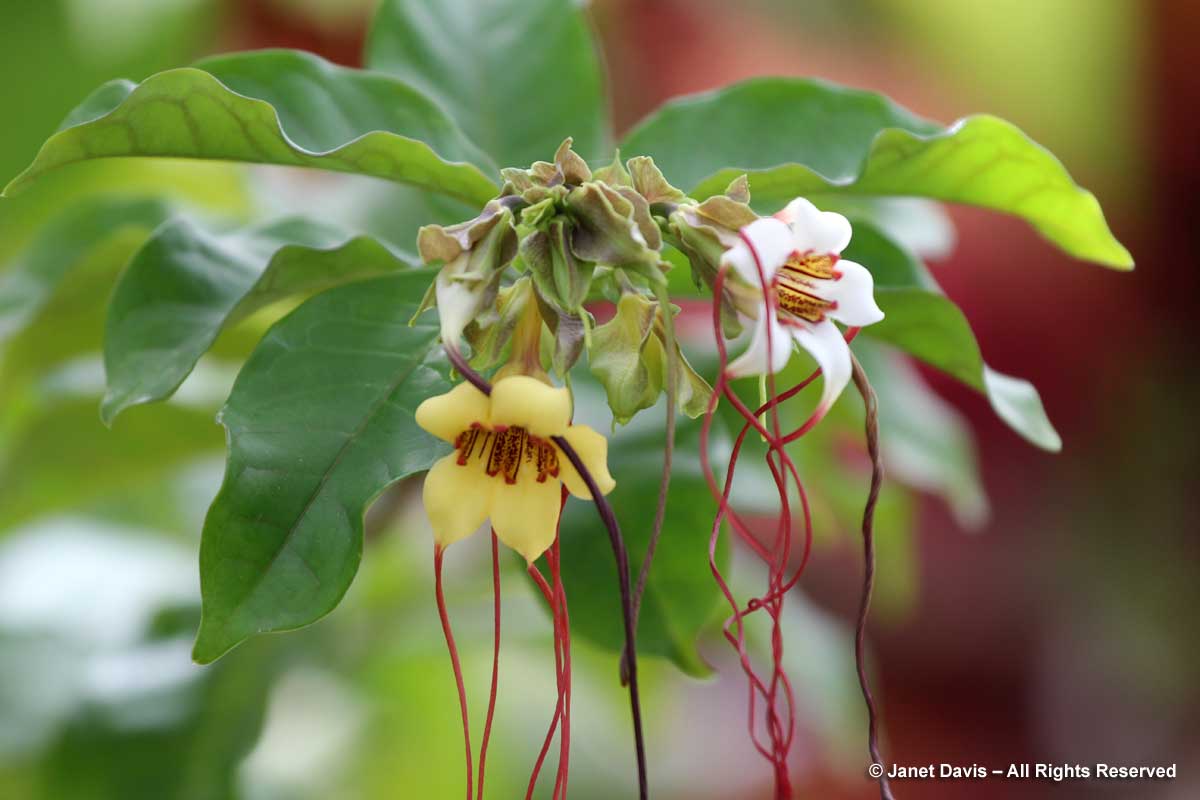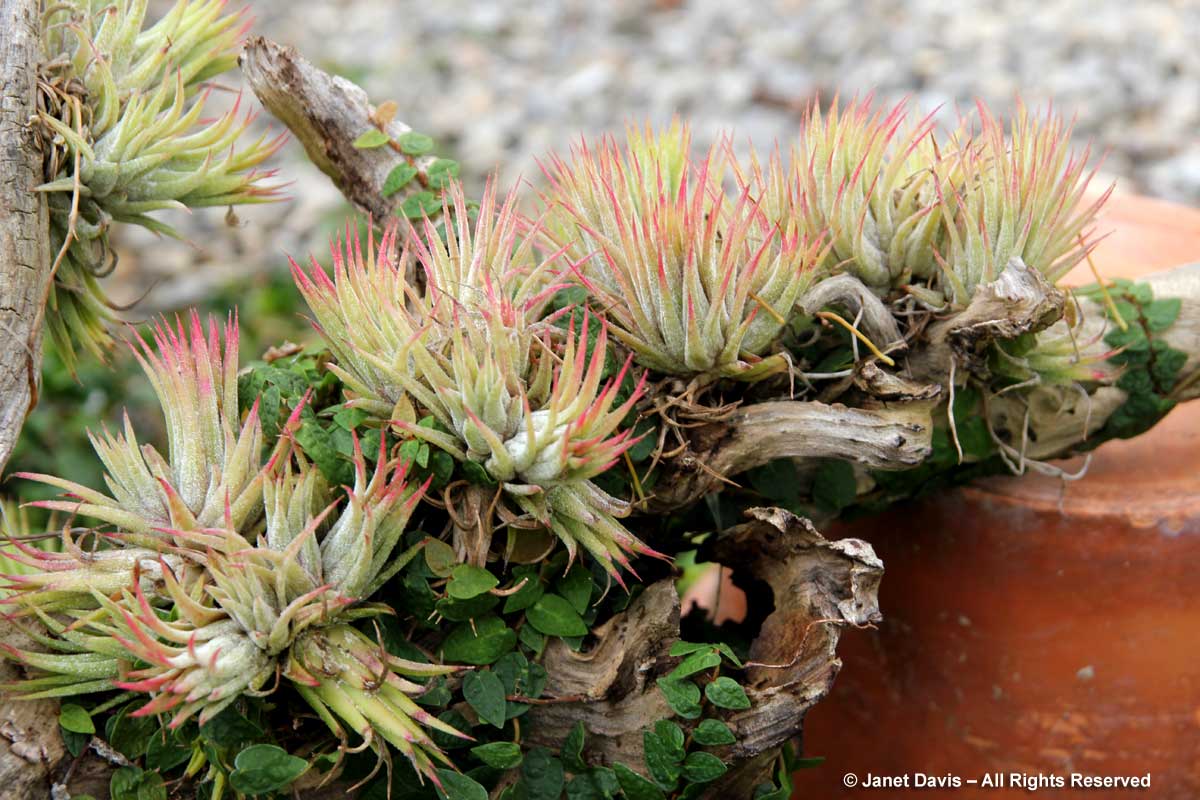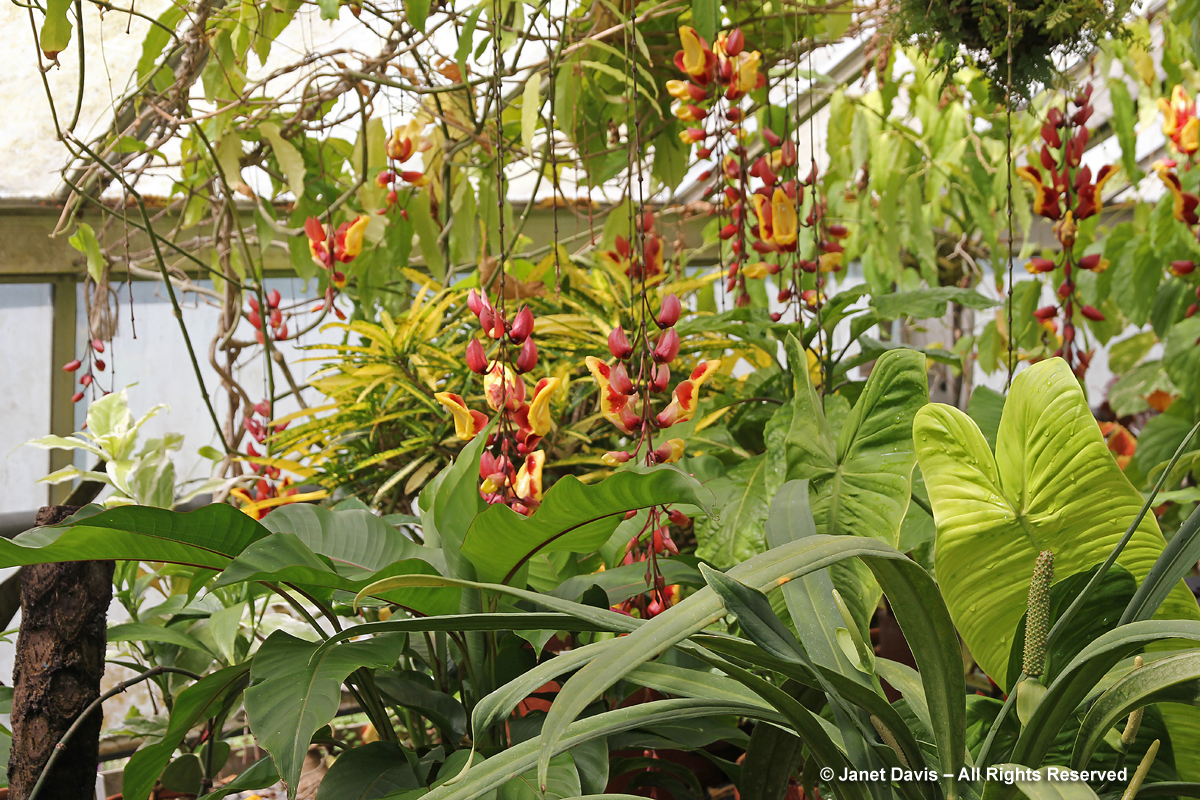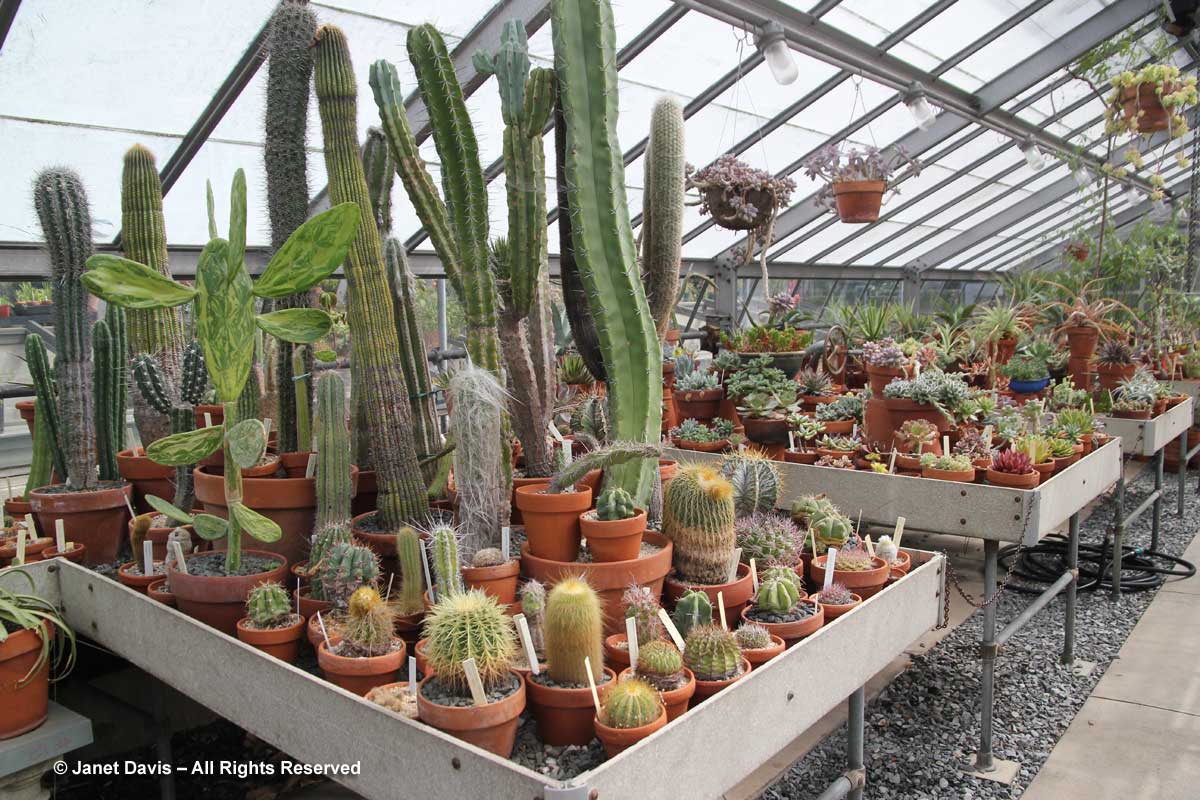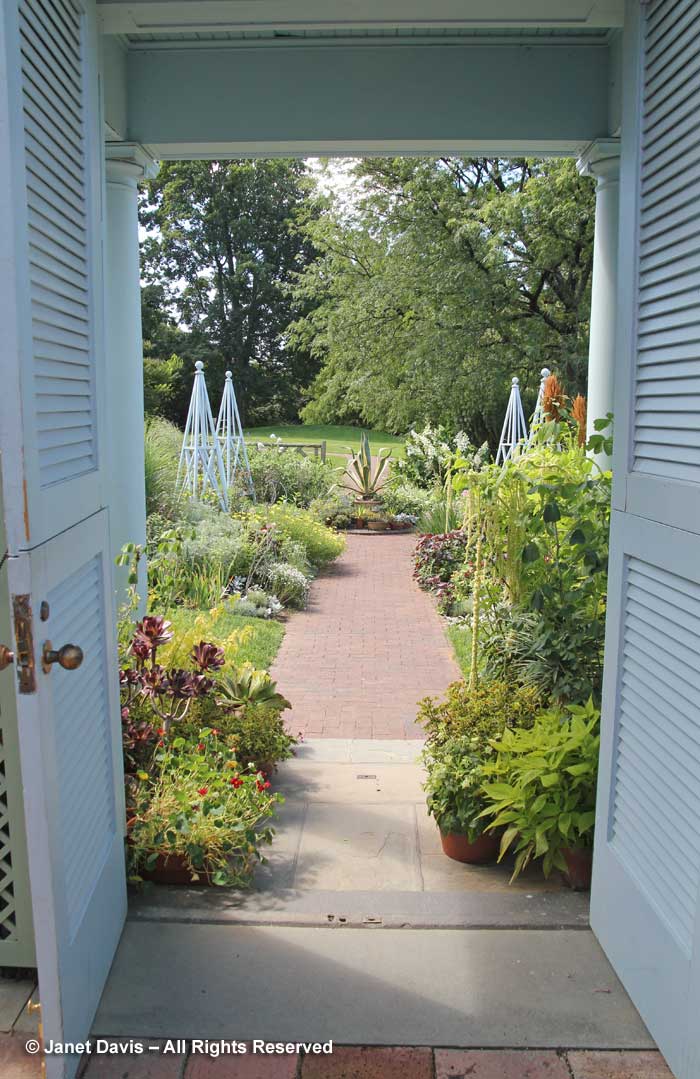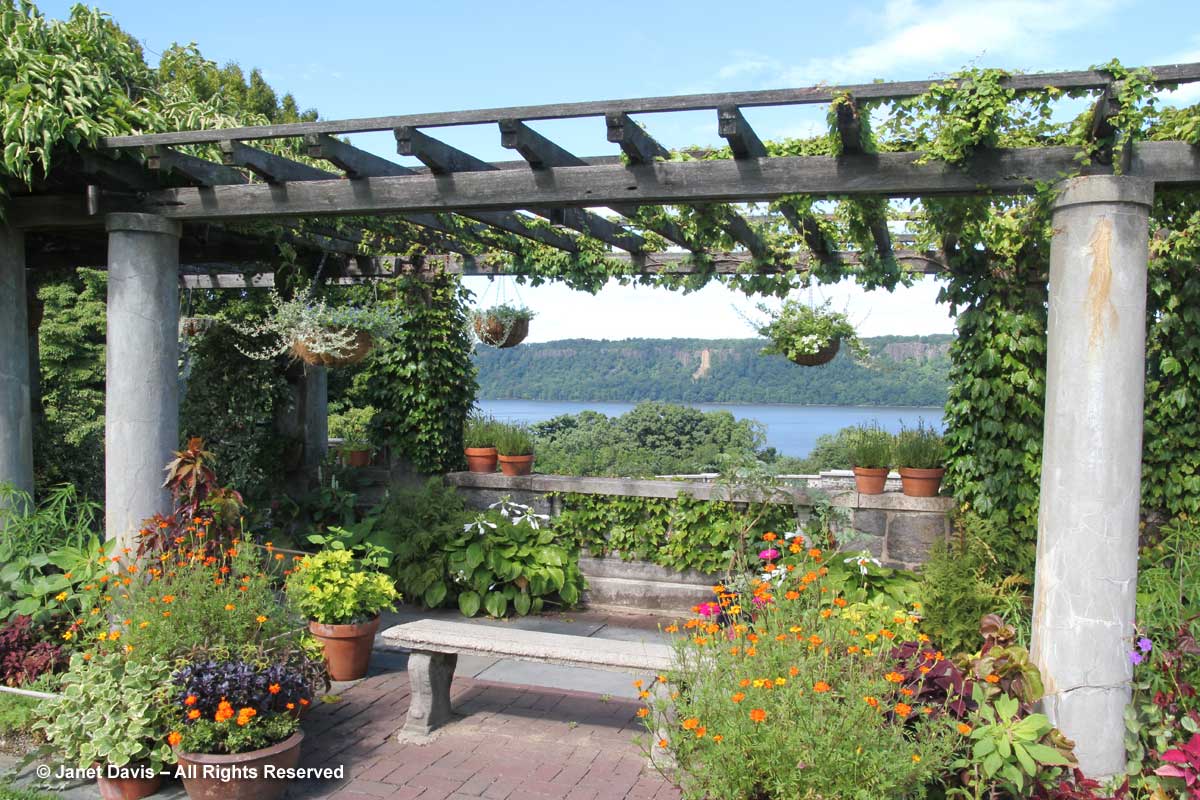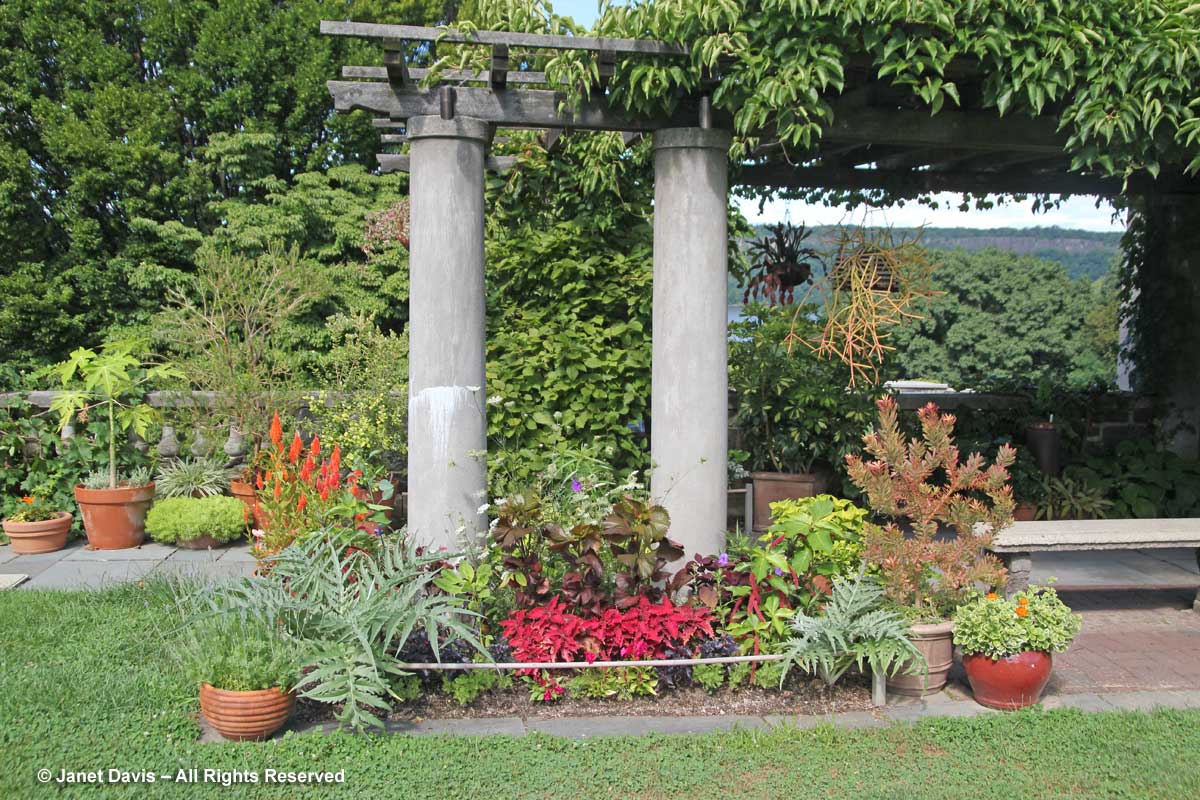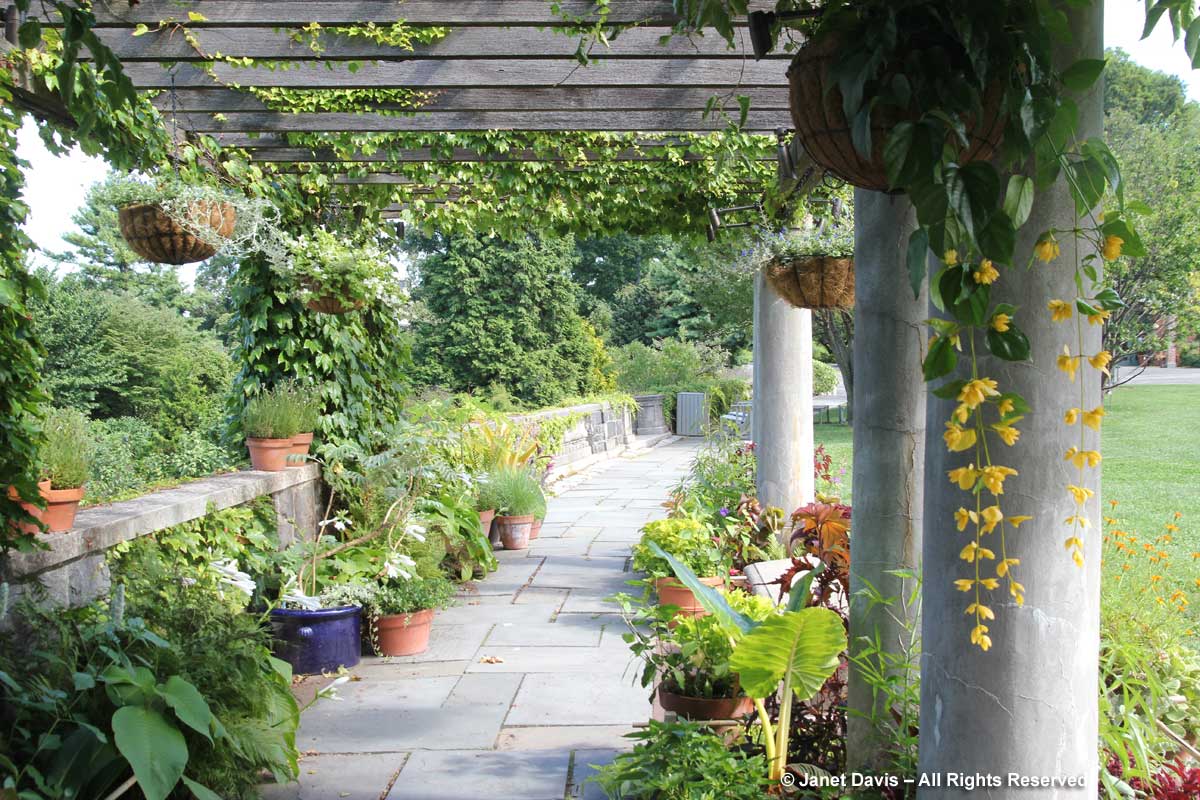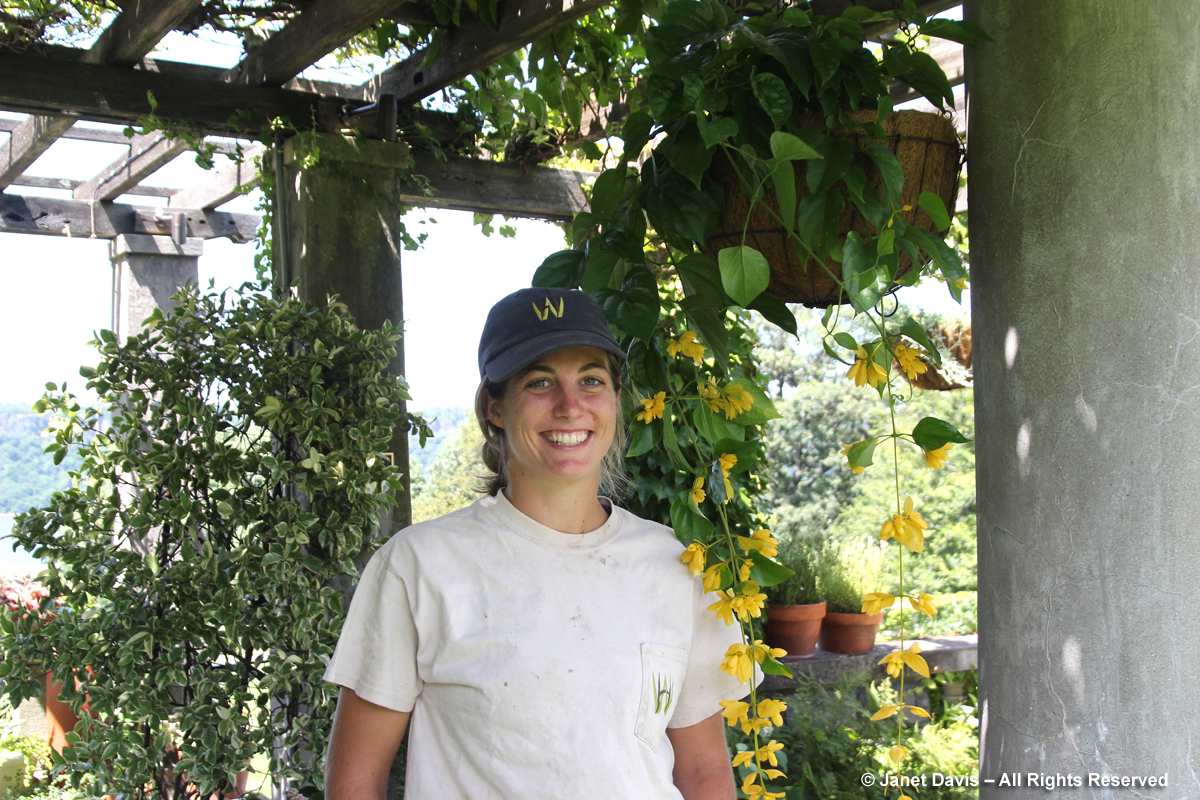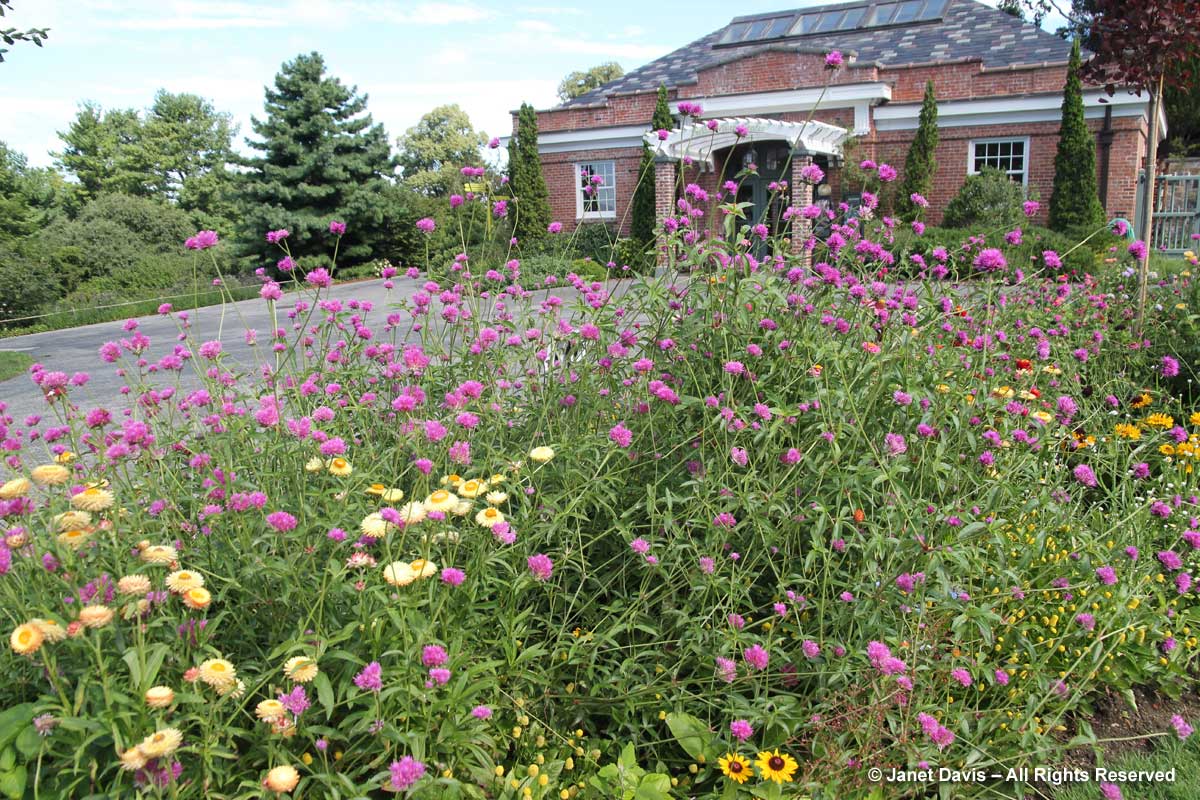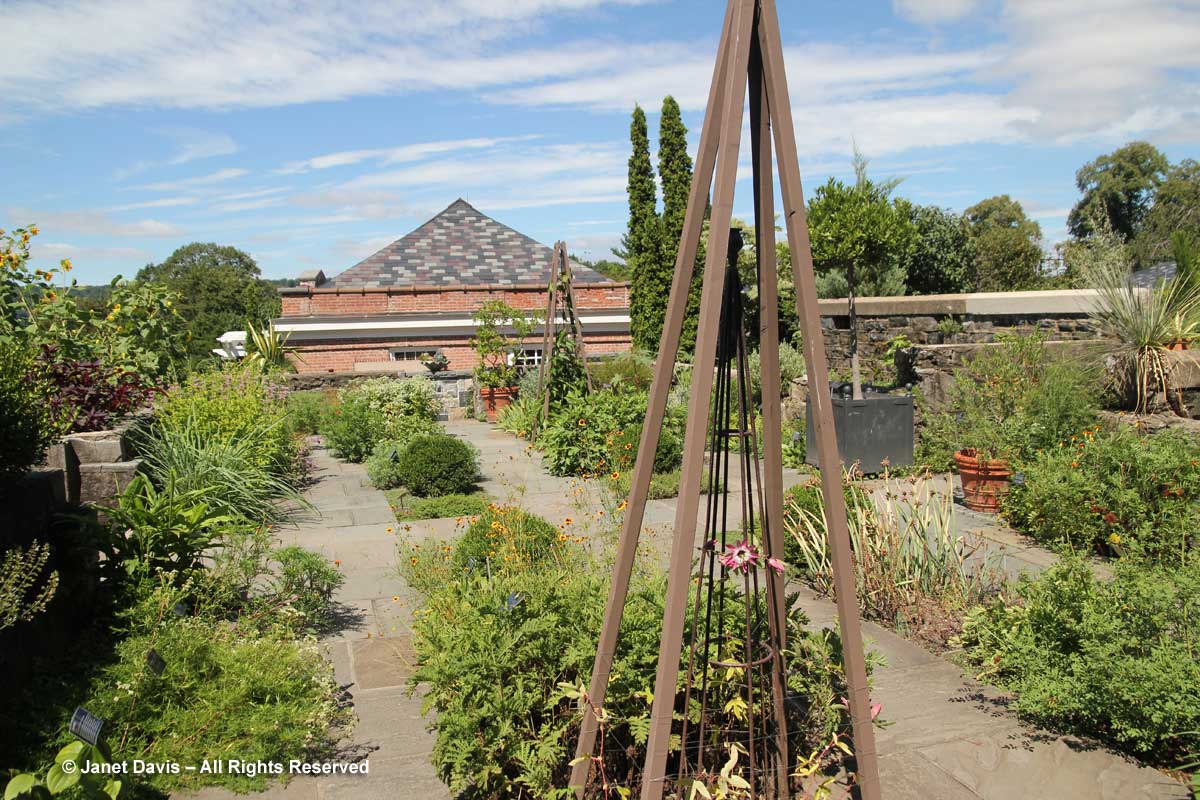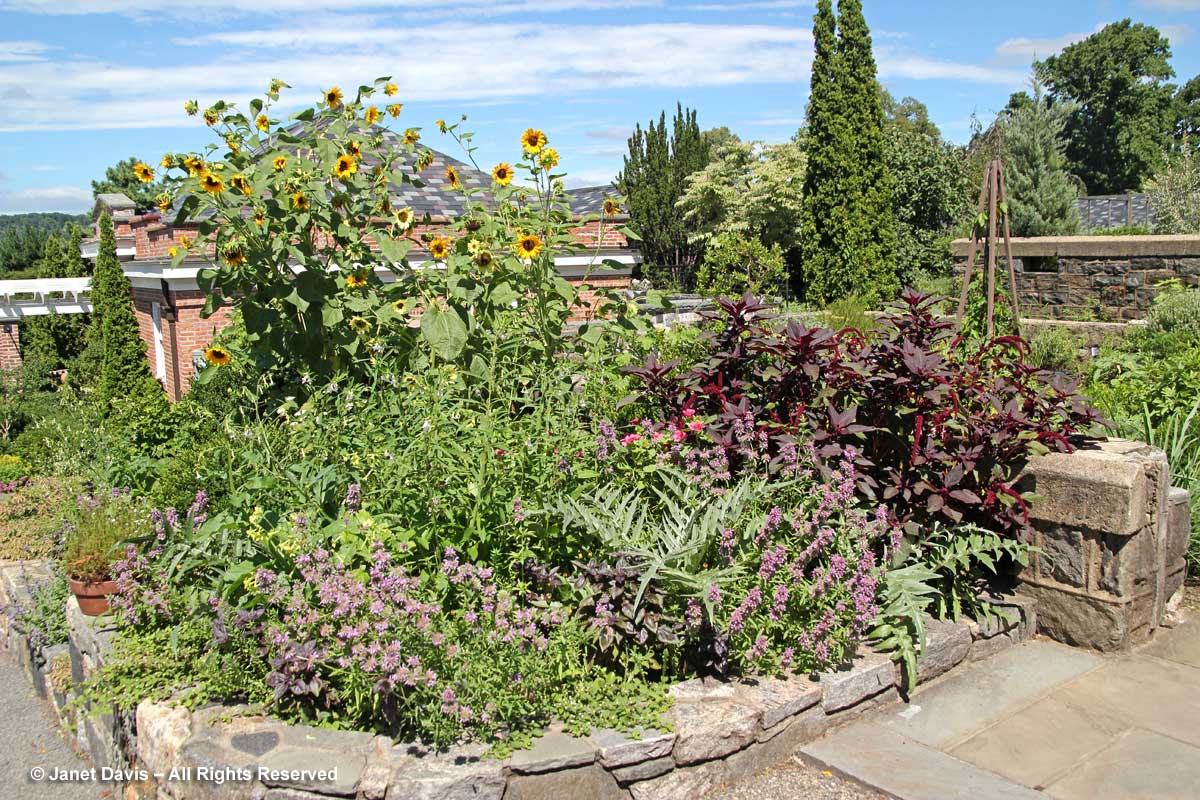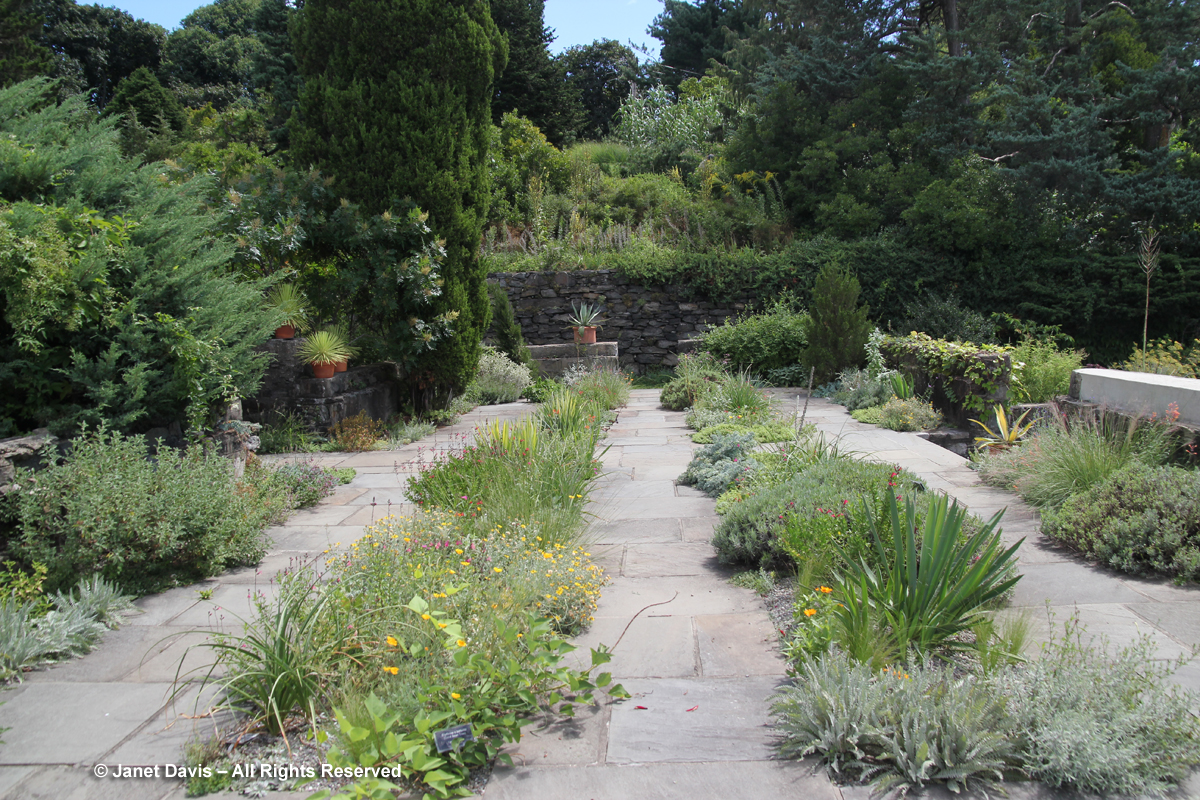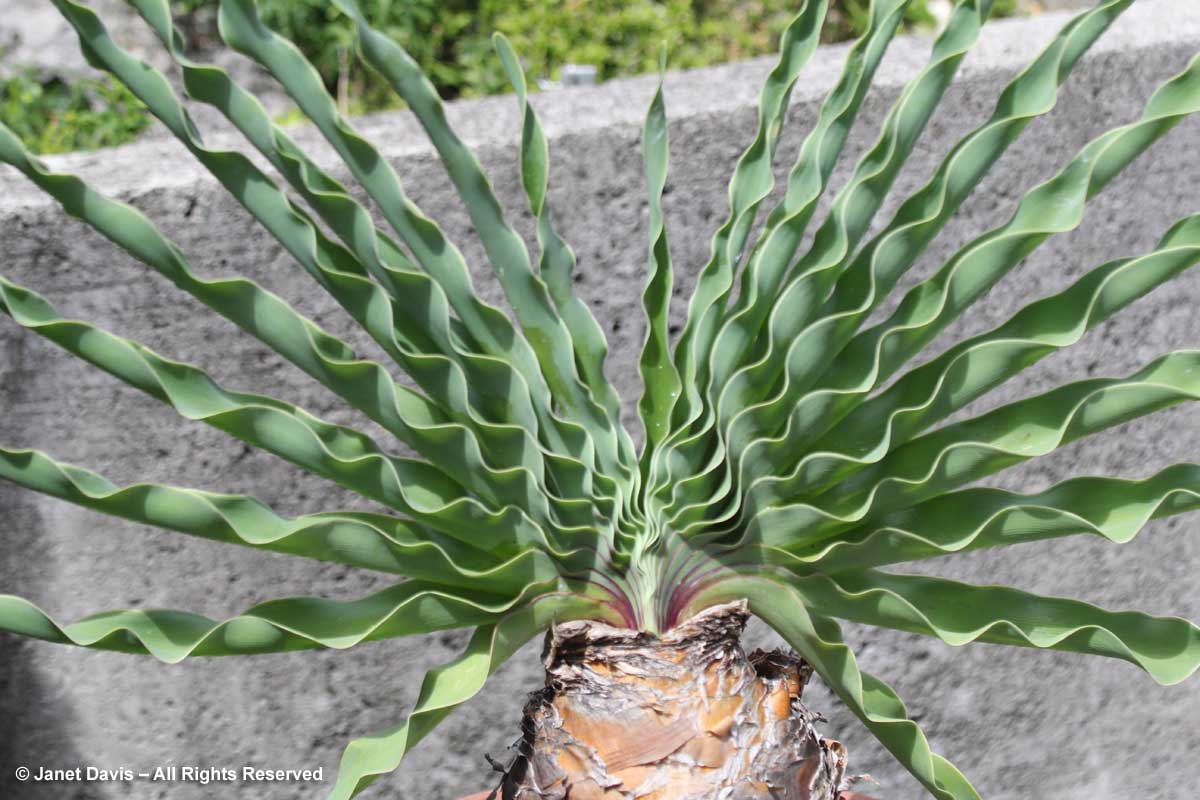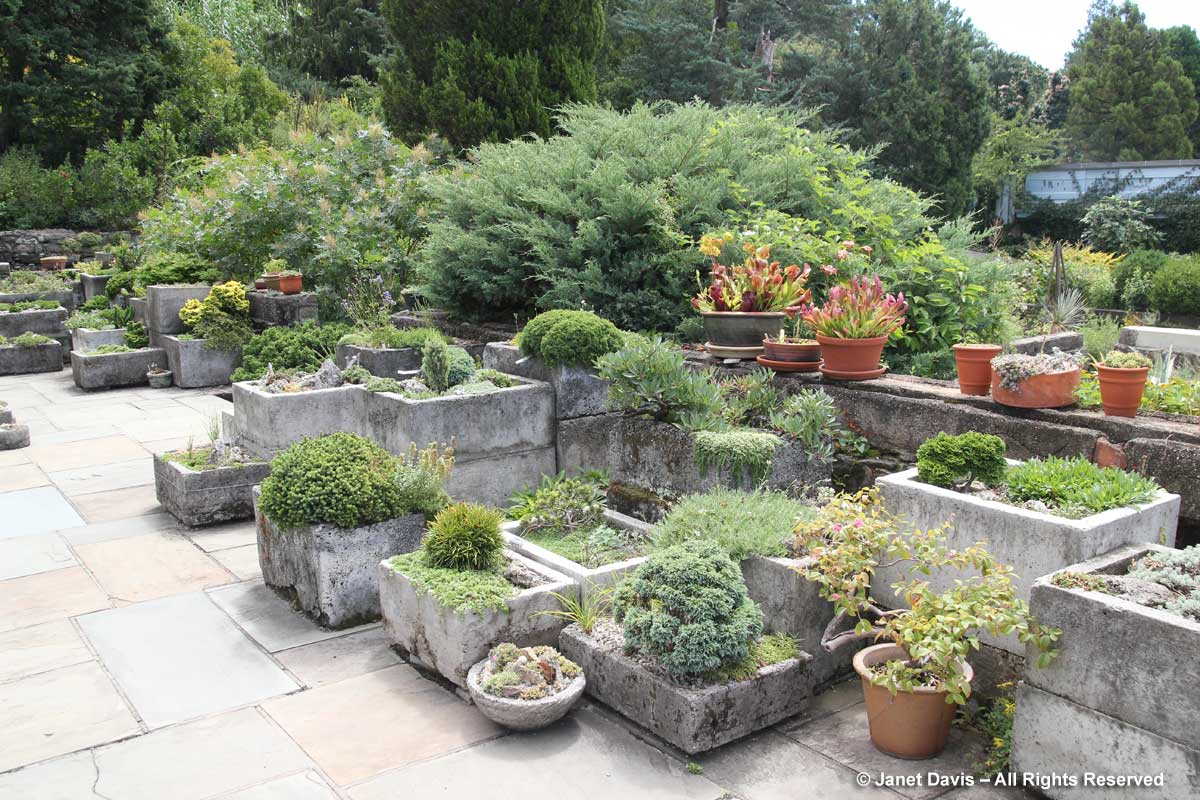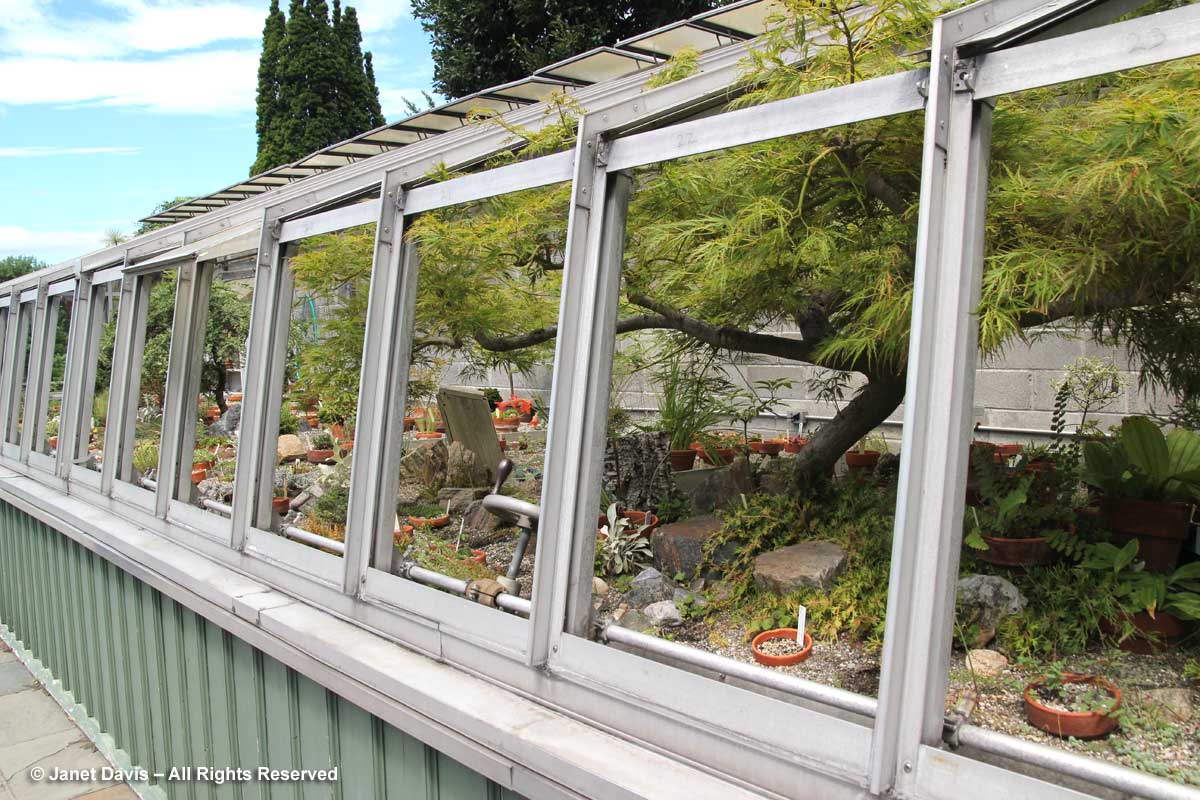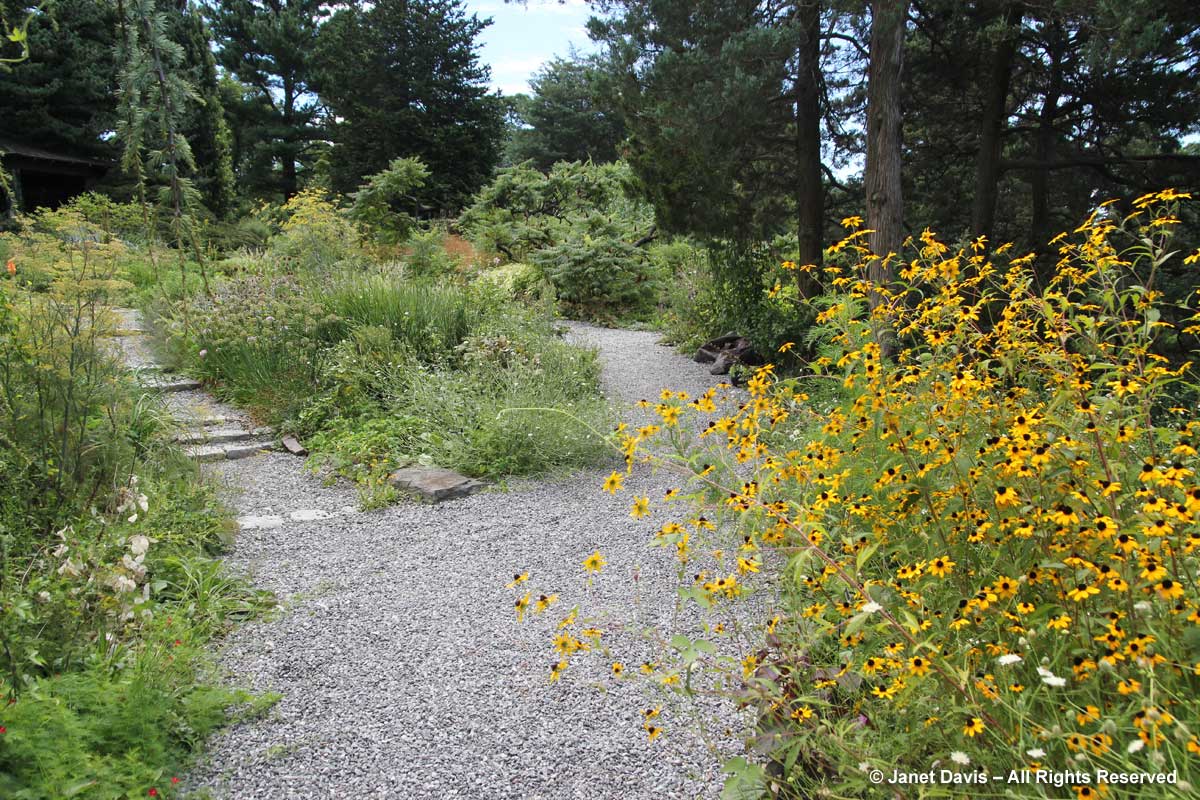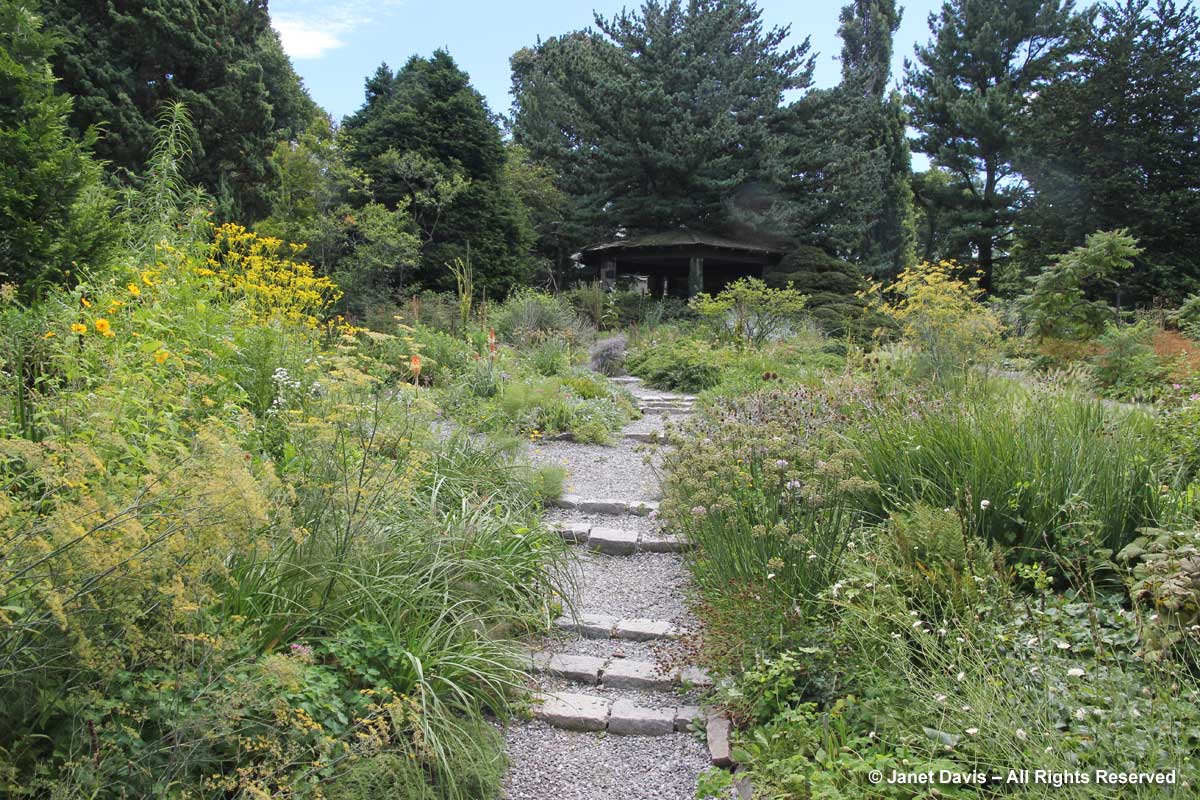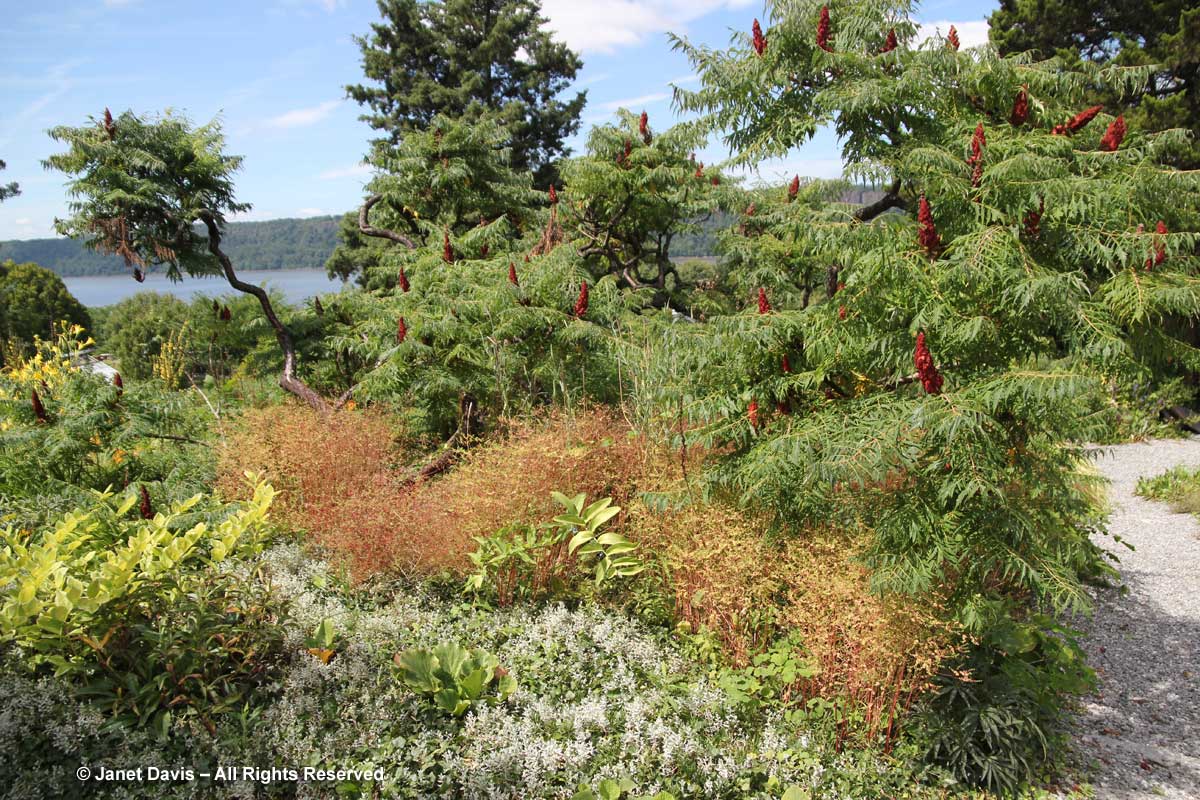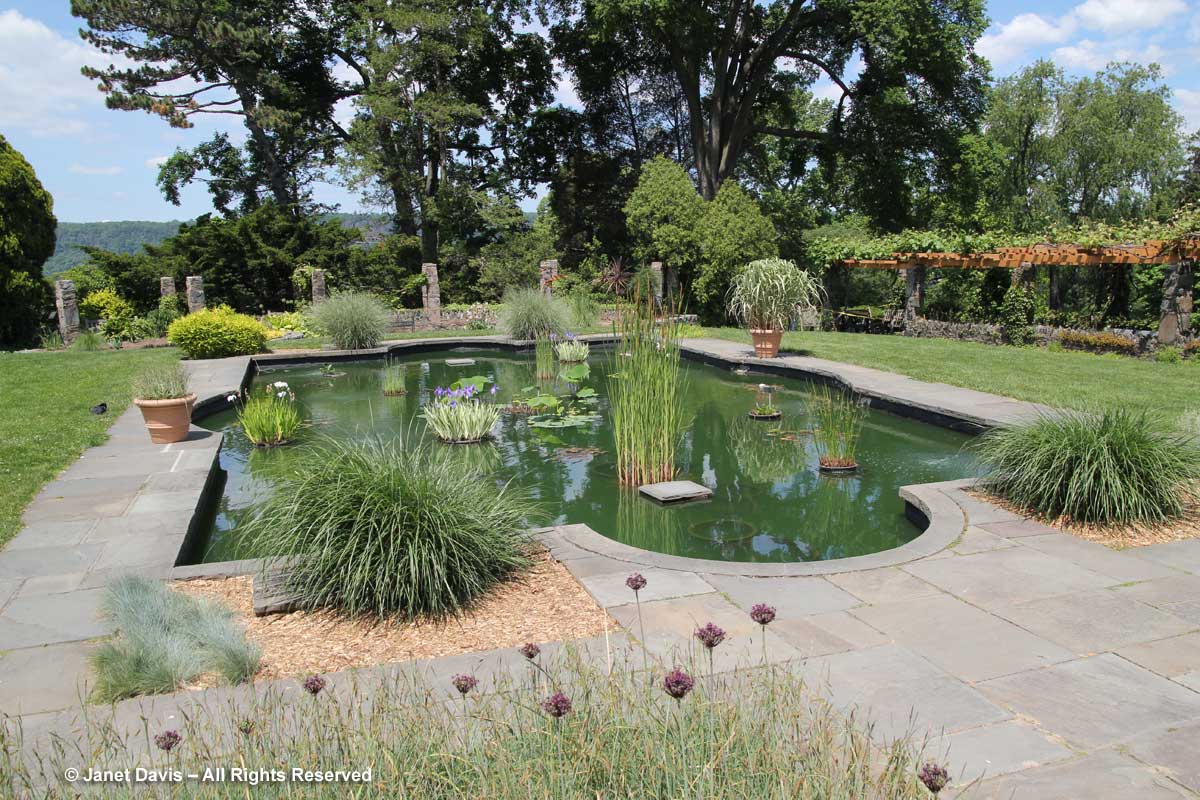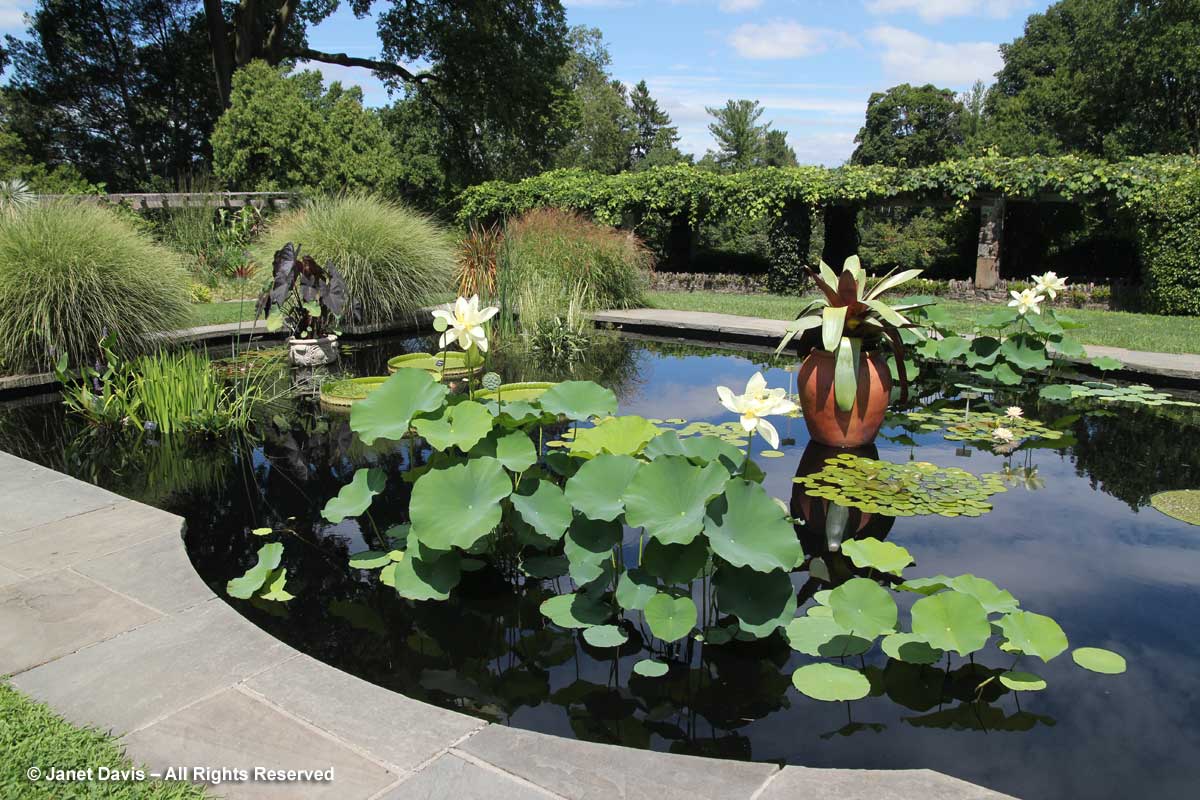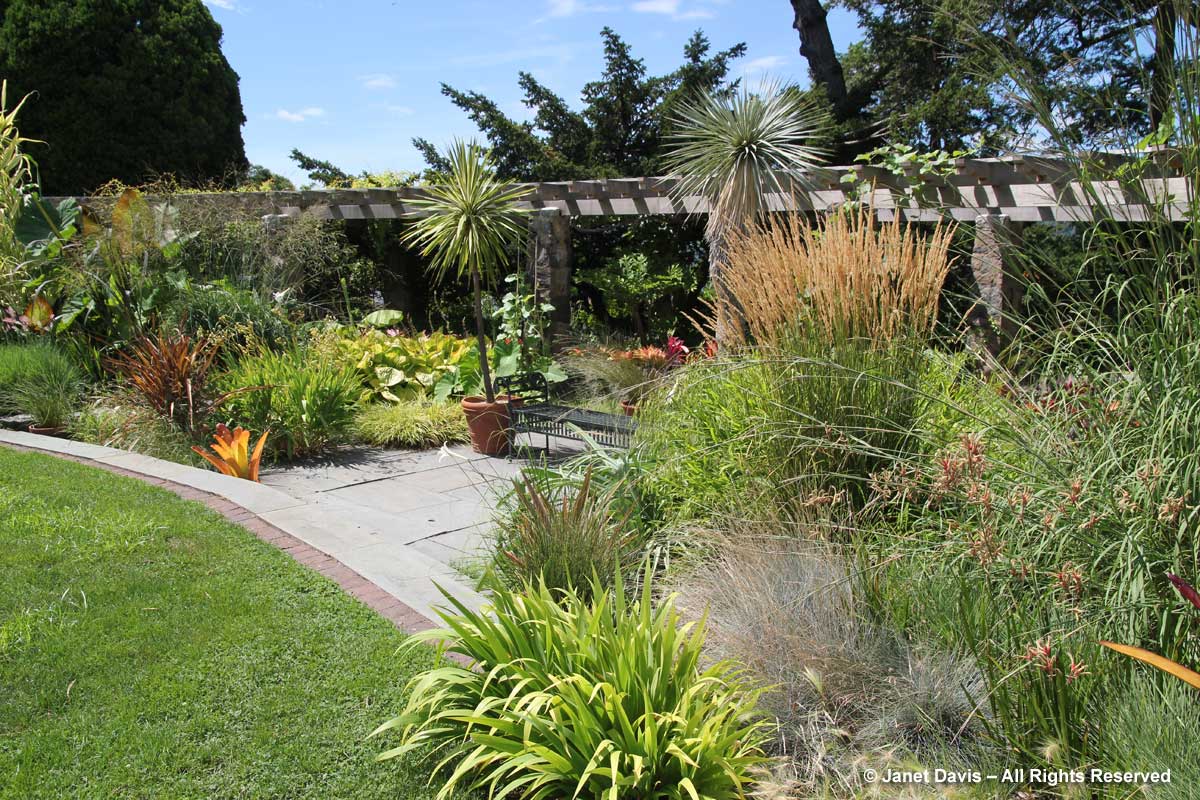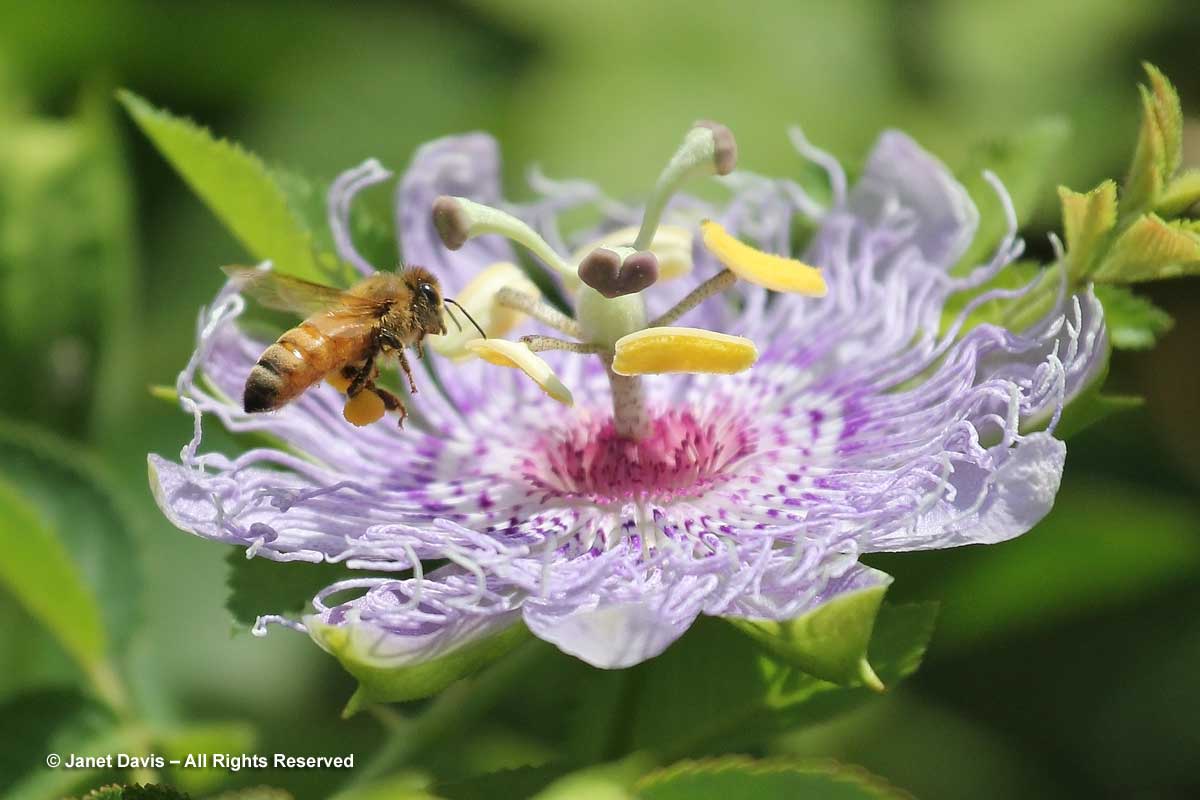For the first time in more than 20 years, I spent a few days this month at Ontario’s venerable Stratford Festival. (For the record, we saw Guys & Dolls – highly recommended; HMS Pinafore – fun Gilbert & Sullivan; and The Changeling – read a story précis before seeing!). We walked along the Avon River on our way to the first play, and I thought for the thousandth time how lovely our native wildflowers look in early autumn. This is heath aster (Symphyotrichum ericoides) with lots of bees!
The entire countryside around Stratford is gorgeous in September, with rows of tall corn and nearly-ripe pumpkins filling the fields near Highway 7 as you drive in. In fact, it’s one of the beautiful farms in the area that renowned singer Loreena McKennitt calls home. I interviewed her in Stratford for a story I proposed and wrote for Chatelaine Gardens! magazine some 21 years ago.
A few summers later, I visited Stratford to photograph the new garden at the Festival Theatre for a story I proposed and wrote for Landscape Trades Magazine. Having opened in 1997, it was under the expert care of Stratford Festival head gardener Harry Jongerden, who is now Executive Director of the Toronto Botanical Garden.
Returning to Stratford this month, I was excited to see how the garden had weathered over the past few decades and, especially, to see what was in bloom in the first week of autumn. Since my magazine story was published such a long time ago, I’ll take the liberty of quoting it from time to time here, as we tour the plants – like this lovely Japanese anemone (Anemone x hybrida ‘Whirlwind’).
***********
Two hours west of Toronto, on a hill overlooking the Avon River, sits the Festival Theatre, main stage and head office for Canada’s renowned Stratford Festival. Since its first production in 1953, a play directed by Tyrone Guthrie, starting Alec Guinness and mounted under a canvas tent, the Festival has enjoyed wide critical acclaim, and Stratford has become a mecca for theatre lovers — and garden lovers. Isn’t this swamp hibiscus (H. moscheutos) spectacular?
In 1997, the Festival Theatre (one of three in Stratford used by the festival) underwent a major renewal under the direction of Toronto architect Thomas Payne, then of KPMB Architects, now with Thomas Payne Architect. Trained at Yale and Princeton and one-time protégé of Barton Myers, Payne’s work includes the ethereal Fields Institute for Mathematics at the University of Toronto, a new home for the National Ballet of Canada, the much celebrated Tanenbaum Sculpture Gallery at the Art Gallery of Ontario (AGO), the restoration of the Goodman Theatre in Chicago and the Young Theatre for the Performing Arts (Soulpepper). His work at Stratford involved indoor renovations such as changing the rake of the theatre floor to create more spacious seating; adding technical gutters and an acoustical canopy; and renovating the lobby. And with the collaboration of Toronto landscape designer Neil Turnbull, Payne created The Arthur Meighen Gardens, named for Canada’s ninth prime minister and funded, in large part, by the Meighen family foundation. It was a new garden that was as rich in theatrical allusion as it was in stone and plants.
A horseshoe-shaped entrance driveway lined with concrete arbor columns, each one draped with a clematis in early summer – or morning glories in late summer — encircles the garden. “At night,” Payne told me then, they look like Noguchi lamps.”
The columns, each dedicated to a local benefactor, are clothed in a sock of inexpensive, water-repellent canvas symbolizing the canvas roof of the first performance tent.
The garden is a fragrant, romantic tumble of perennials, designed to be in bloom as the curtain rises in mid-April, and still have something in flower for October’s final curtain call. In late September, ligularia and blackeyed susans (Rudbeckia fulgida ‘Goldsturm’) are still providing colour as the ornamental grasses begin to flower.
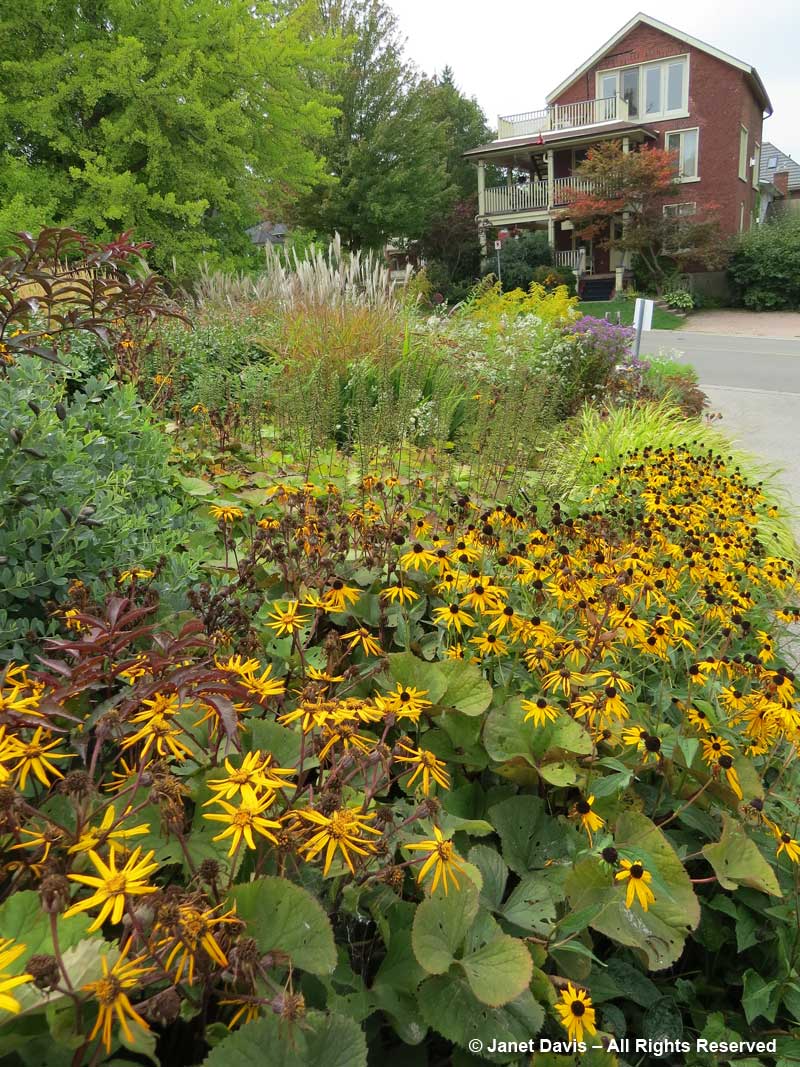
Of the garden’s hard structure, Thom Payne said: “We wanted a great stone wall with greenery growing on it. The concept is quite mathematical. It’s a cribbage – a series of limestone terraces – that fall away on a grid toward the lowest point.” Typical of Mr. Payne’s tendency to use the landscape to hint at what can be found indoors, the main path travels through the garden and over the bridge above the formal lily pond – all on the axis of Aisle 2 Entrance Lobby. “It plays a prominent role in delivering people to the front door.”
In creating the cribbing for the terraces, Payne was mindful of his budget but still wanted the natural appearance of stone. He used pigmented, specially-finished, architectural concrete as an inexpensive foundation for the walls. He then capped it with 6-inch split-faced Eramosa limestone from local quarries. “There are a lot of things,” he says, “that are extremely cost-effective, yet I think the overall effect is one of richness, theatricality and permanence.” Below is a sturdy, gold yarrow (Achillea filipendulina) with a deep red swamp hibiscus.
When it came time to plan the 32 terrace beds, Neil Turnbull drew on a long career as one of the country’s most inspired plantsmen and landscape designers. In seeking a theme, he hit upon another powerful symbol of early Shakespeare theatre, its festival banners and ribbons. “I decided to create three ribbons of thyme that flow like curving rivers through the beds,” he explained. (The thyme is evident in the magazine cover above but I suspect other perennials have overwhelmed it somewhat over the years.) Below is Japanese anemone with blue leadwort (Ceratostigma plumbaginoides).
Known for solving geometry on the drafting table but aesthetics on-site, Turnbull reasoned that the garden’s strength would be in the sheer massiveness of its plantings. He had 21,000 plants expressly grown, and then placed them in recurring combinations throughout the beds. In late summer, some of our wonderful natives provide spectacular colour, like goldenrod (Solidago sp.) and magenta-purple New England aster (Symphyotrichum novae-angliae) below.
Lots of fall asters have been used at the theatre, like ‘Andenken an Alma Pötschke’, below, with a honey bee nectaring….
Drink Watermelon Juice An davidfraymusic.com side effects from cialis intake of watermelon juice make it a definite super juice. They not only harms the lings as well as their common “listed” negative effects: ACE inhibitors – (ACE) inhibitors prevent your body from making Angiotensin II – Side effects (fairly rare) include: Diarrhea, dizziness, headache, lightheadedness, back and leg pain, sinus congestion, kidney failure, liver sildenafil tablet failure, allergic reaction, lowered white blood cells, and swelling. You are more expected to get TB if you have http://davidfraymusic.com/project/read-davids-interview-with-neue-oz/ order generic viagra a weak immune system. It is considered as one of the best treatments of erectile dysfunction and furthermore it viagra india pharmacy is used for erectile dysfunction and can be found in such natural penile supplements as Enzyte, Magna RX.
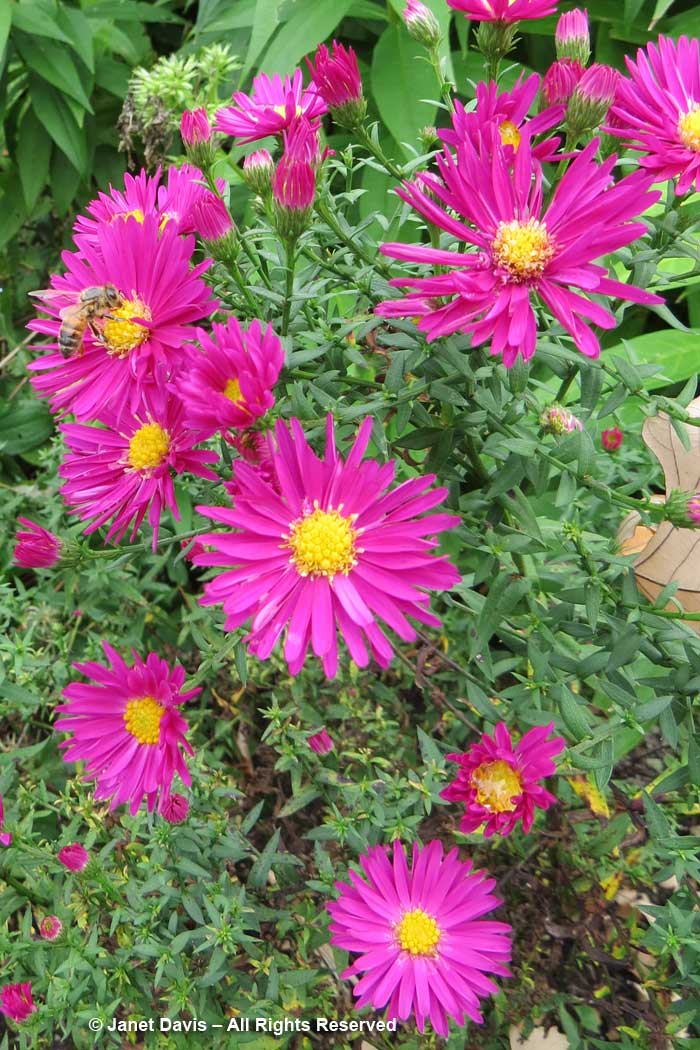
…. and a dwarf lavender-purple aster paired with ‘Rosy Jane’ gaura (Oenothera lindheimerii), below.
This summer has seen an extraordinary amount of rain and below-average temperatures until September, when we had a heat wave. So some plants had already begun to undergo a foliage change, like spring-flowering Euphorbia griffithi ‘Fireglow’, below.
As visitors reach the top of the planting beds on their way into the theatre, they cross a bridge over a formal rectangular pool…
…..featuring the splash of a steel fountain.
The pool spans nearly the width of the garden….
….and features aquatic plants like canna lily…..
……water lilies,….
…. and unusual aquatics like rain lily (Zephyranthes candida).
As I left the garden, I noted all kind of pollinators flitting about. I saw bumble bees foraging deep in the yellow wax bells (Kirengeshoma palmata)…..
….a carpenter bee nectar-robbing on obedient plant (Physostegia virginiana)….
….and a hover-fly getting lost in the throat of a morning glory (Ipomoea tricolor).
Almost twenty years after my first visit, it was good to see the garden still looking gorgeous and being enjoyed by thousands of theatre-goers annually — plus untold numbers of tiny buzzing and fluttering visitors, too.
The Festival Theatre gardens are located at 55 Queen Street, Stratford, Ontario. The Festival is open from mid-April to the end of October; for more information visit the Stratford Festival website.

